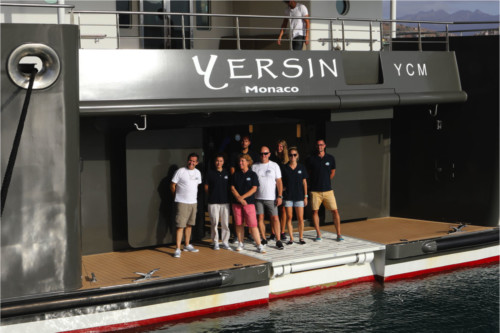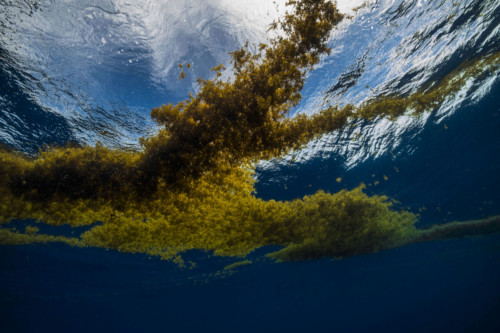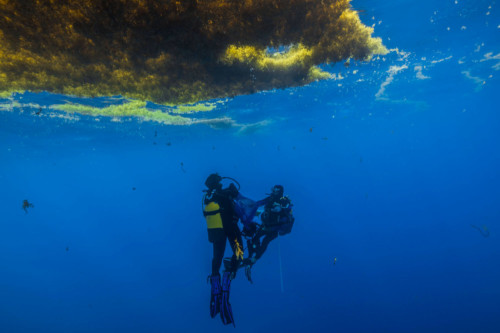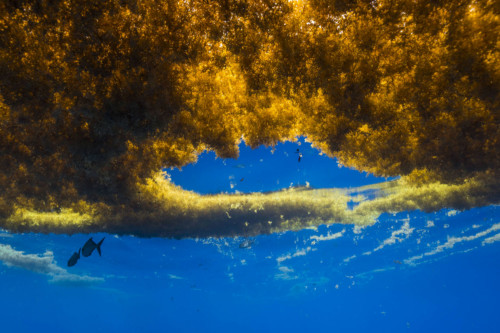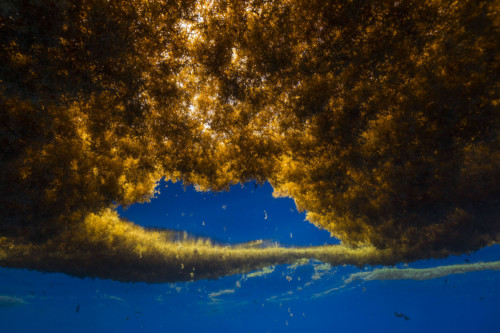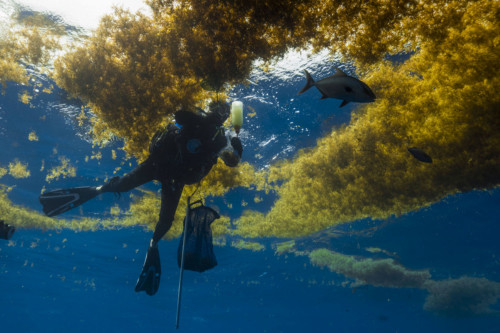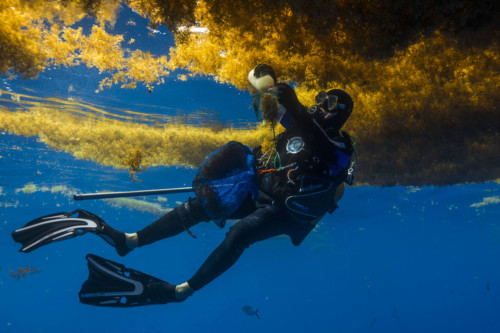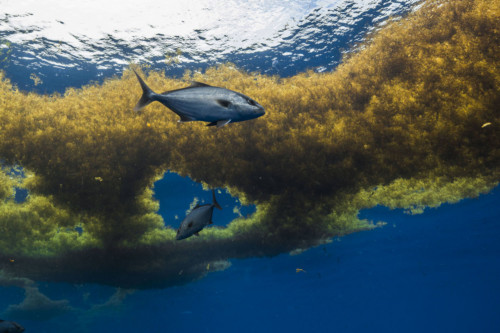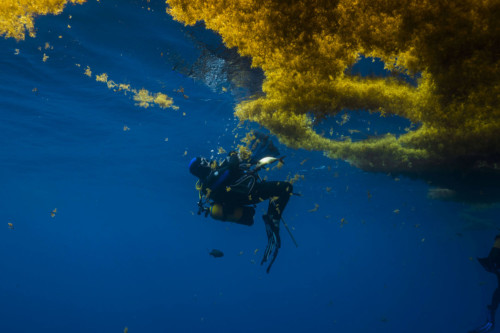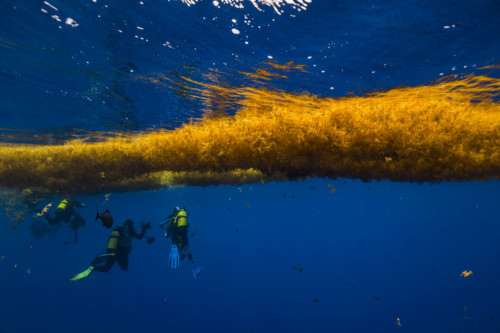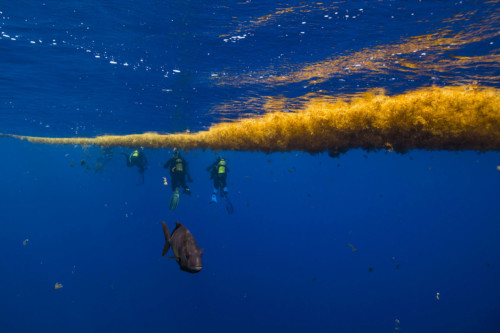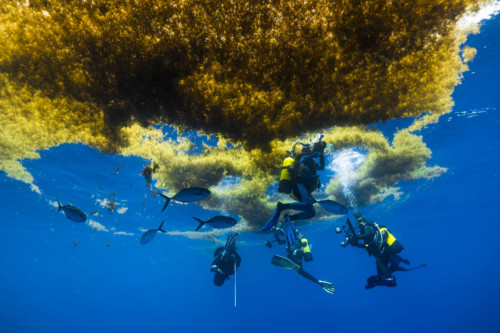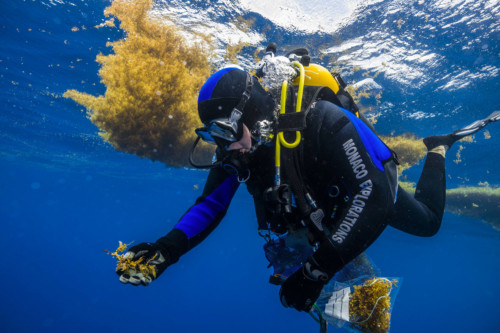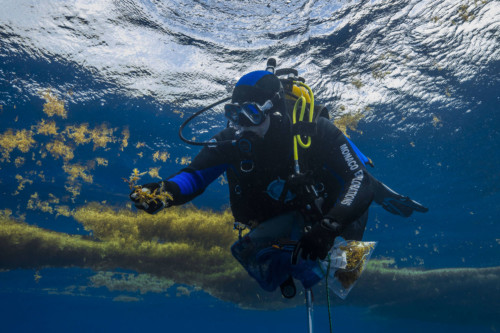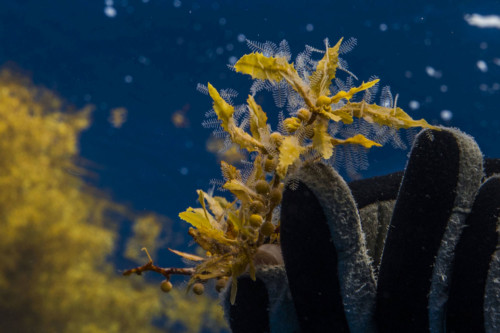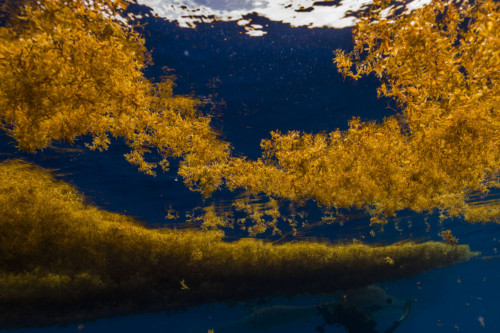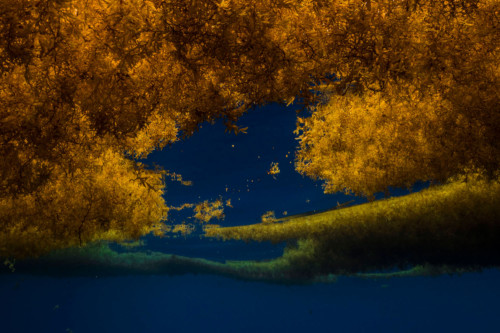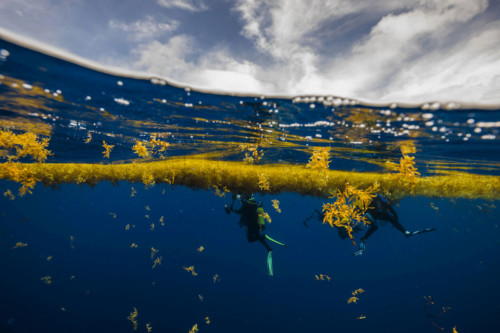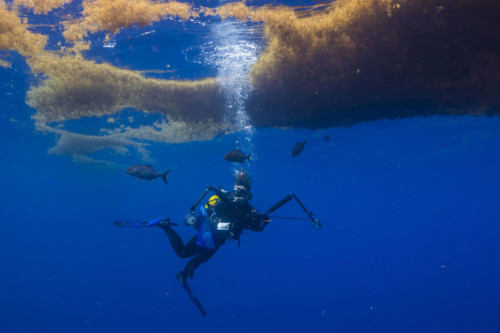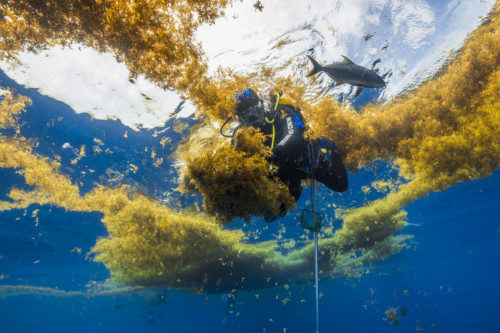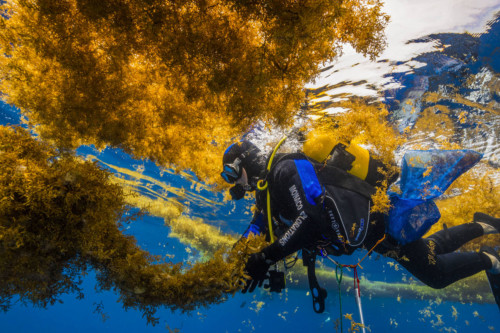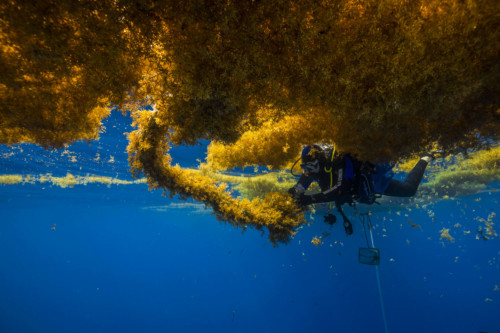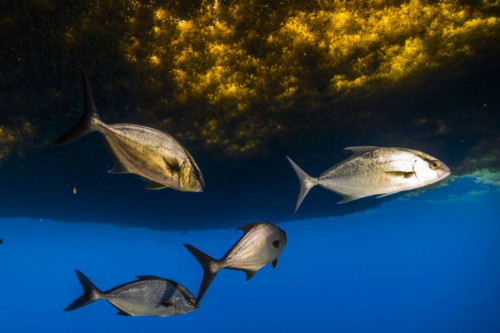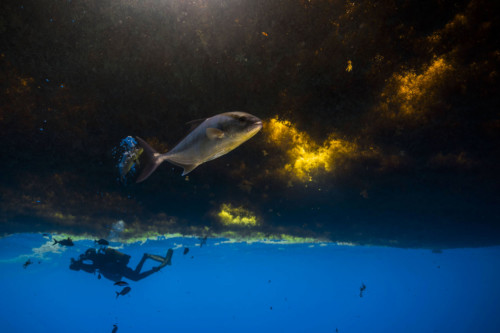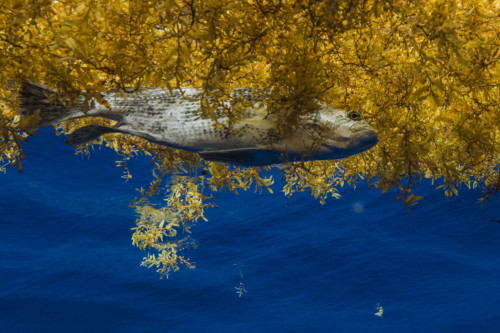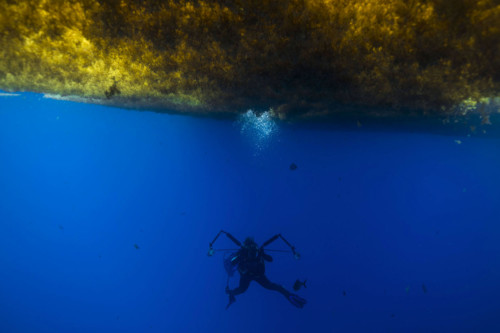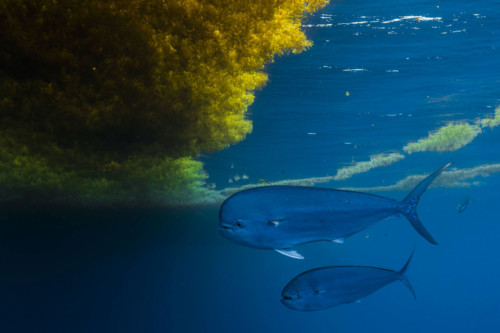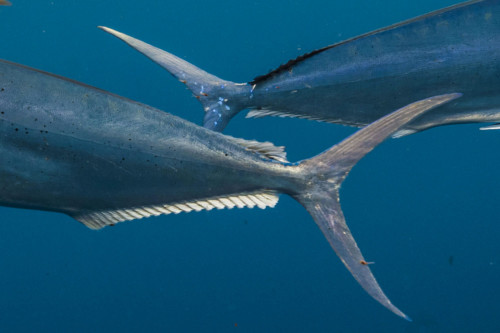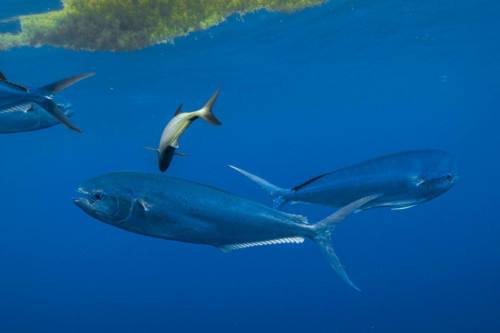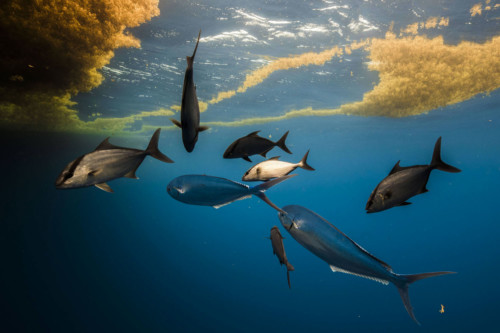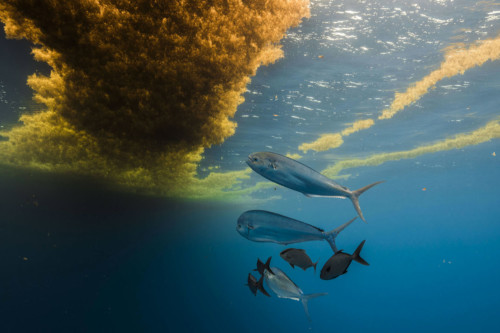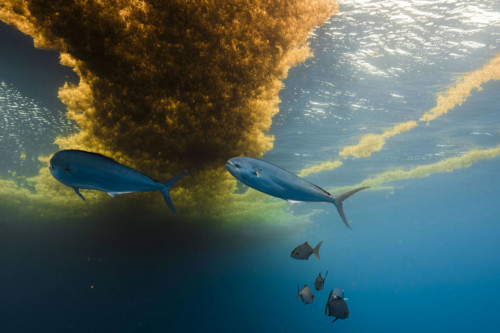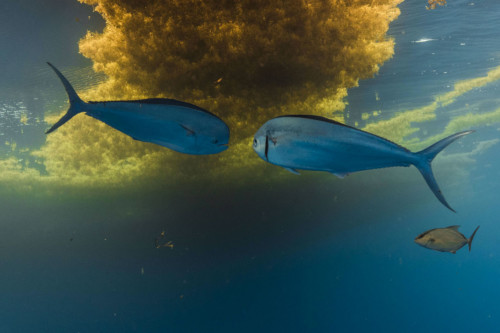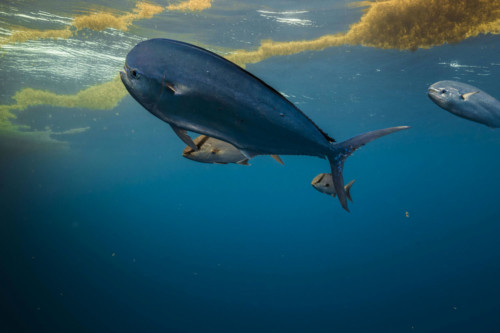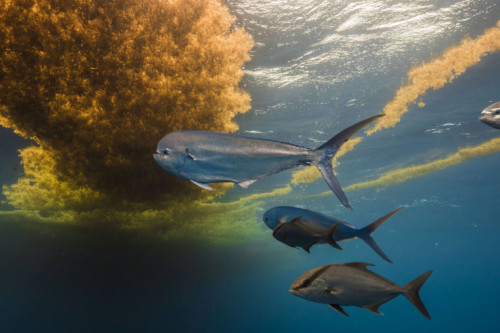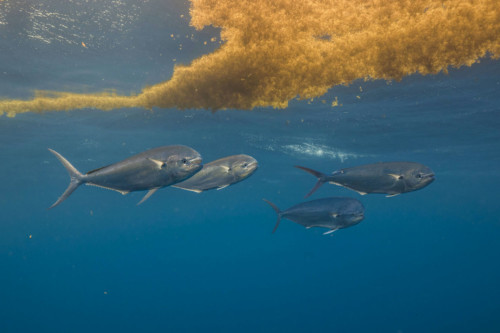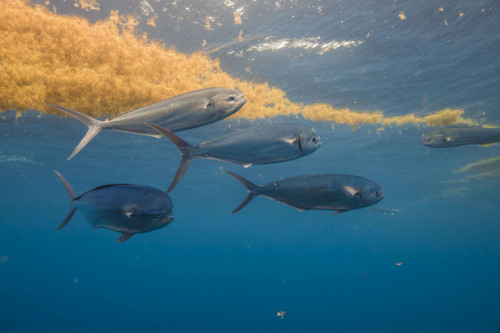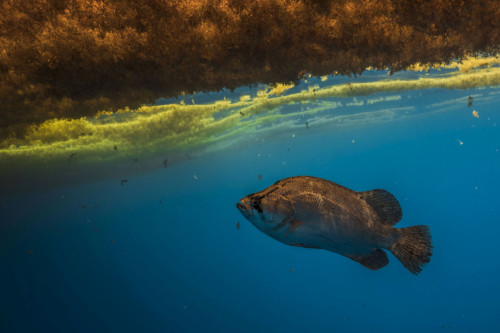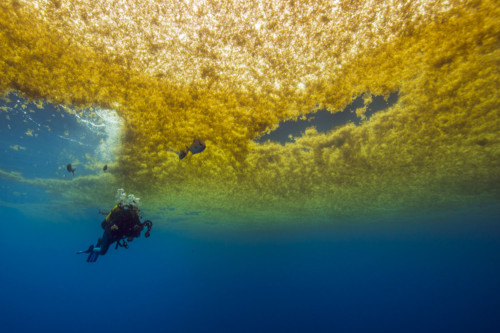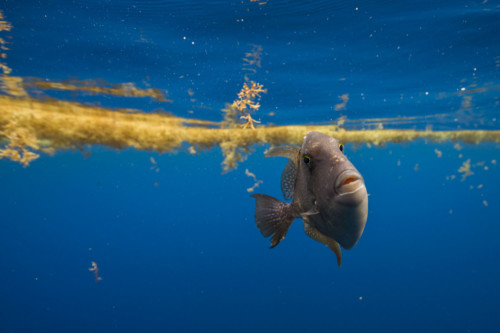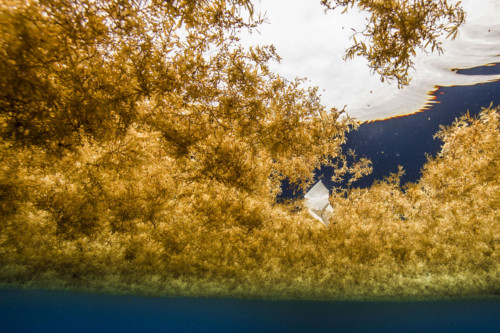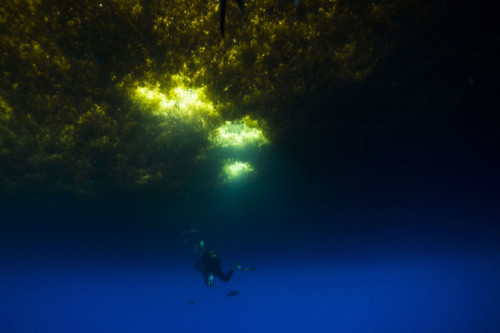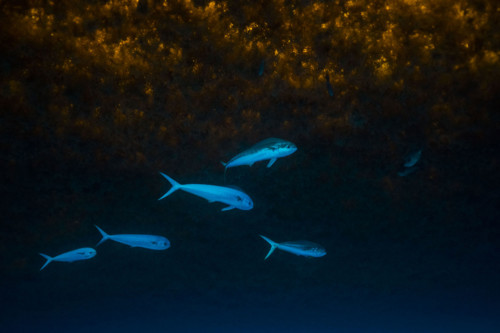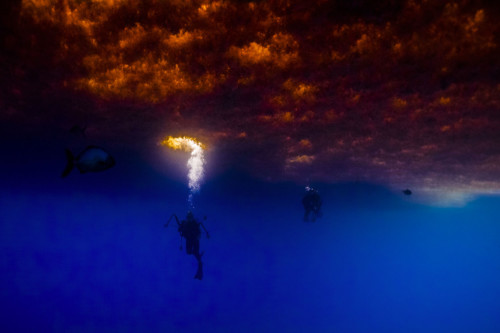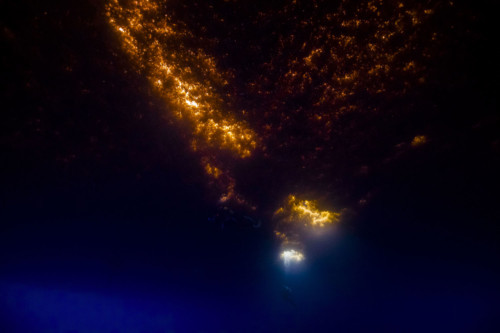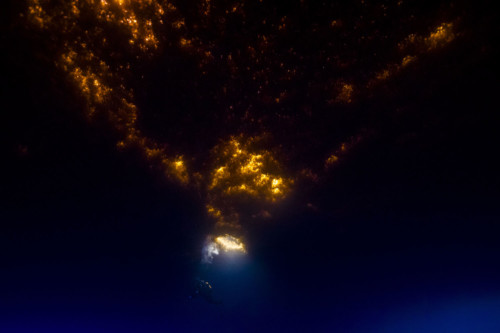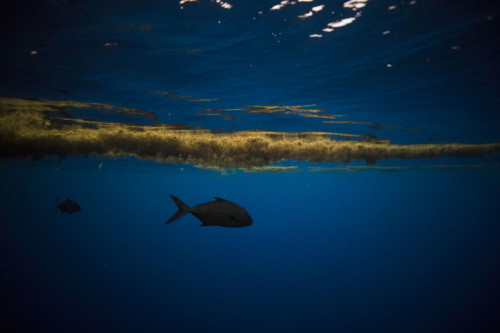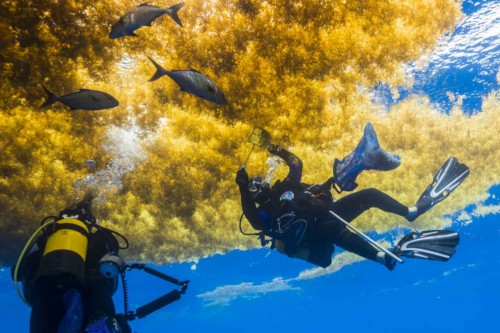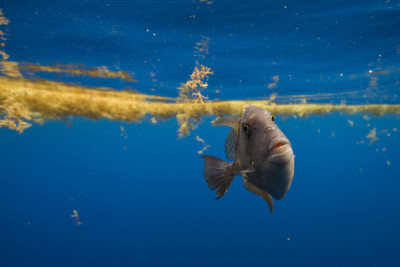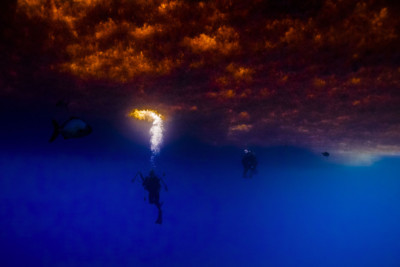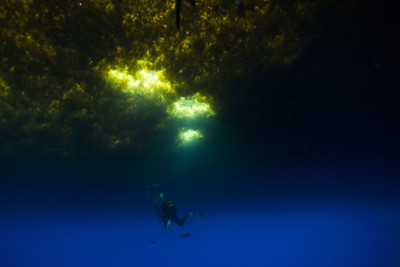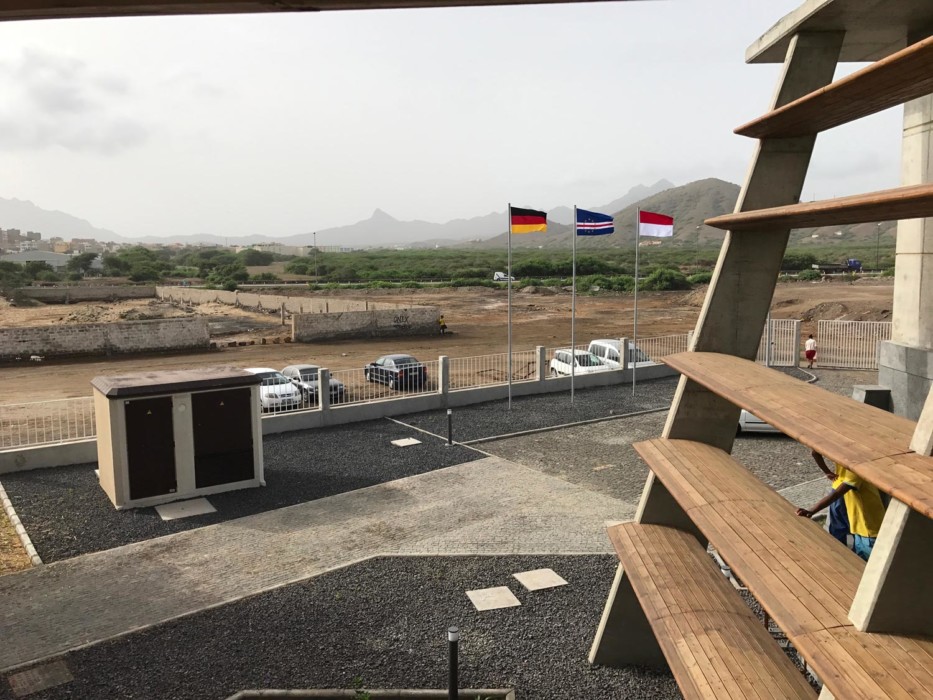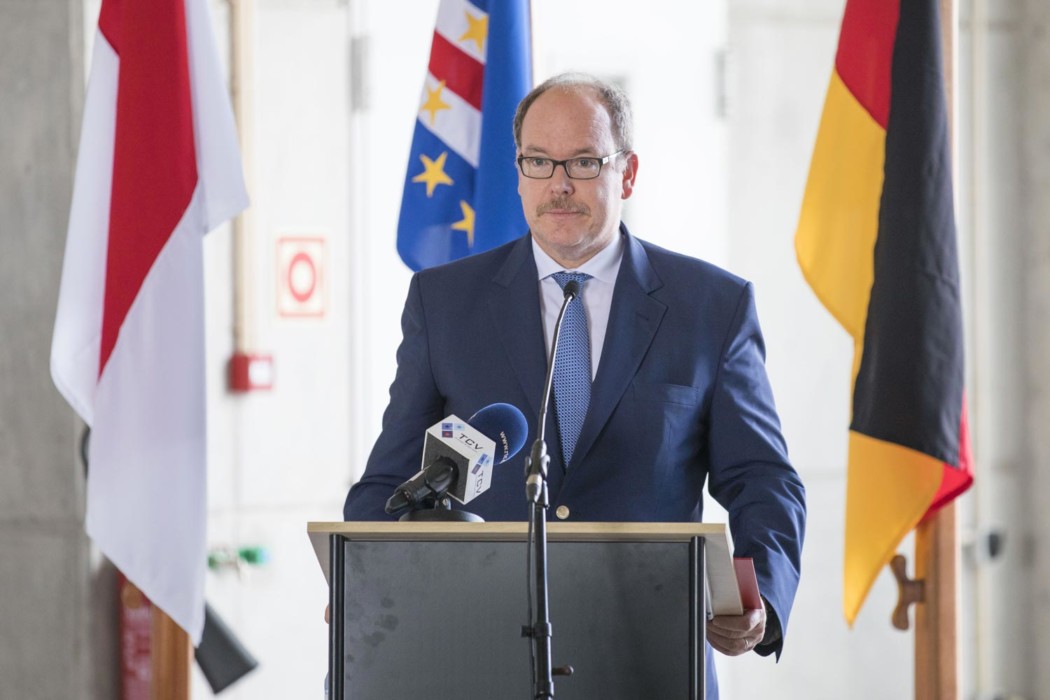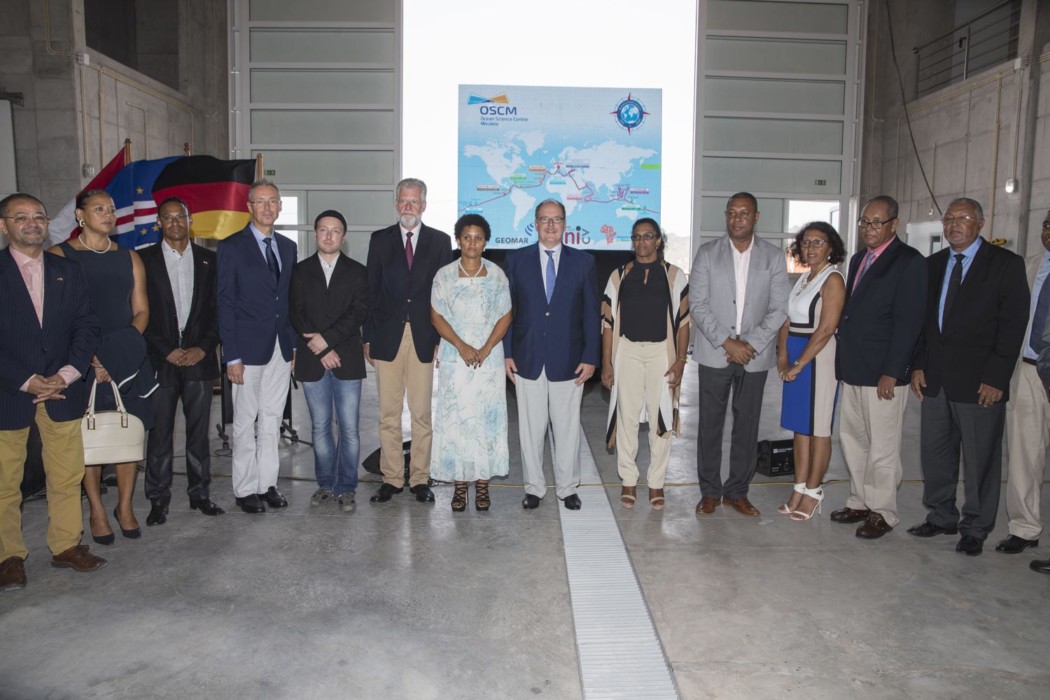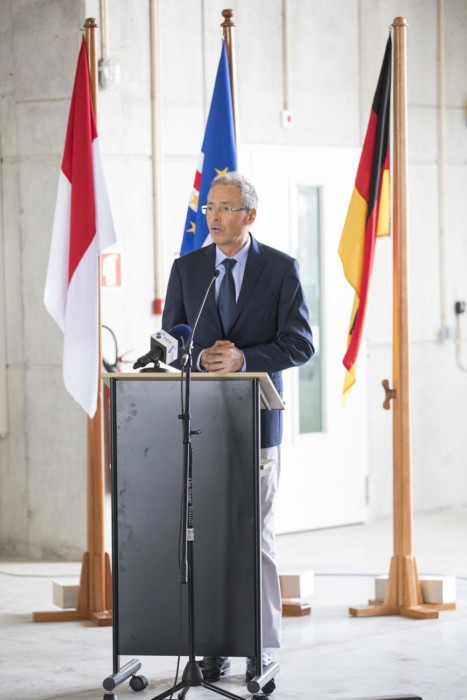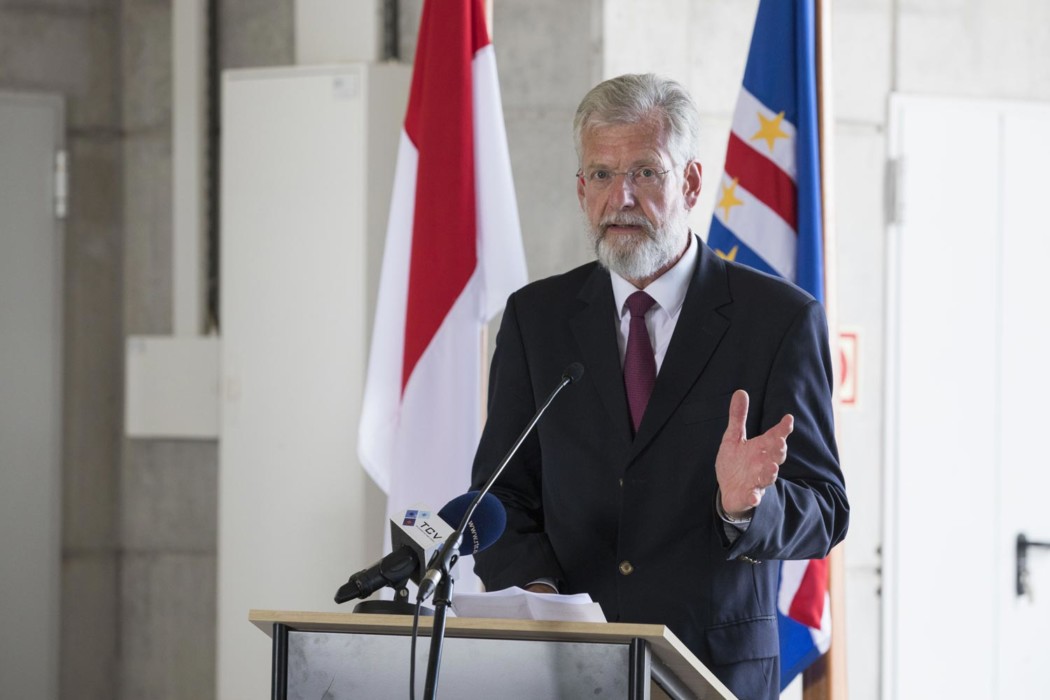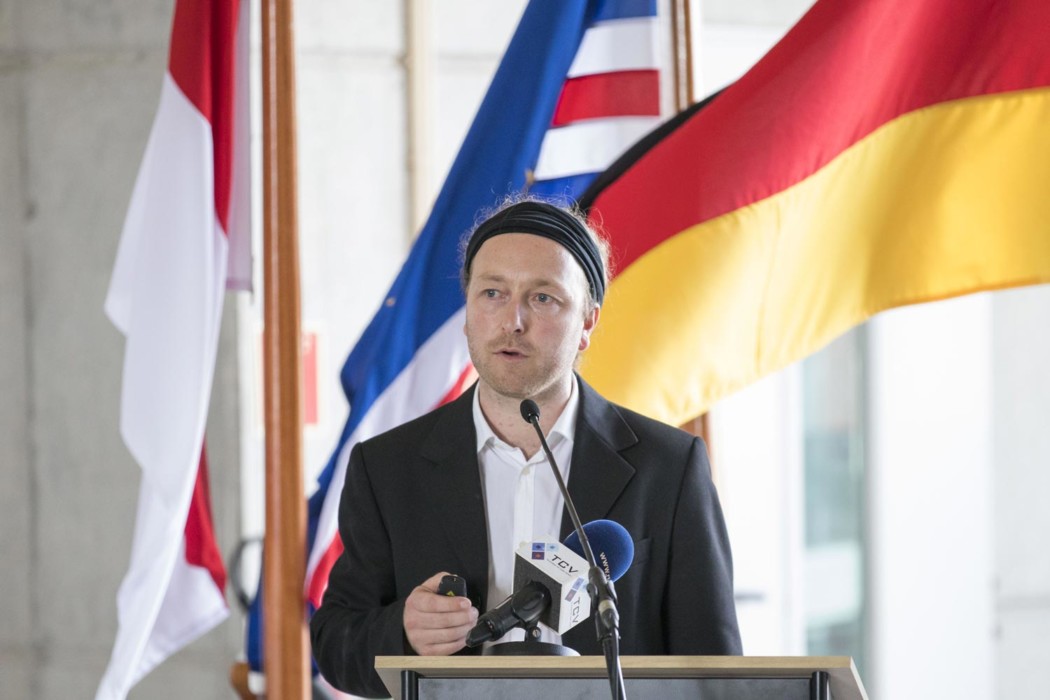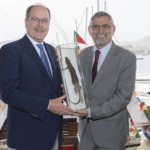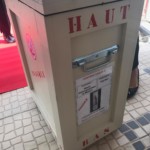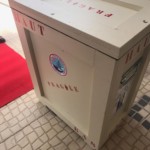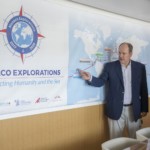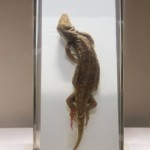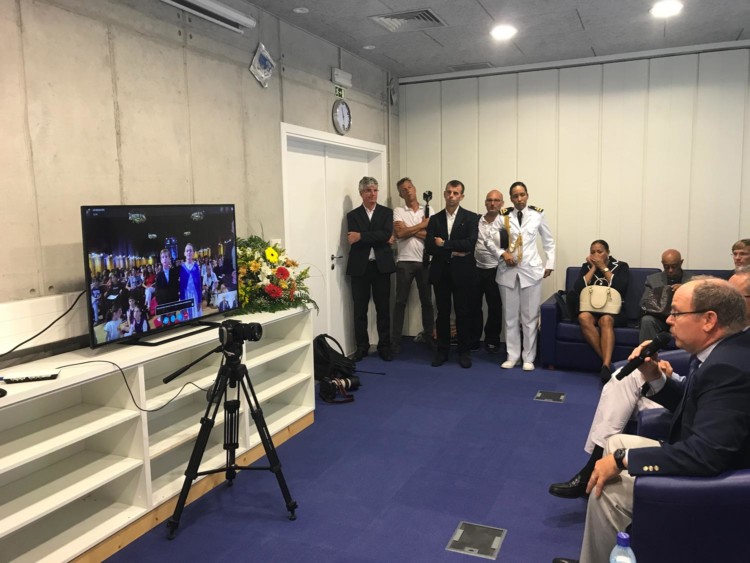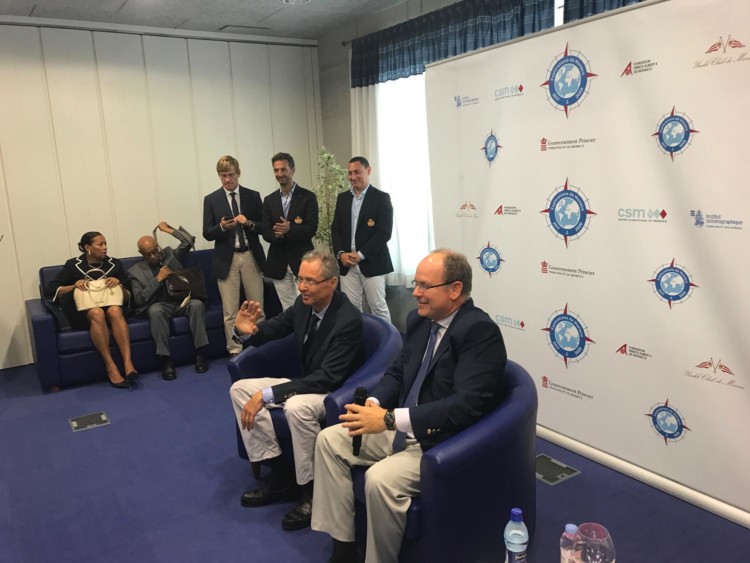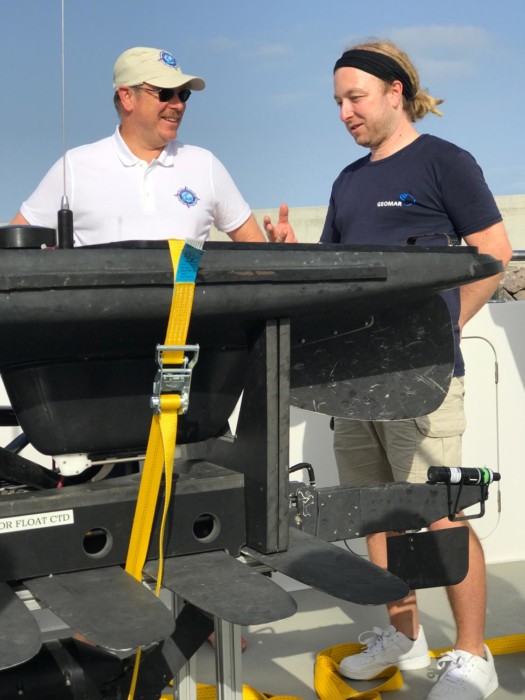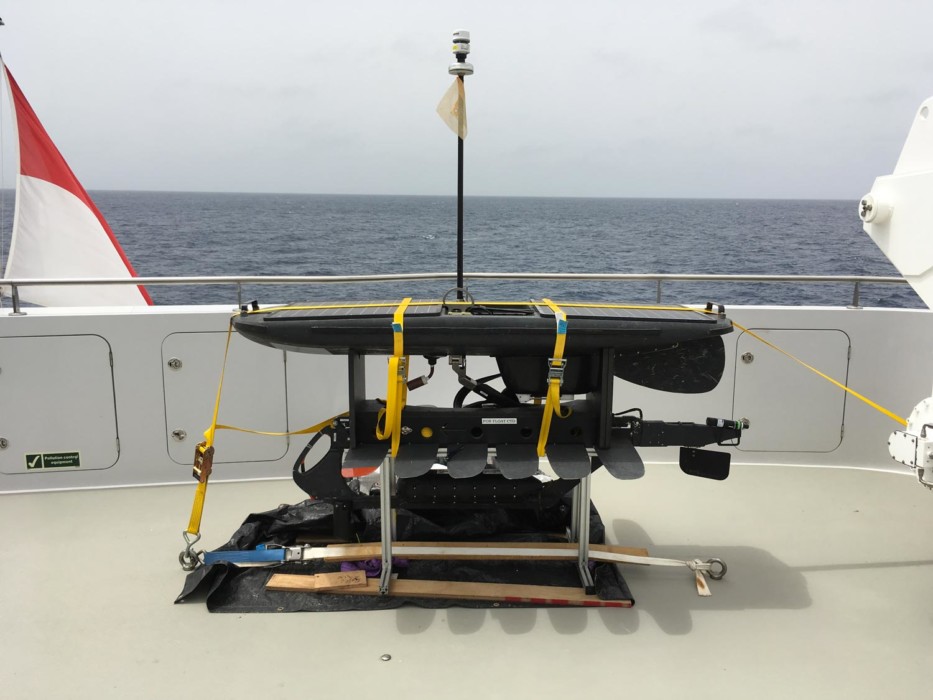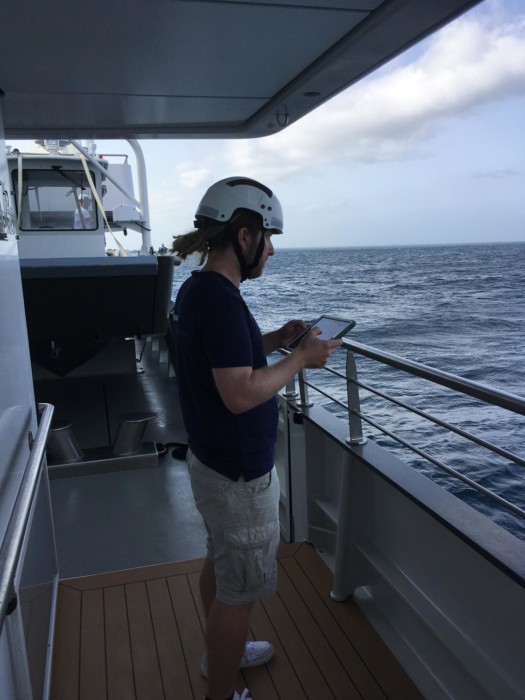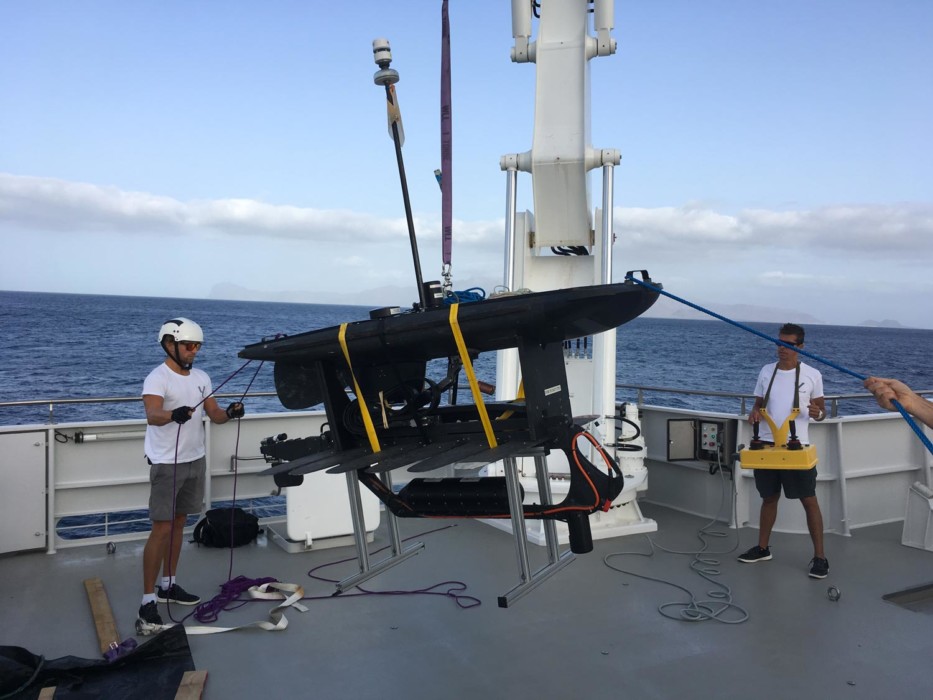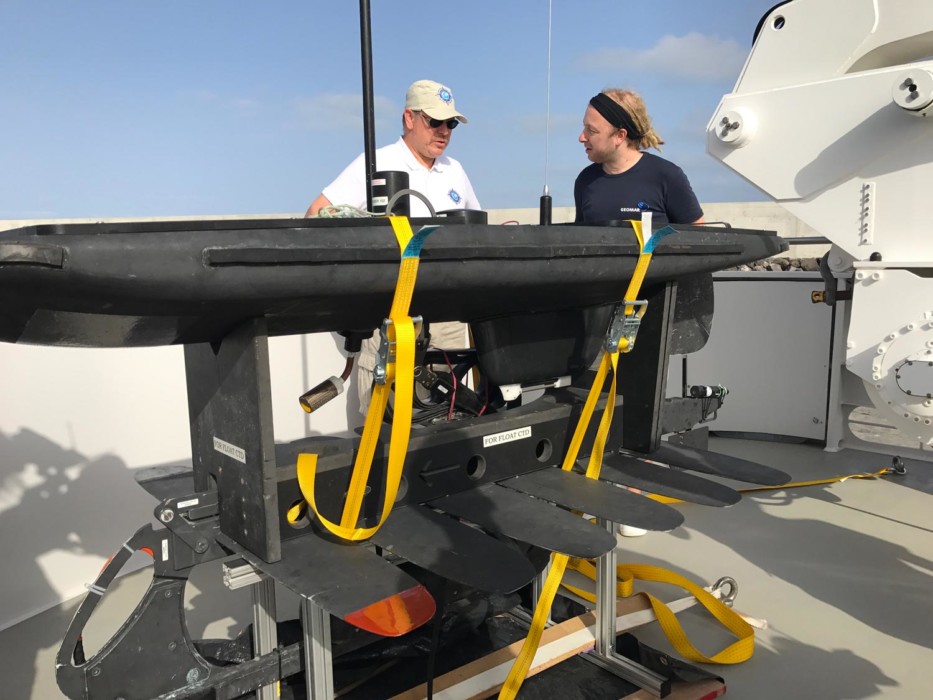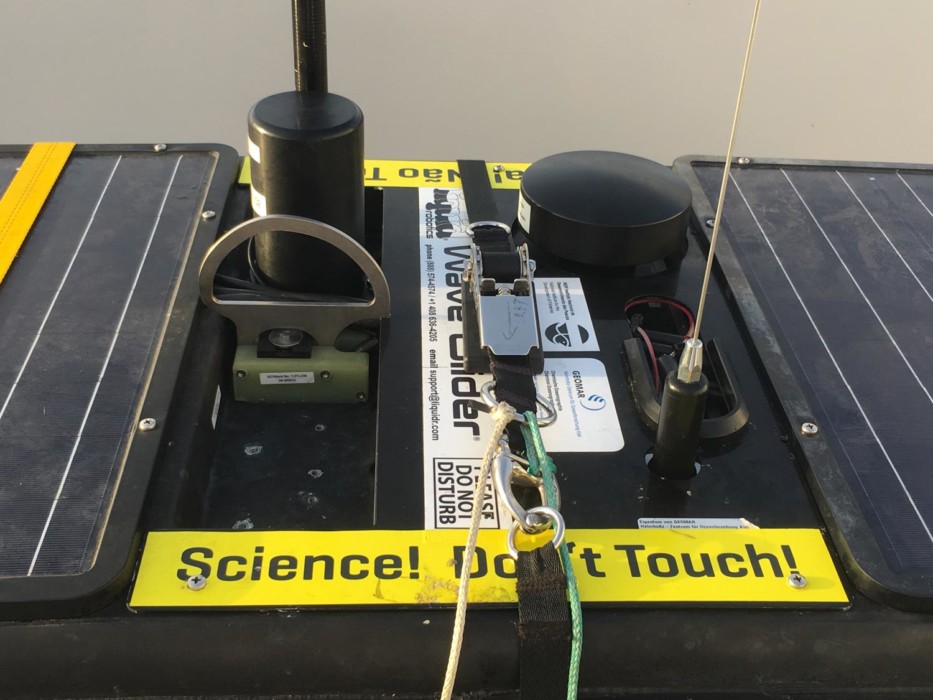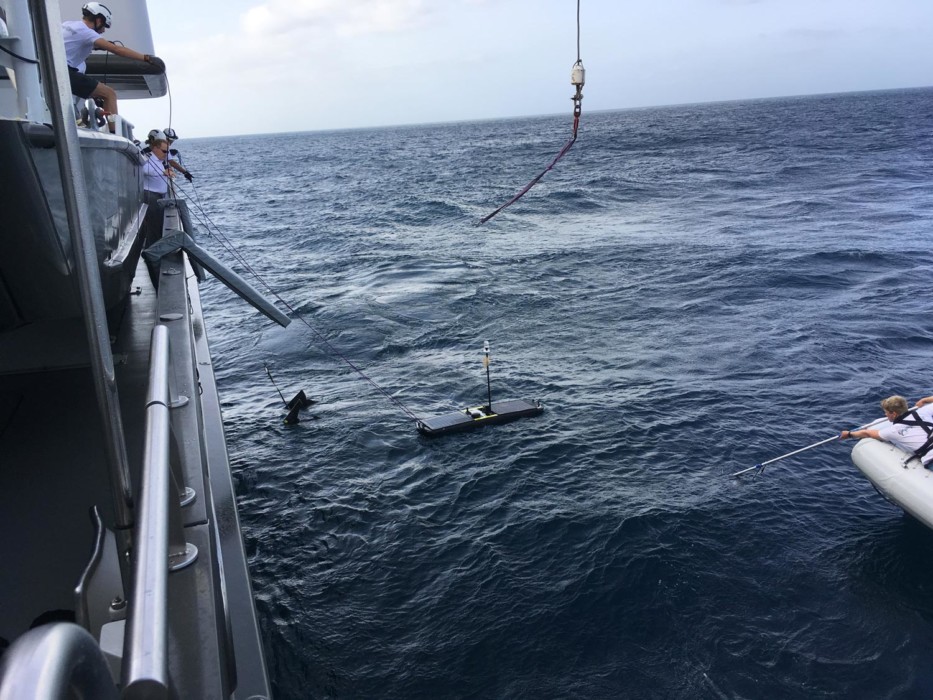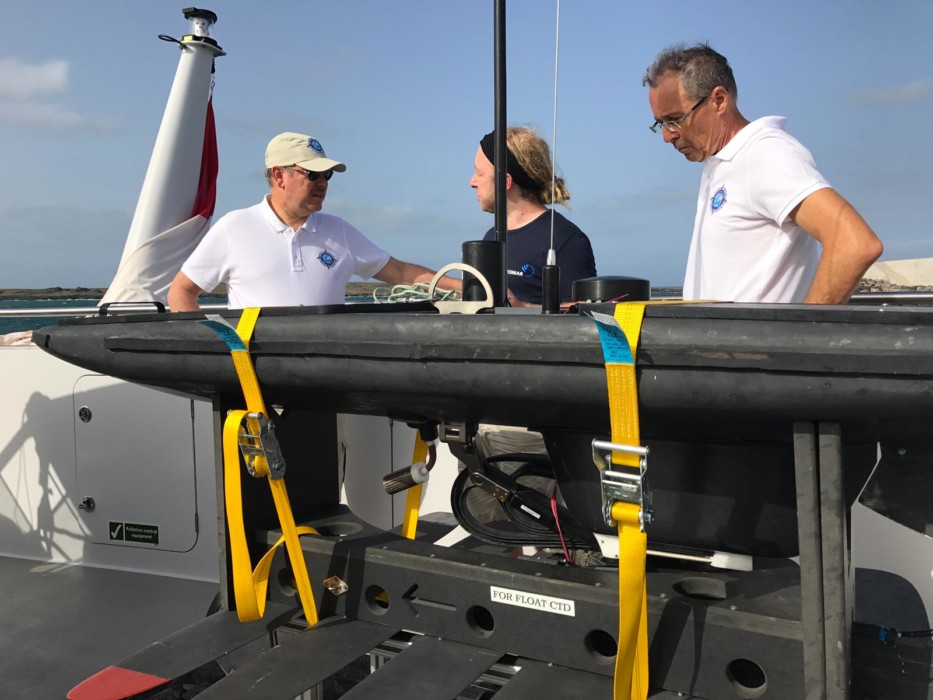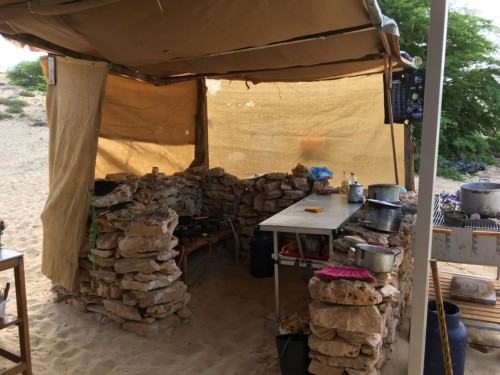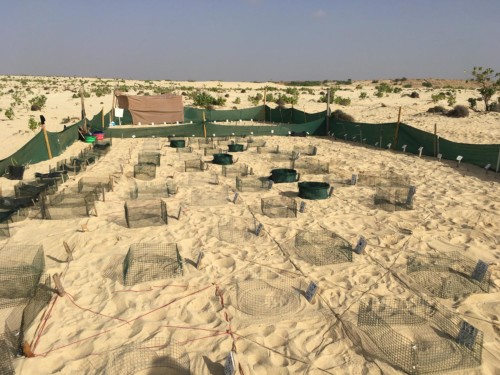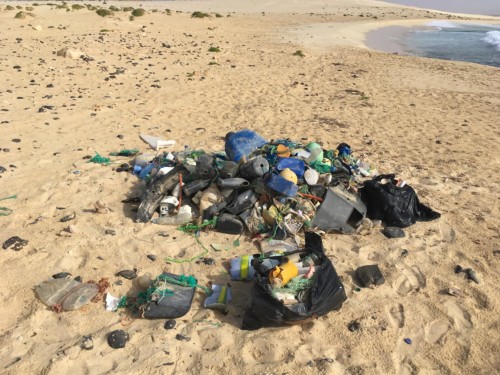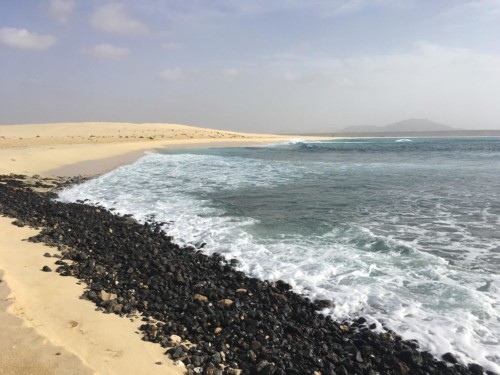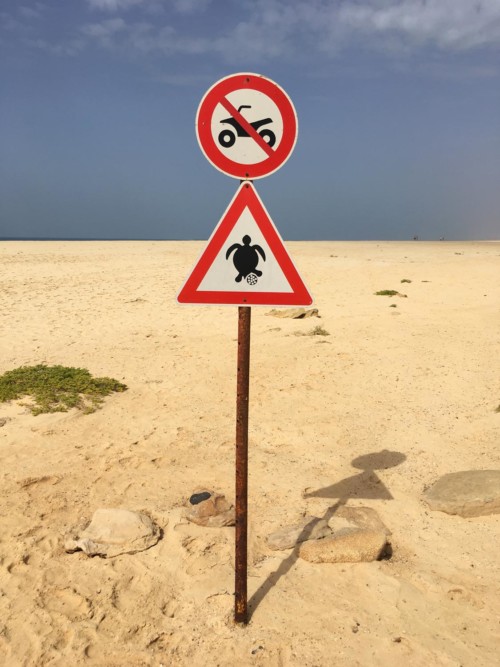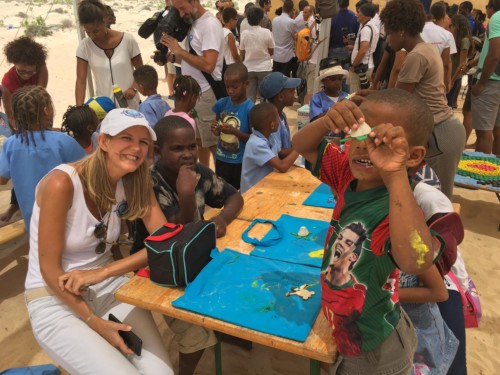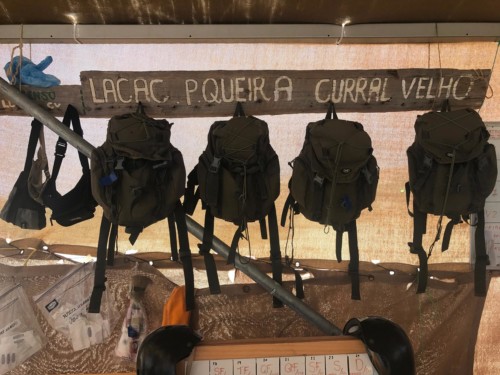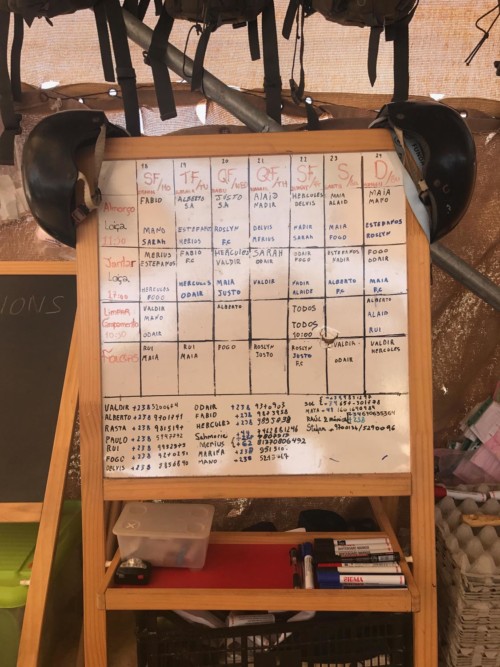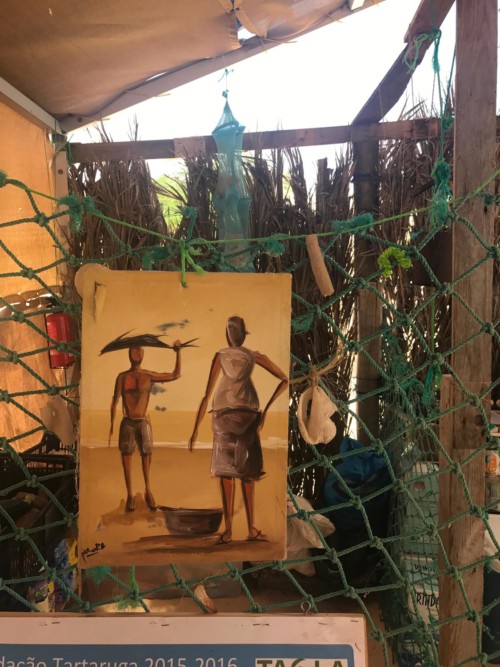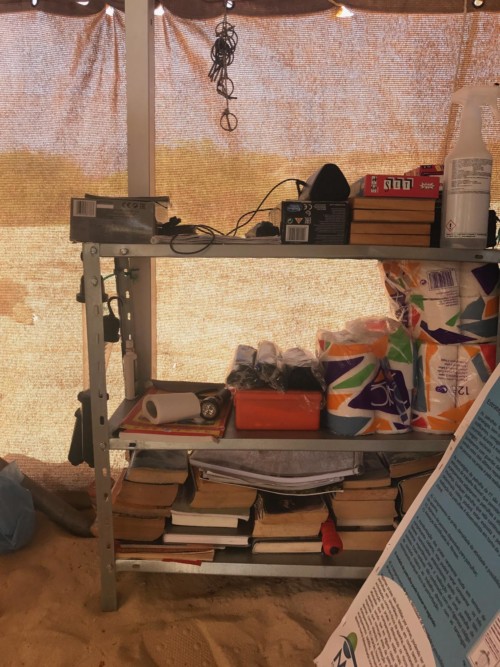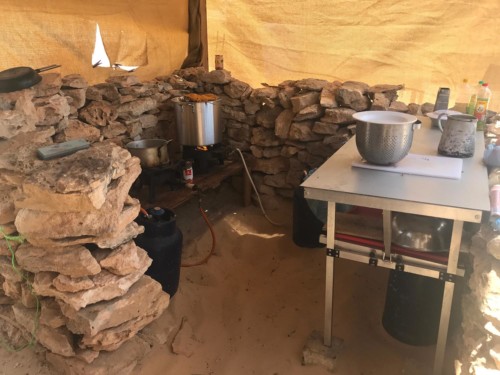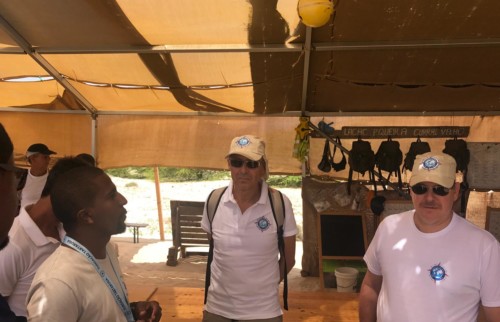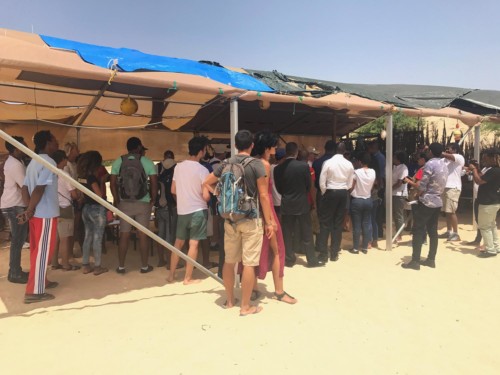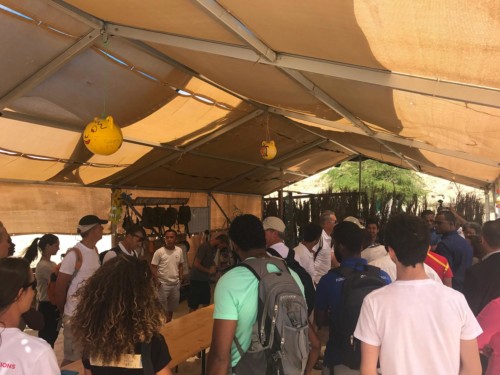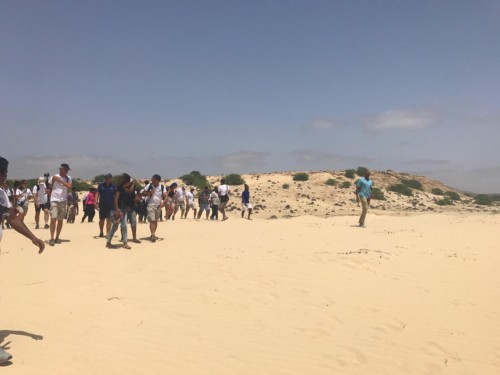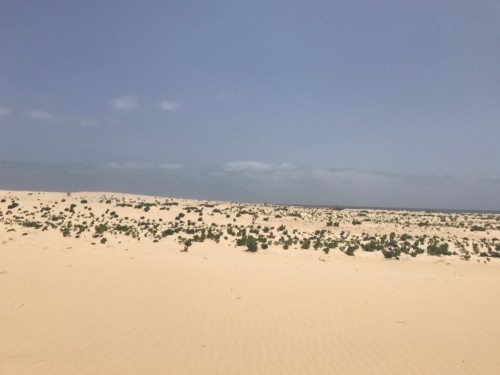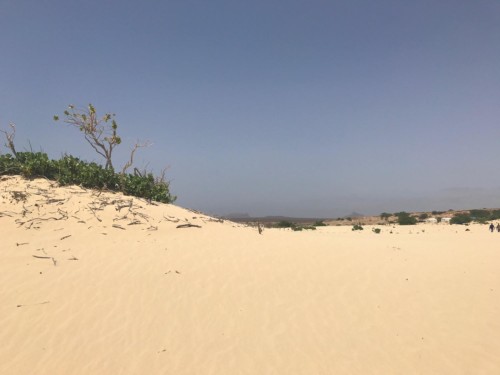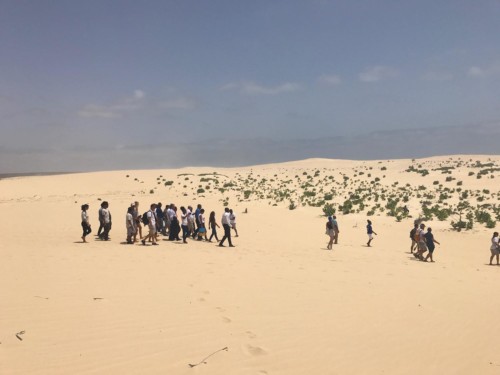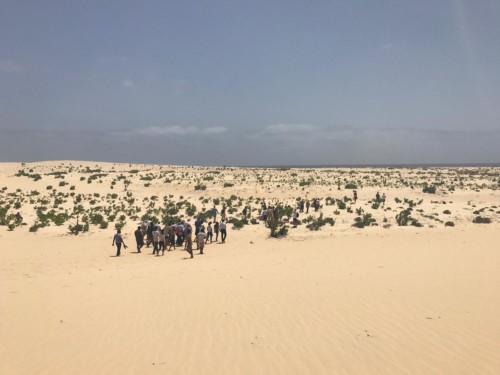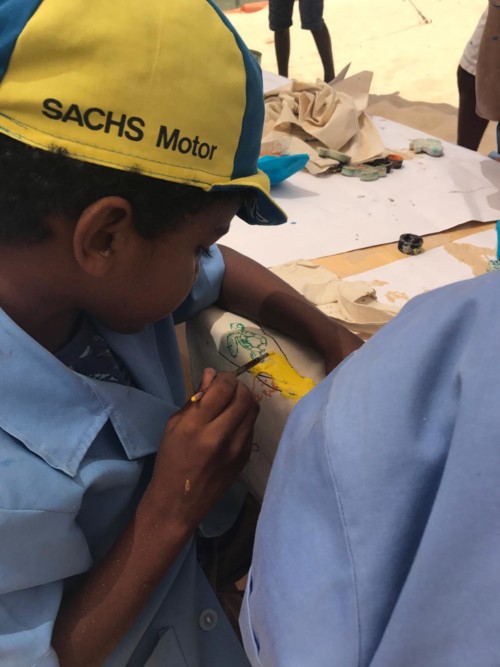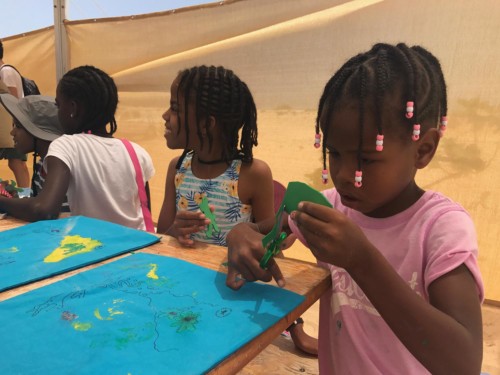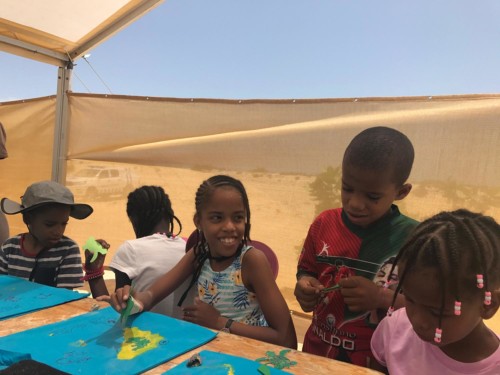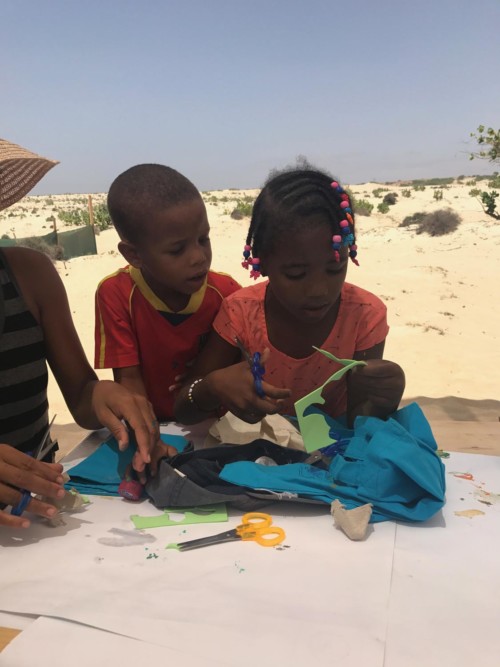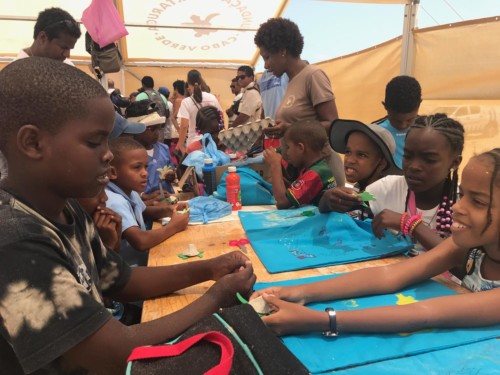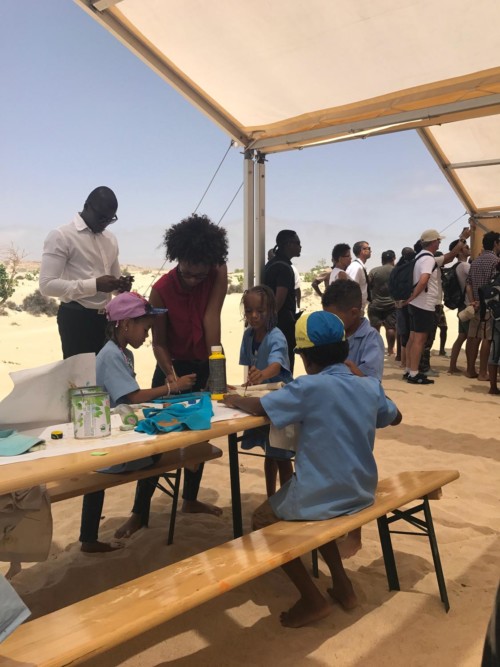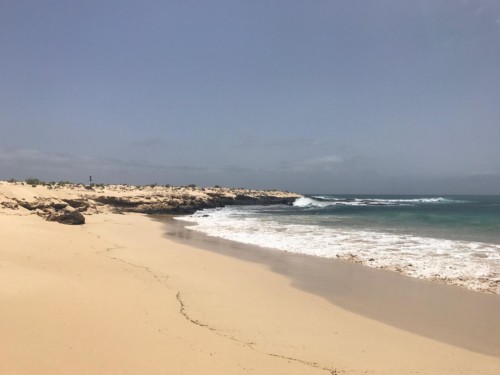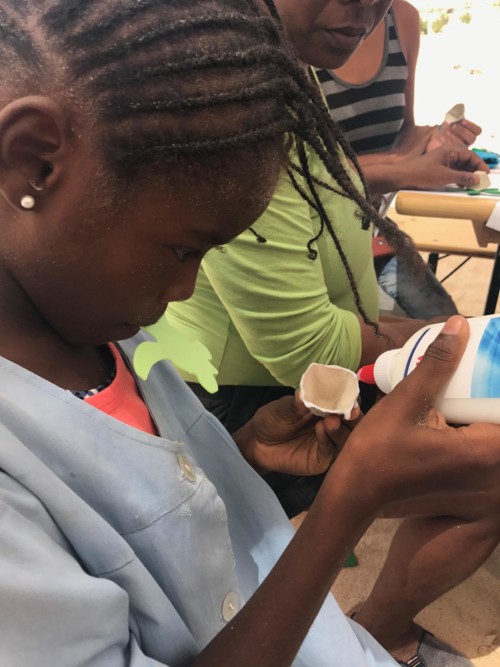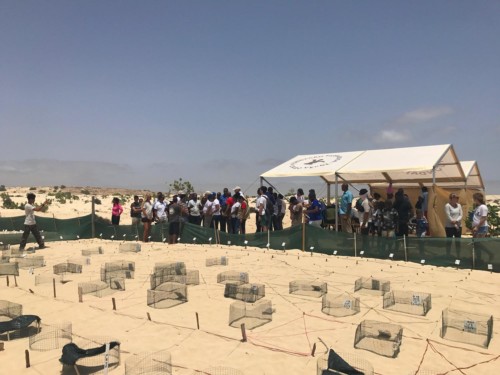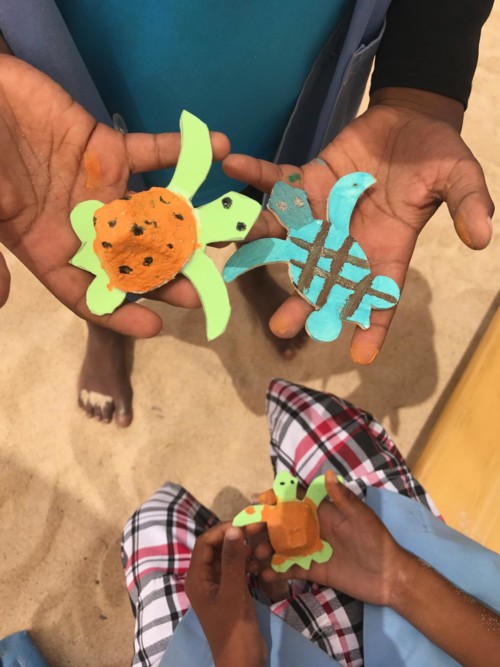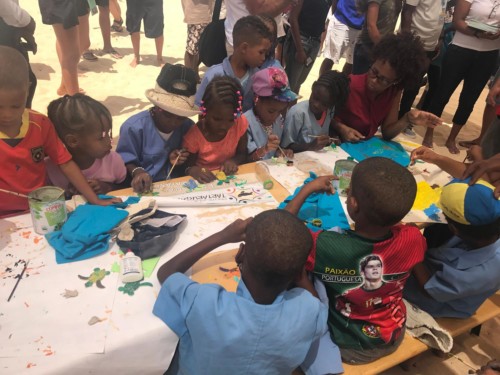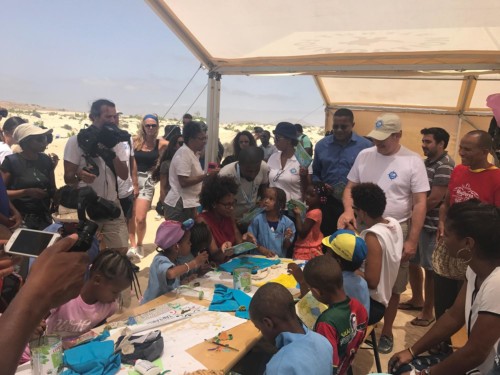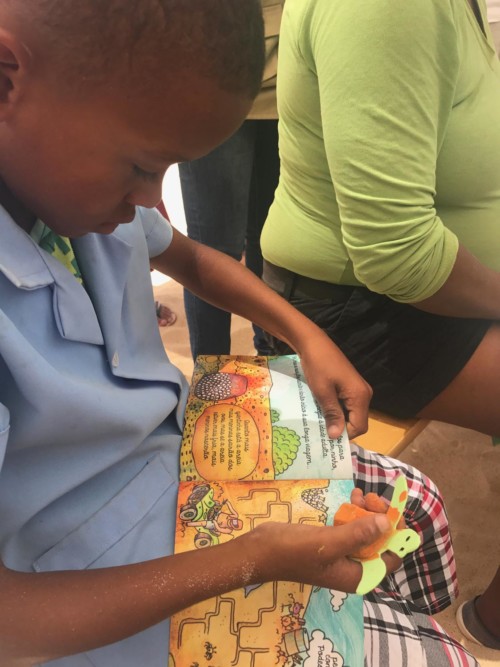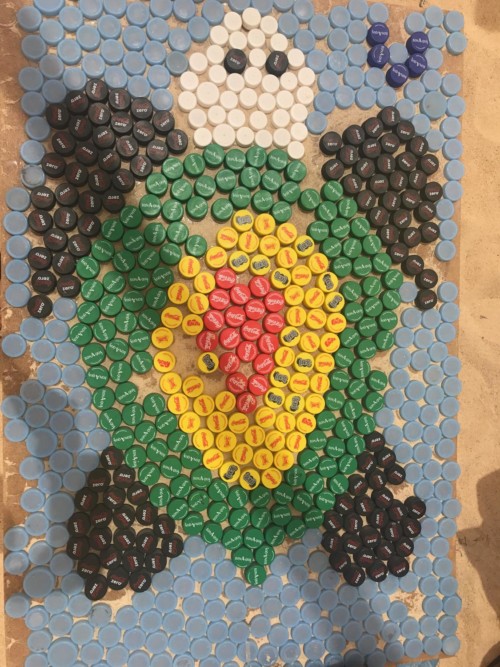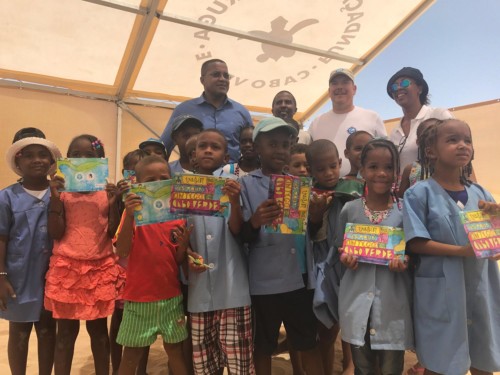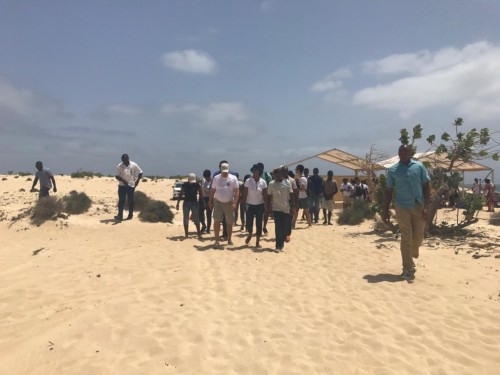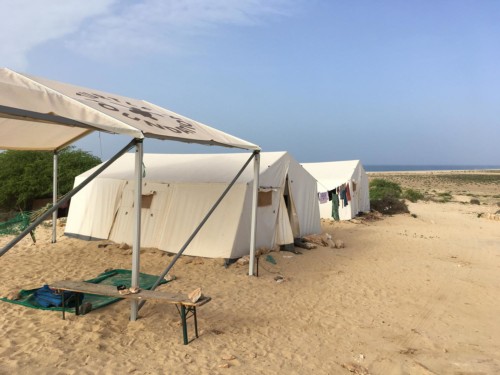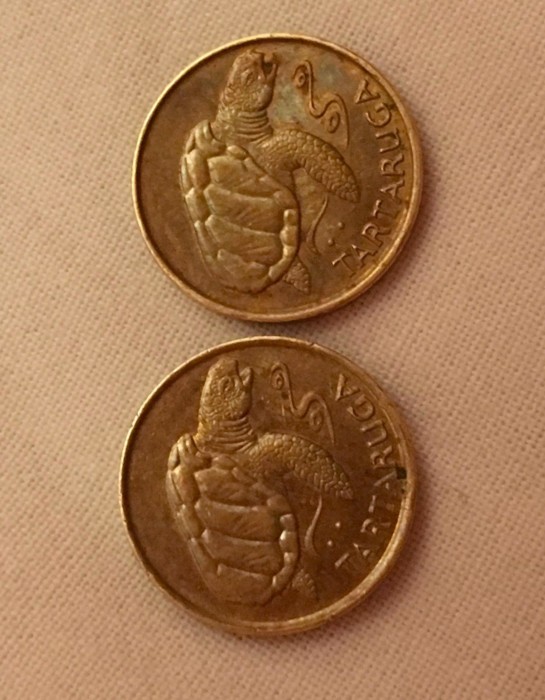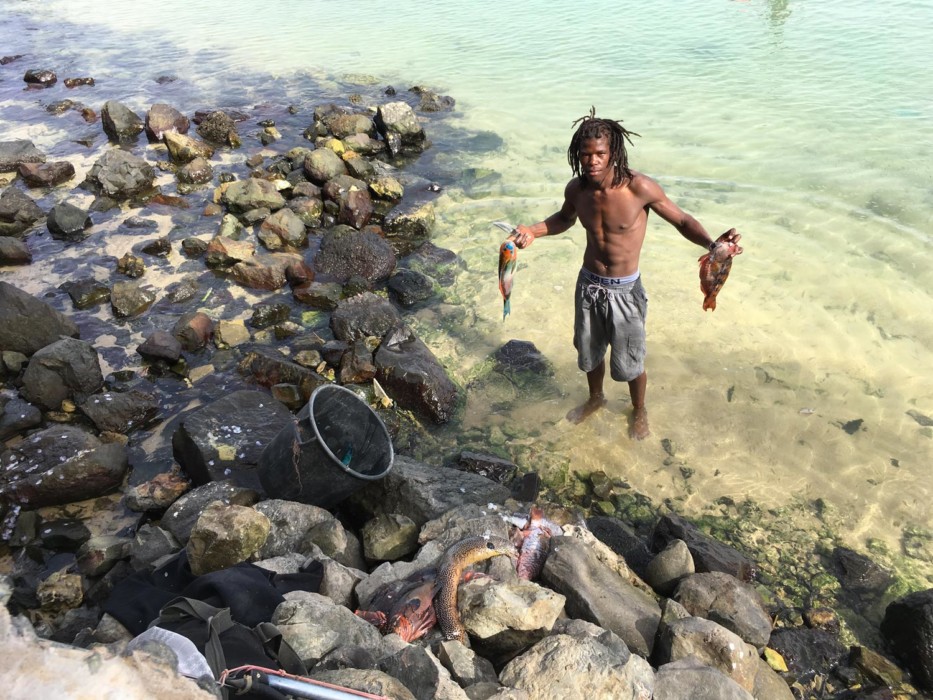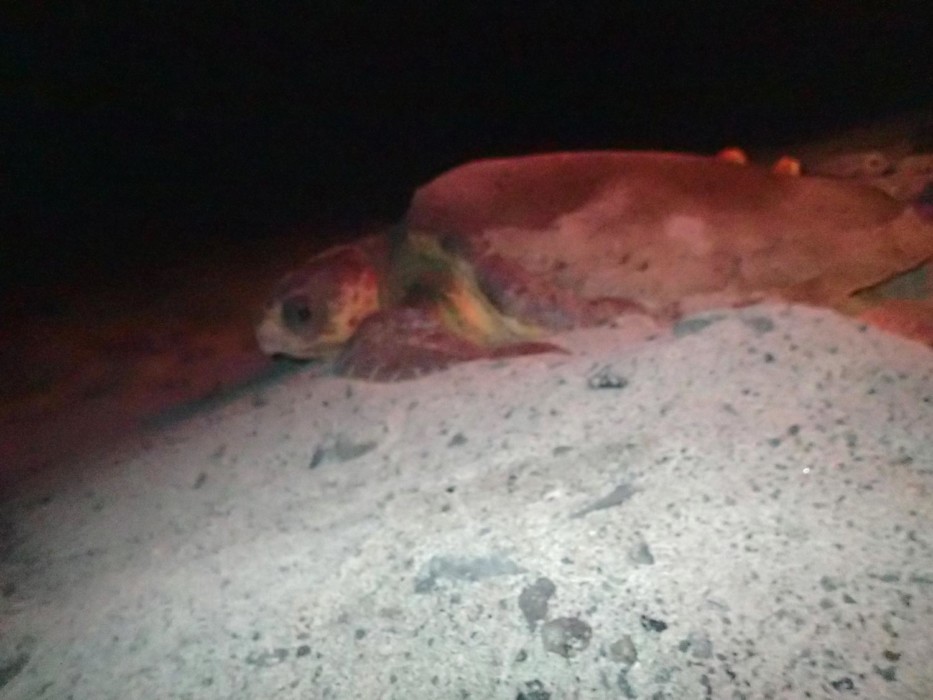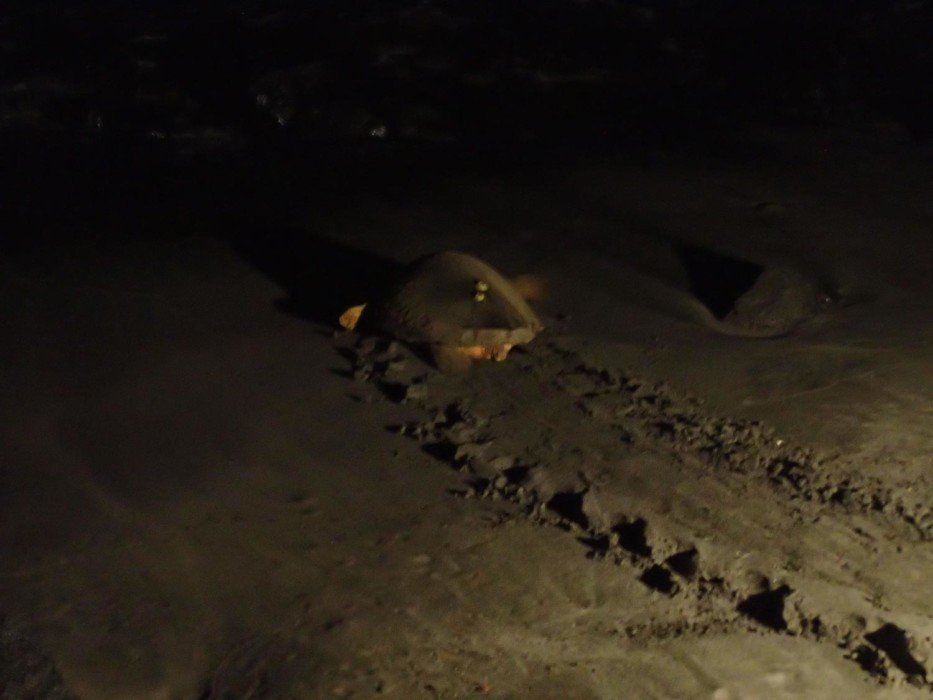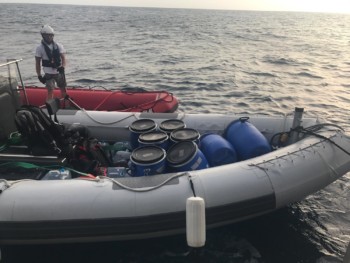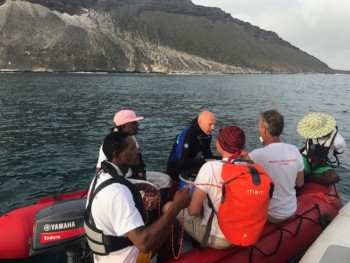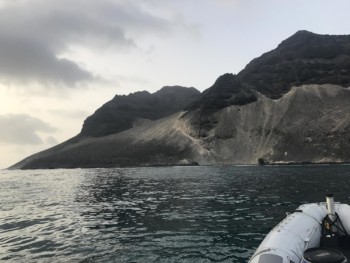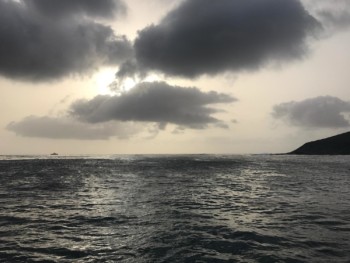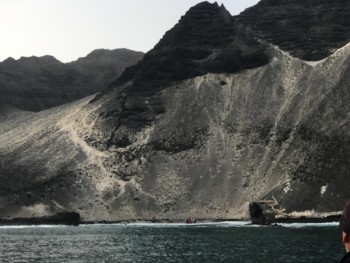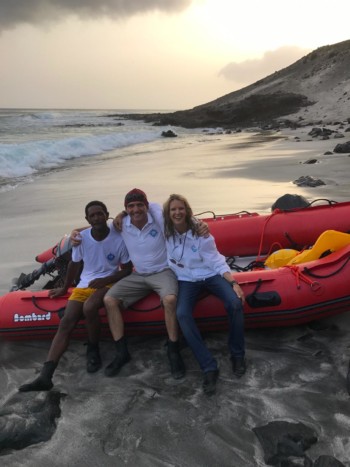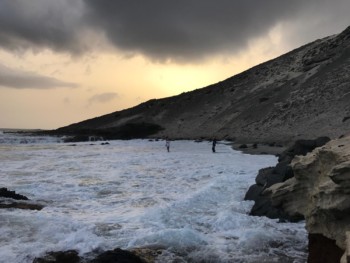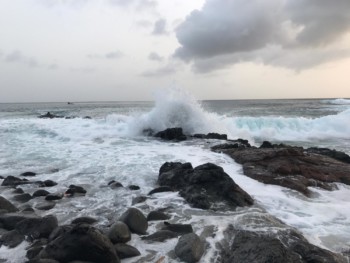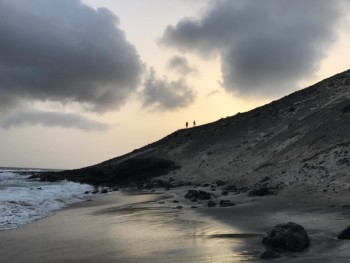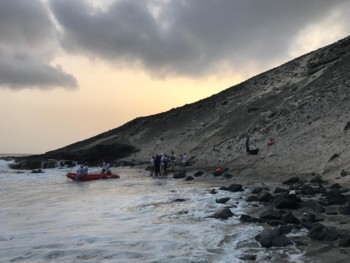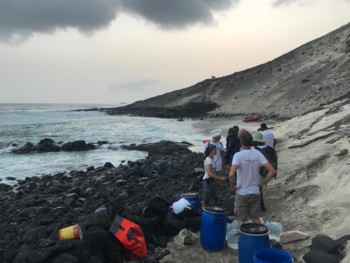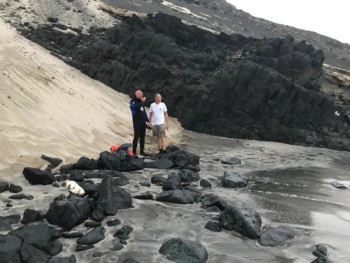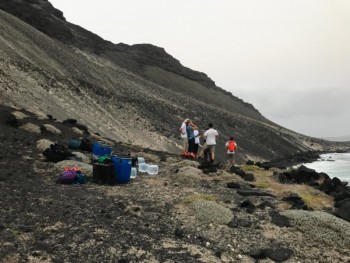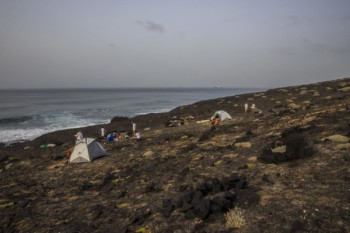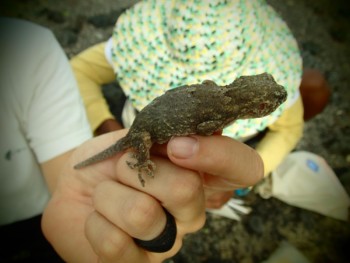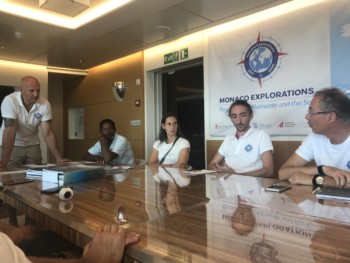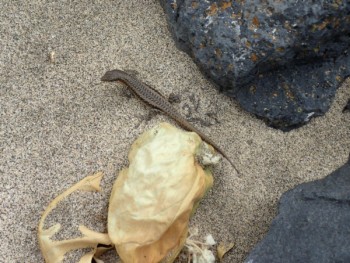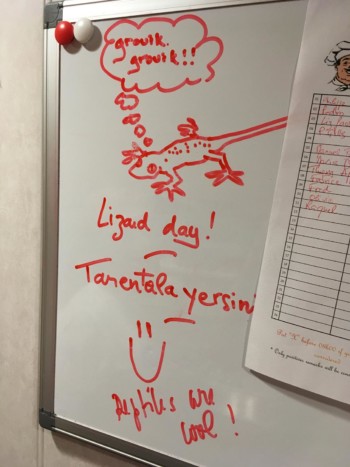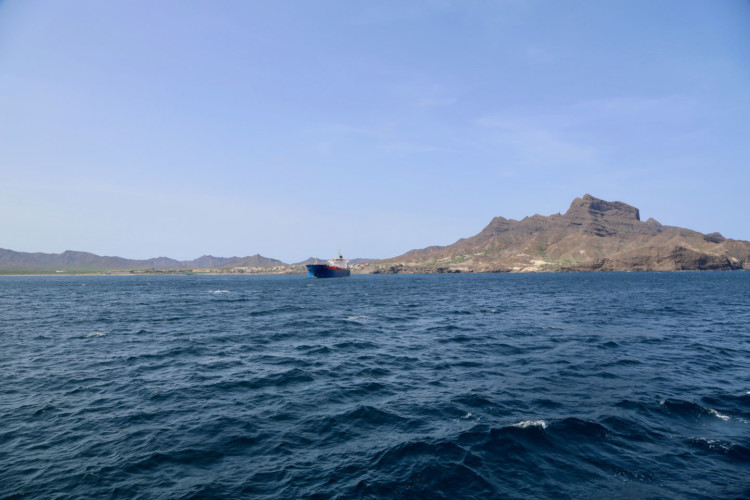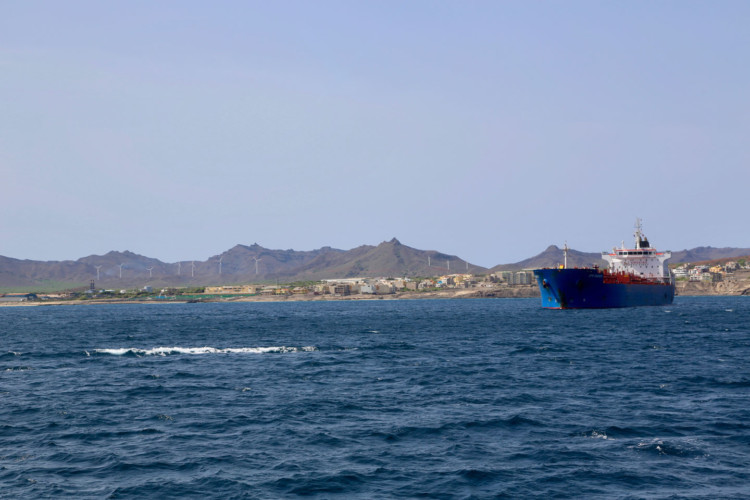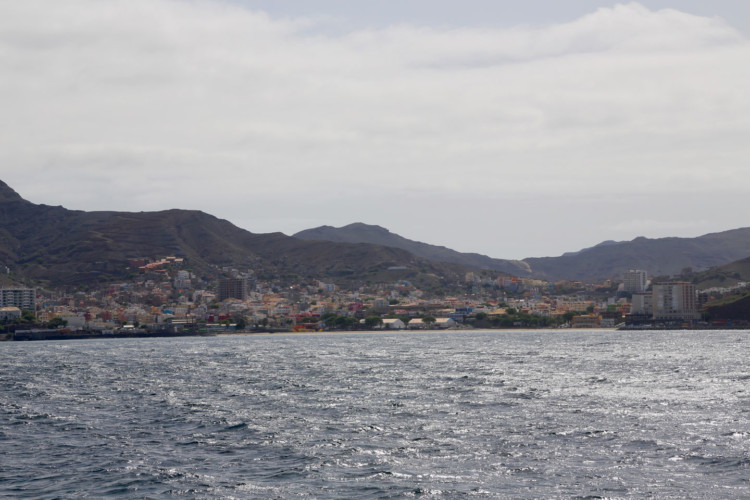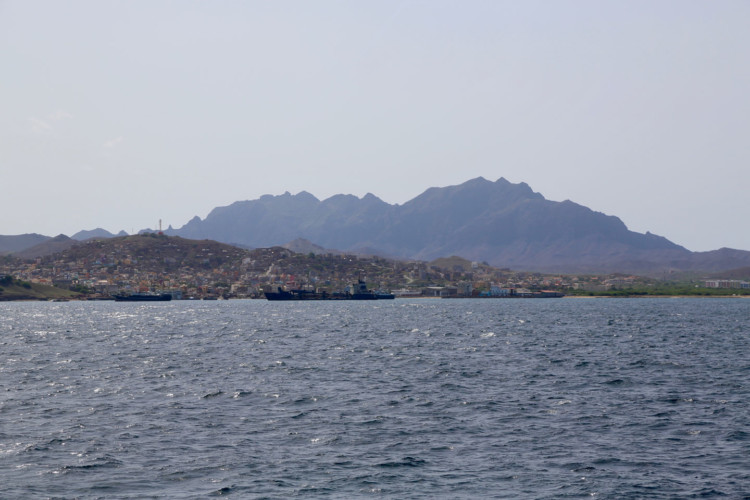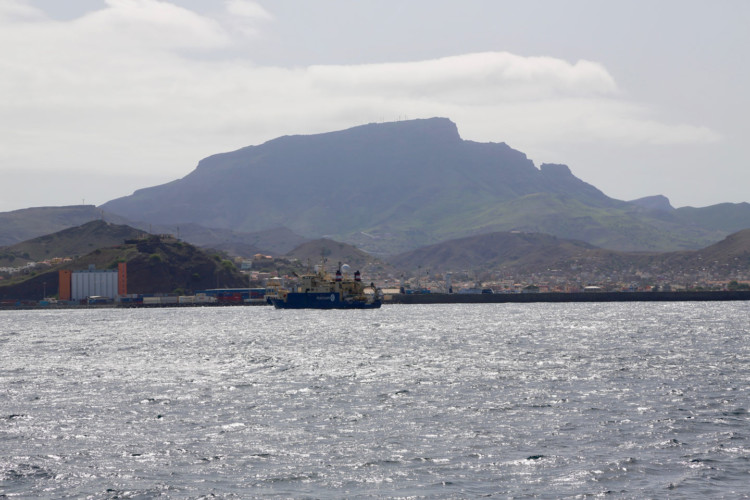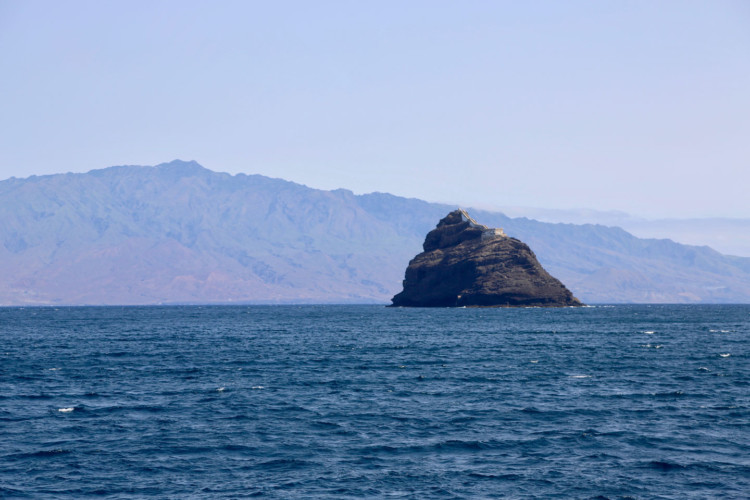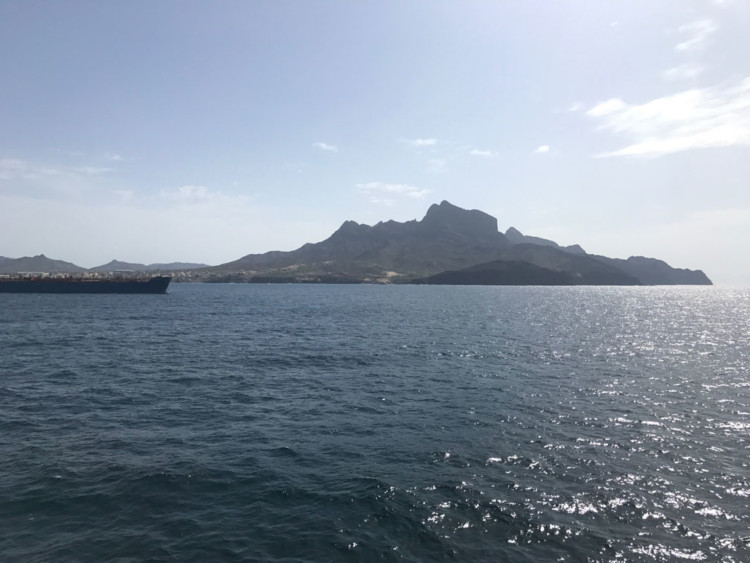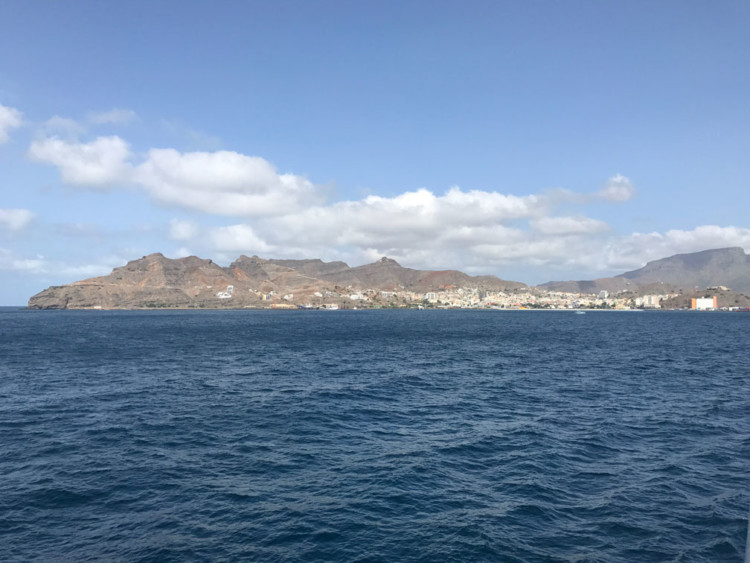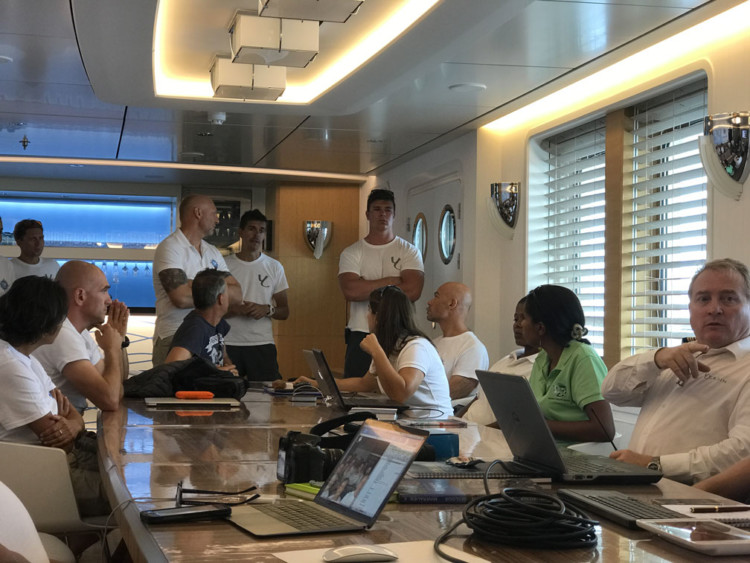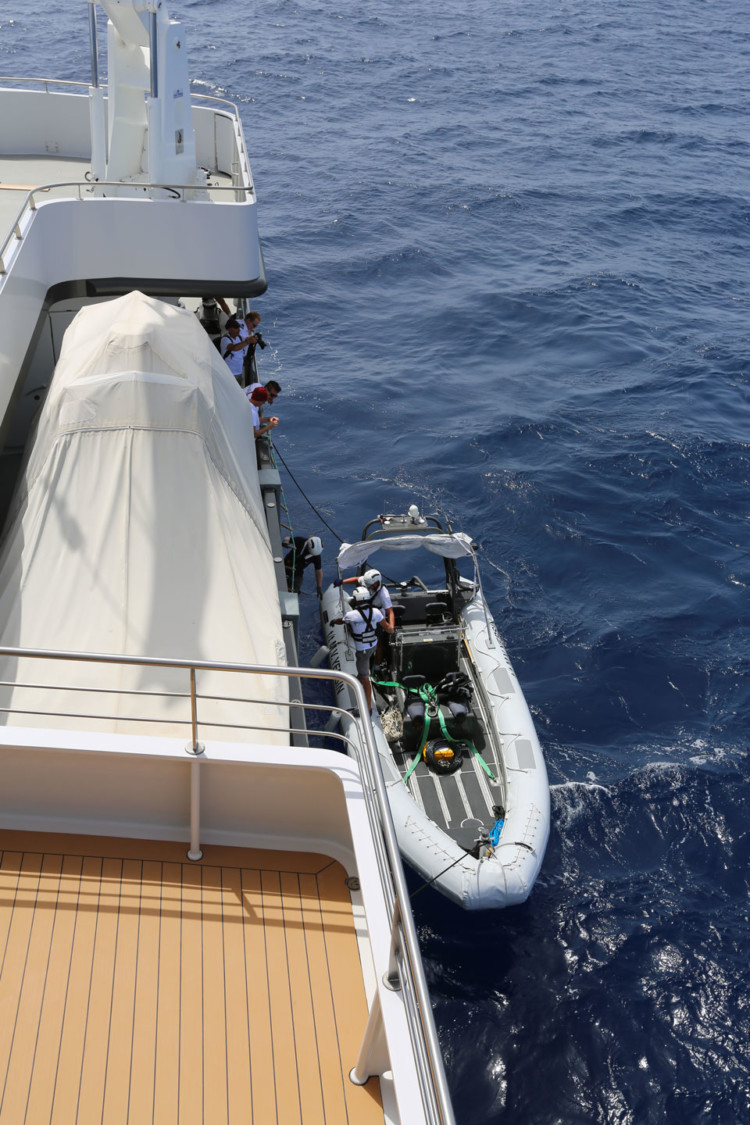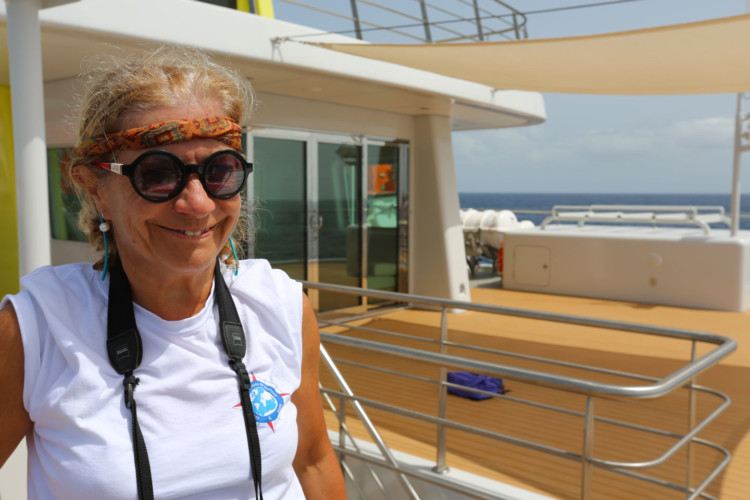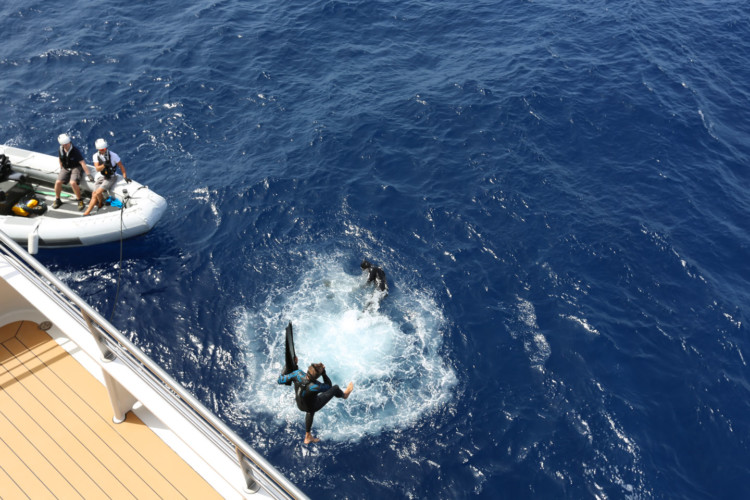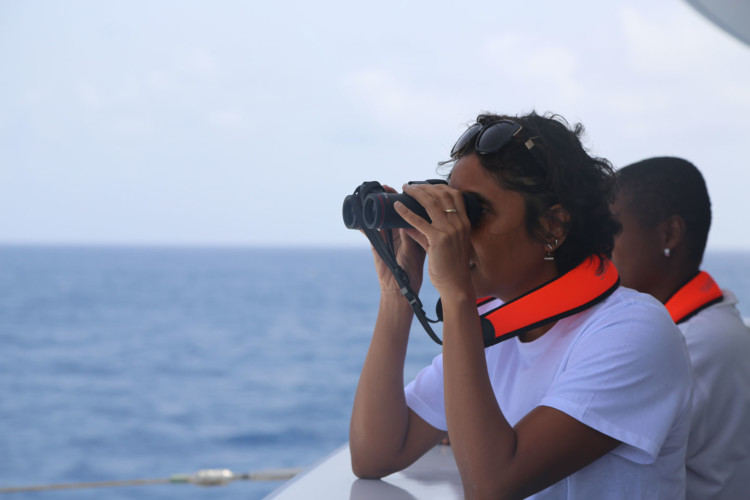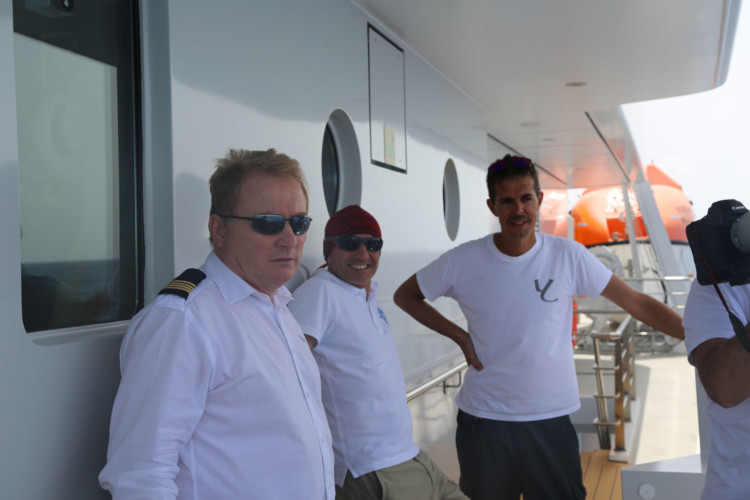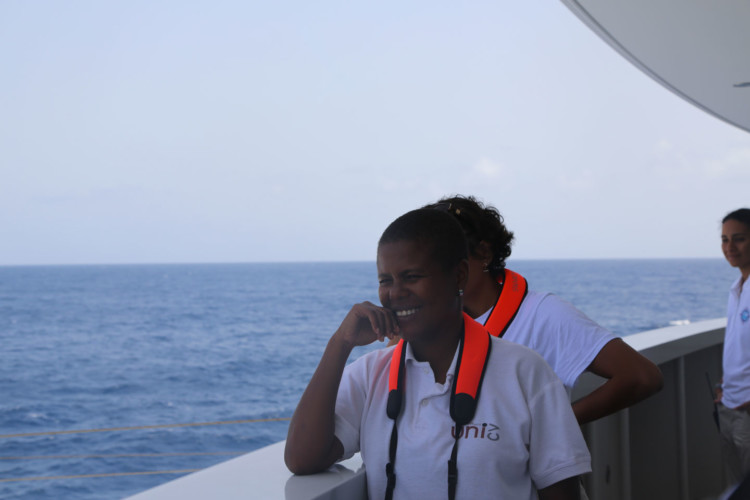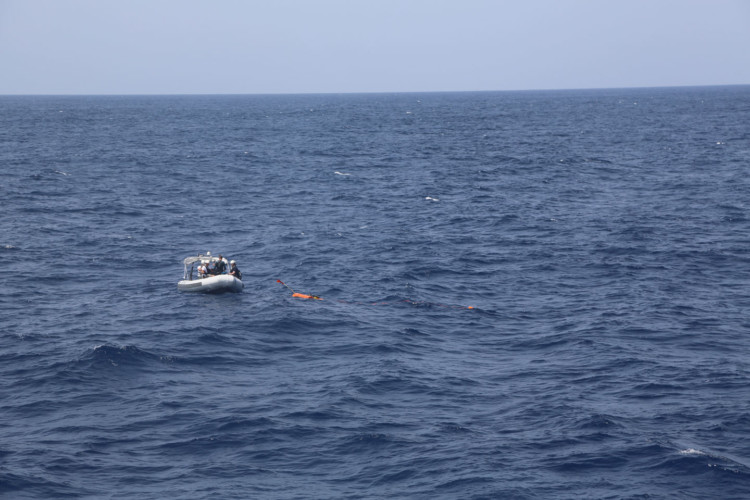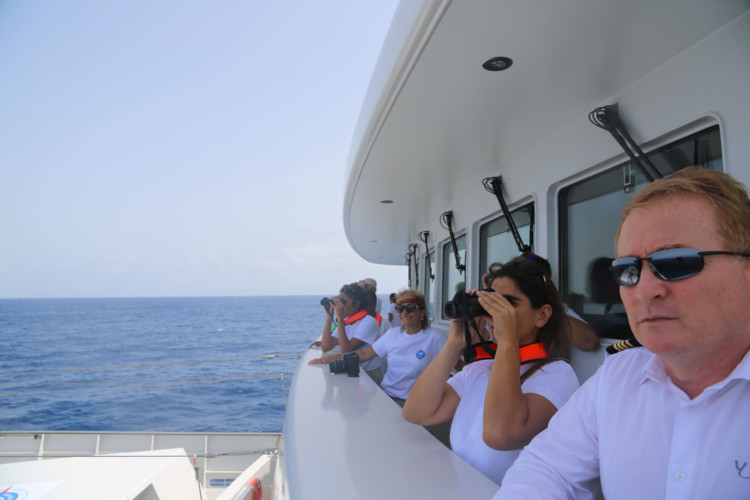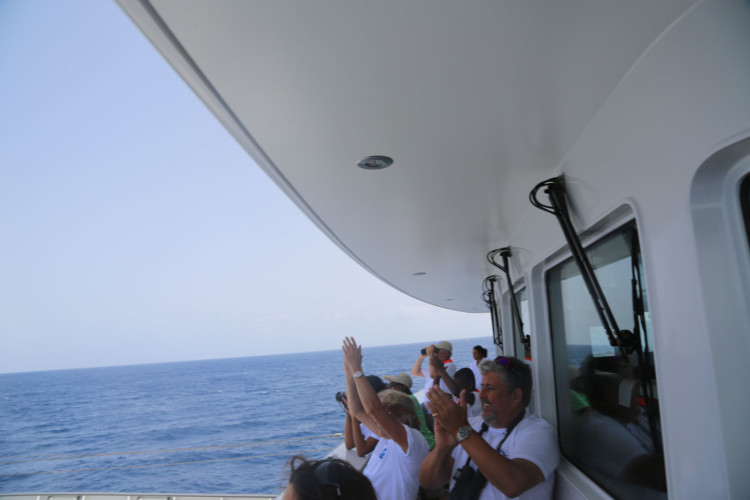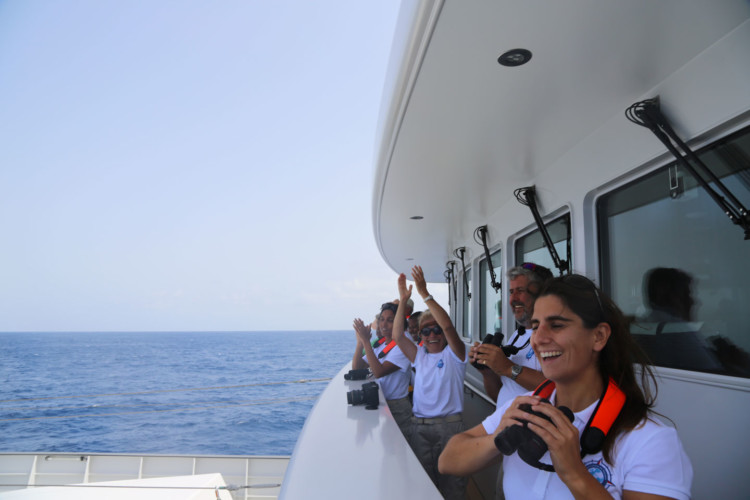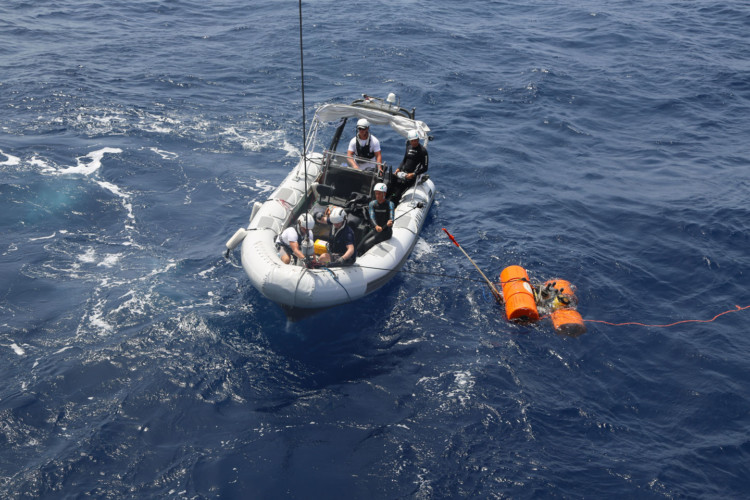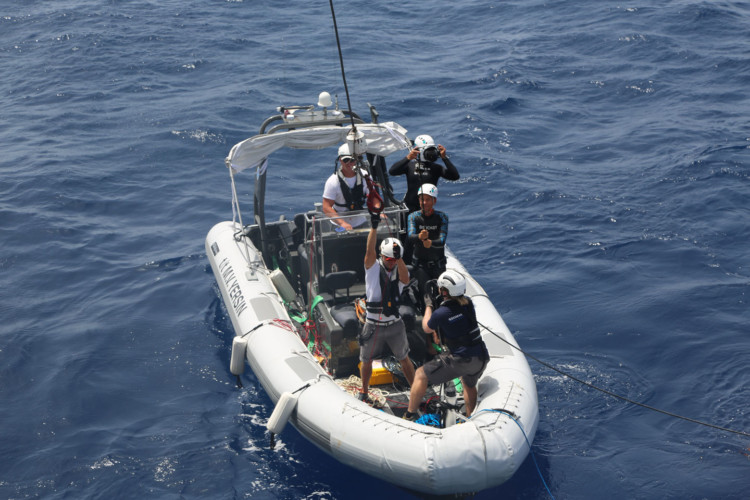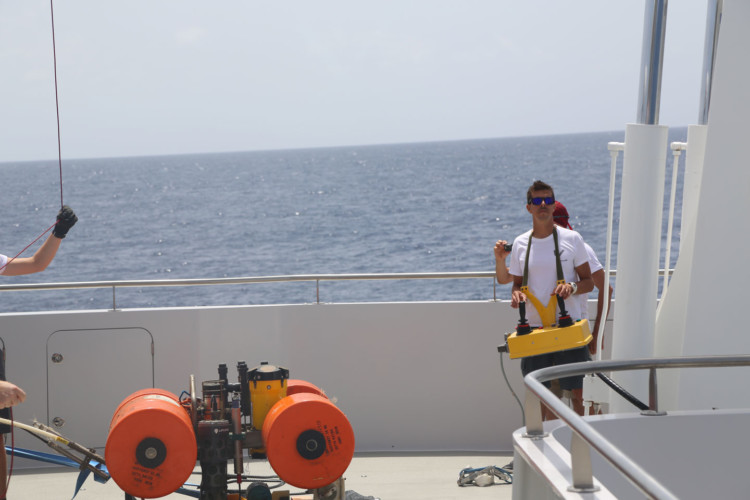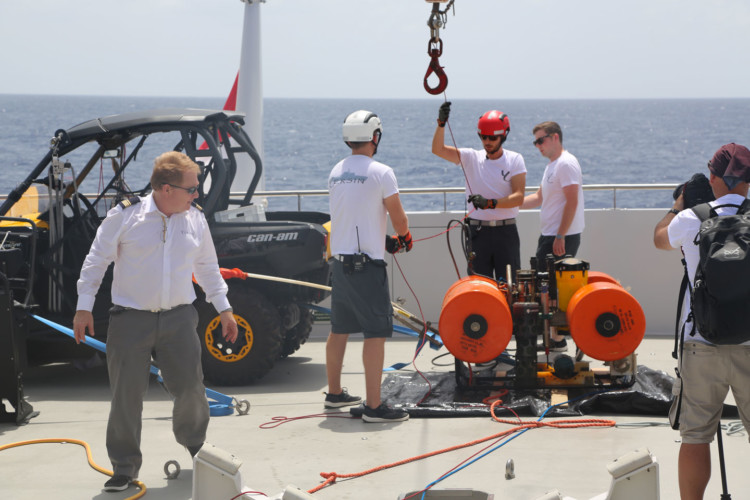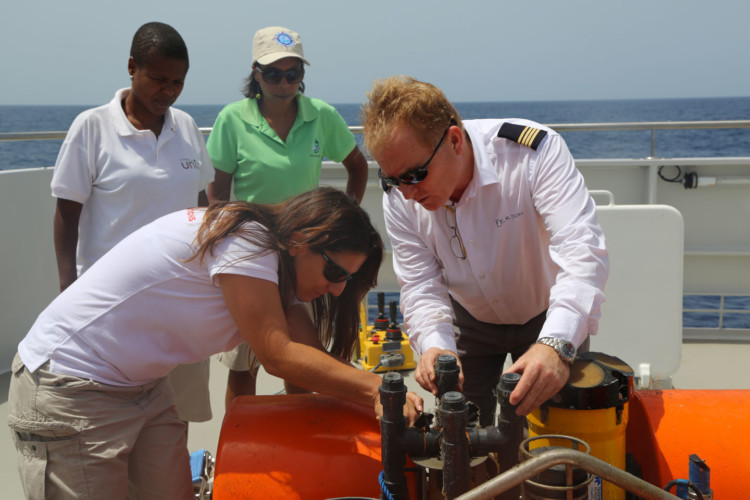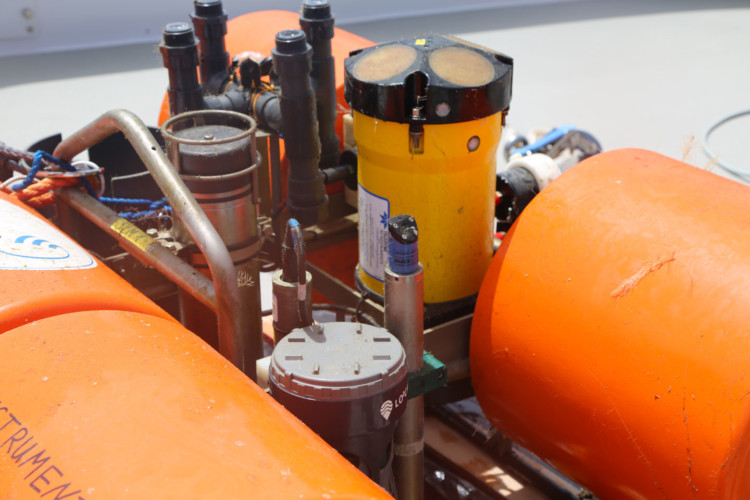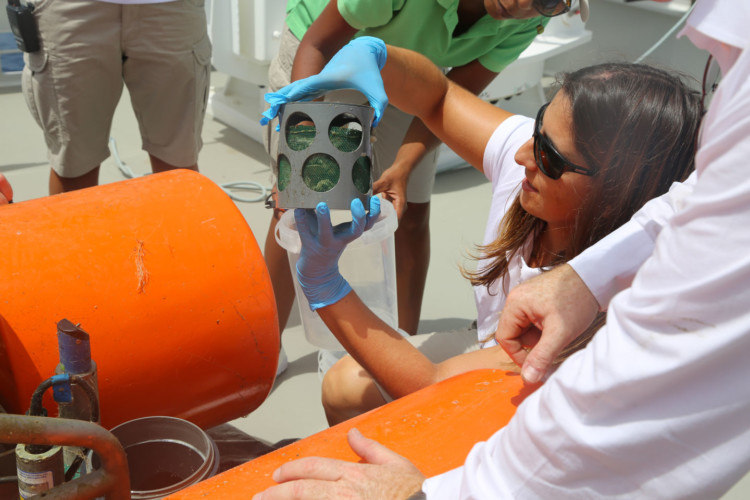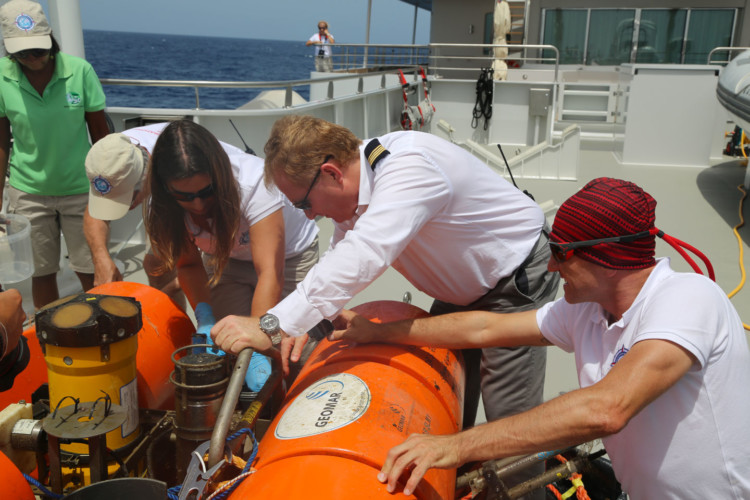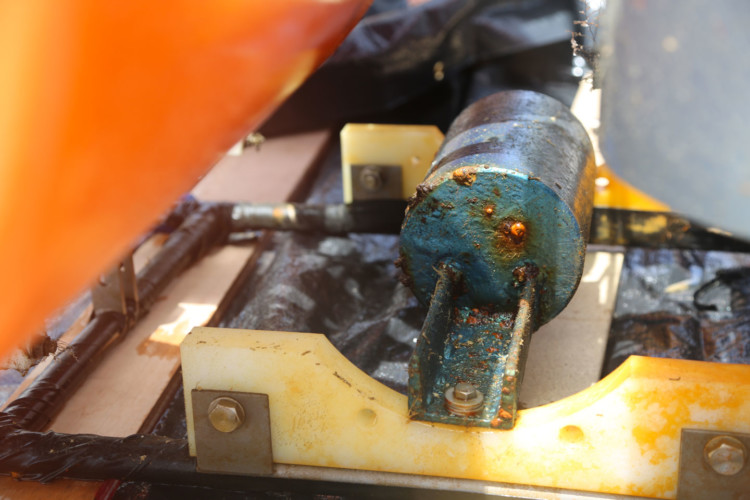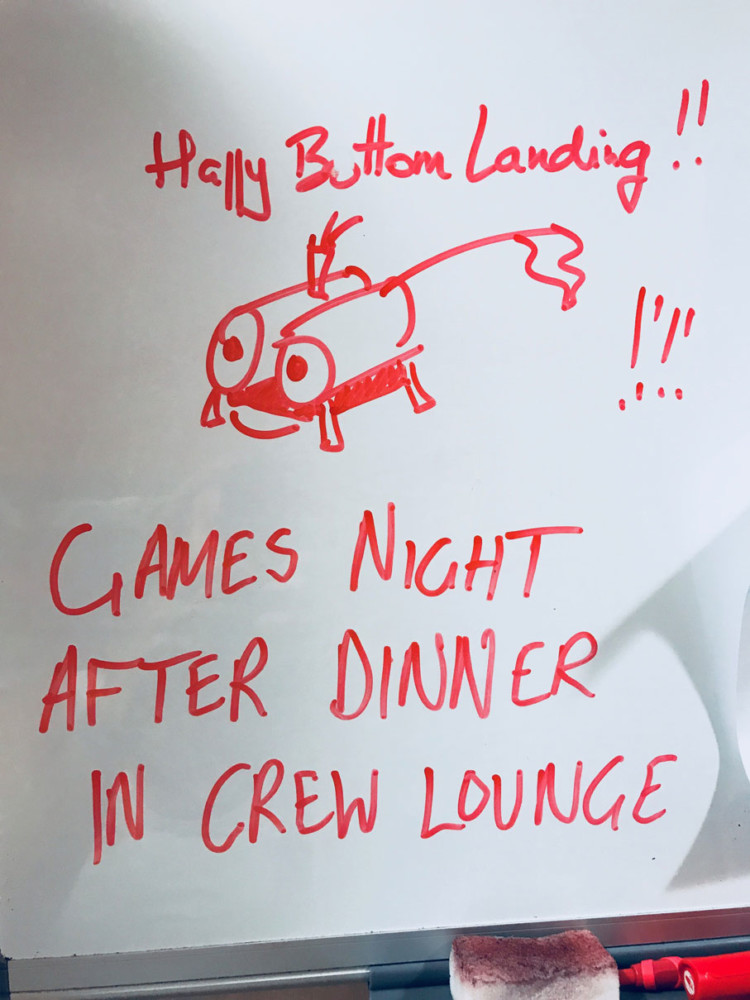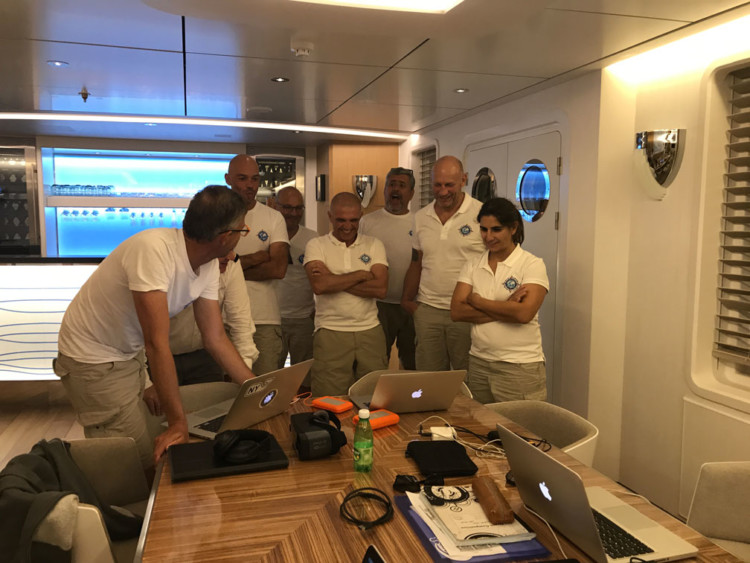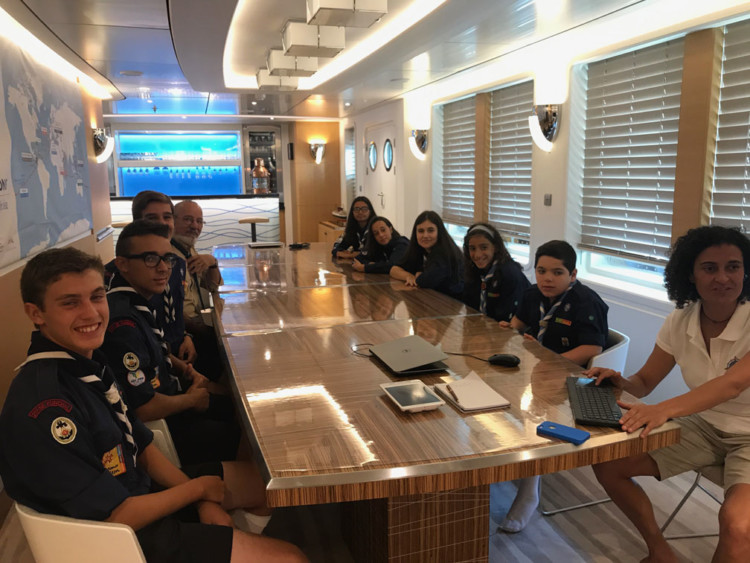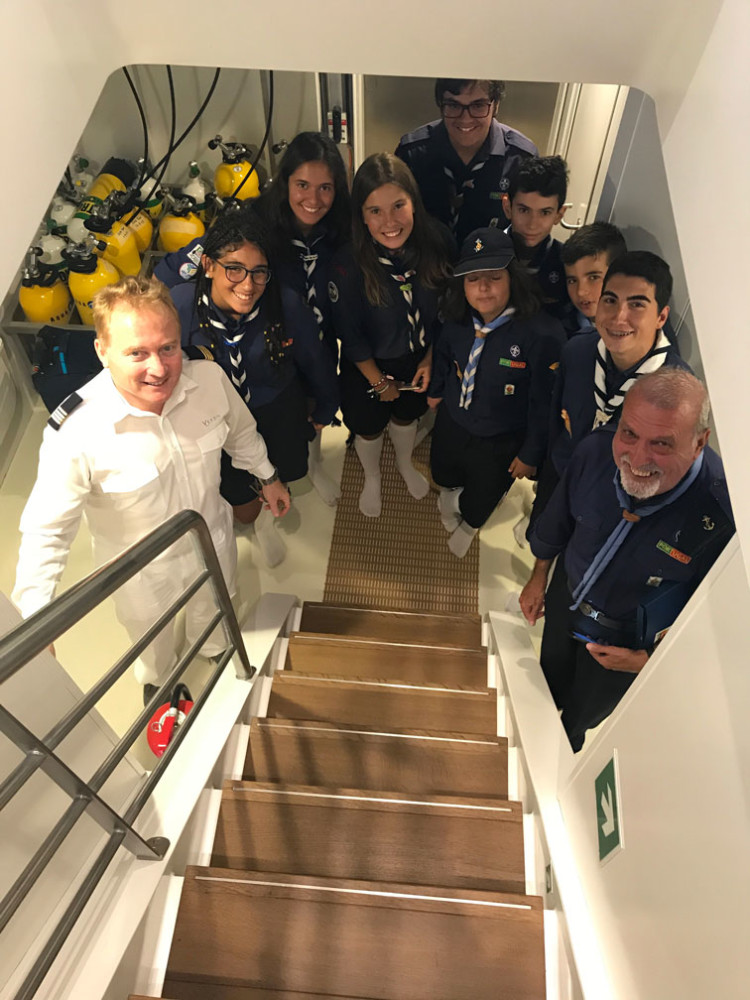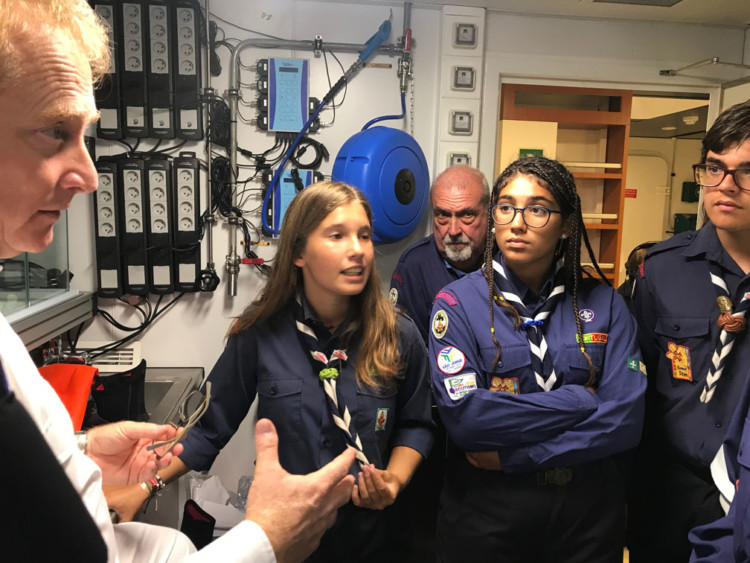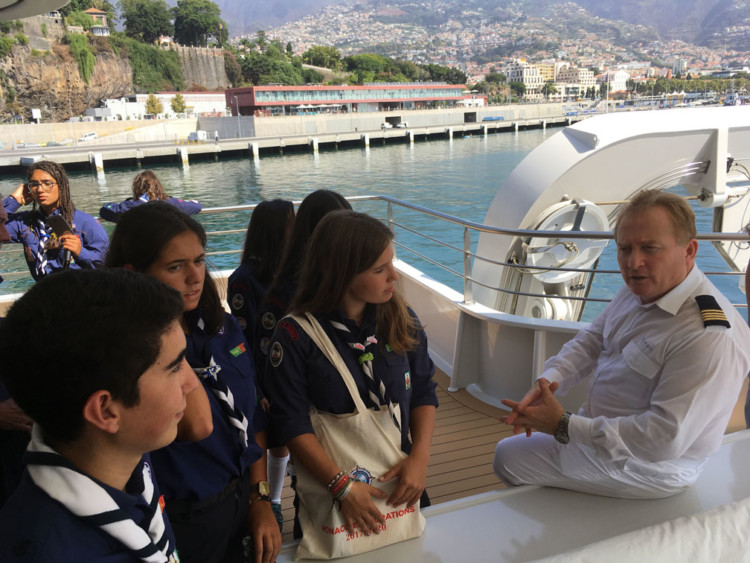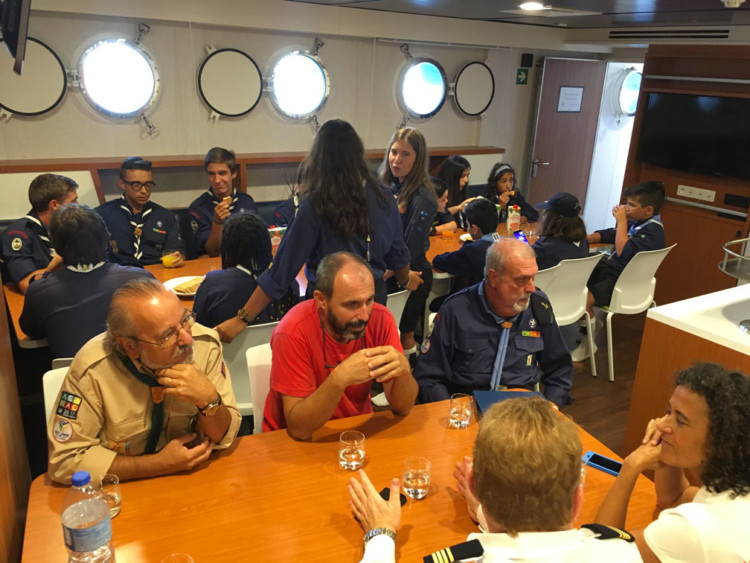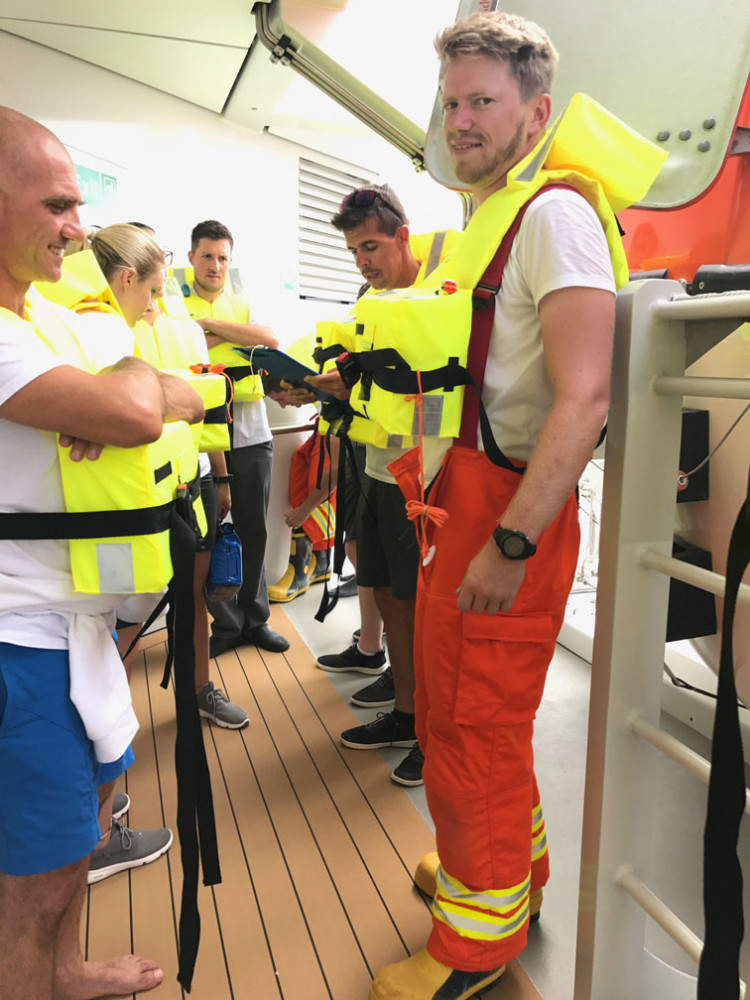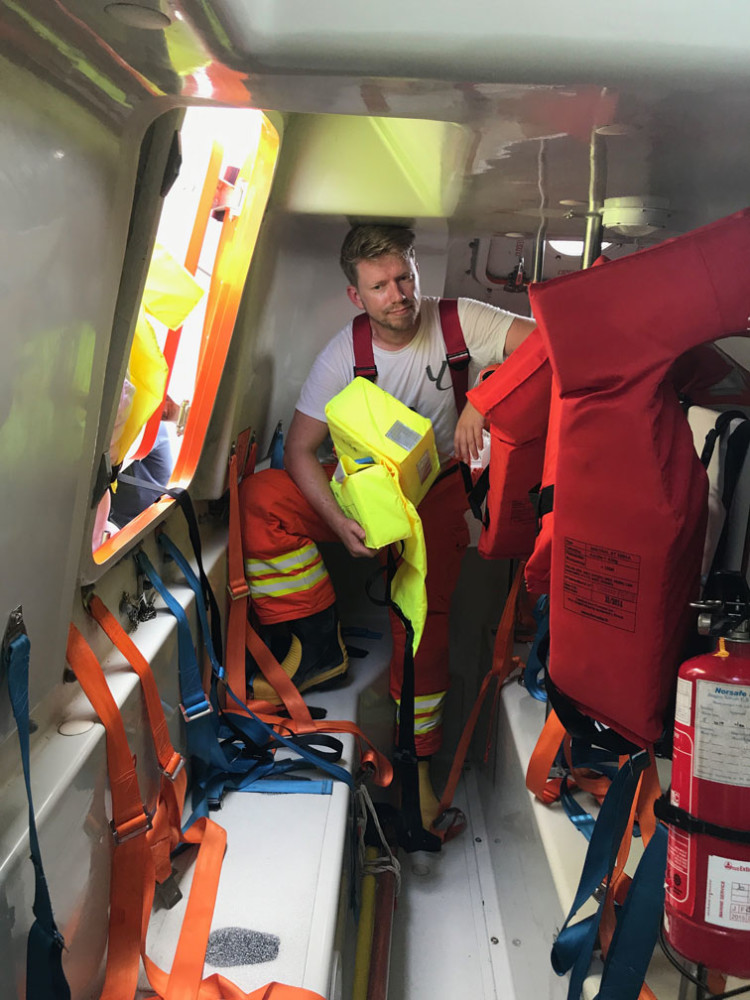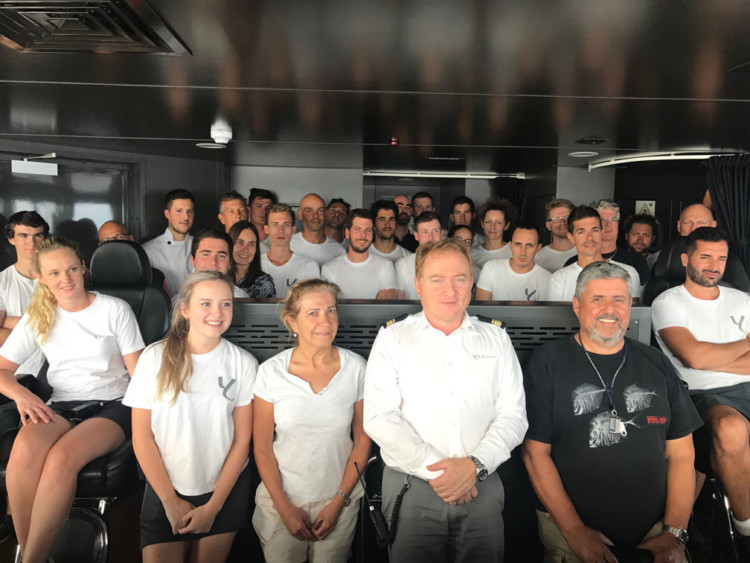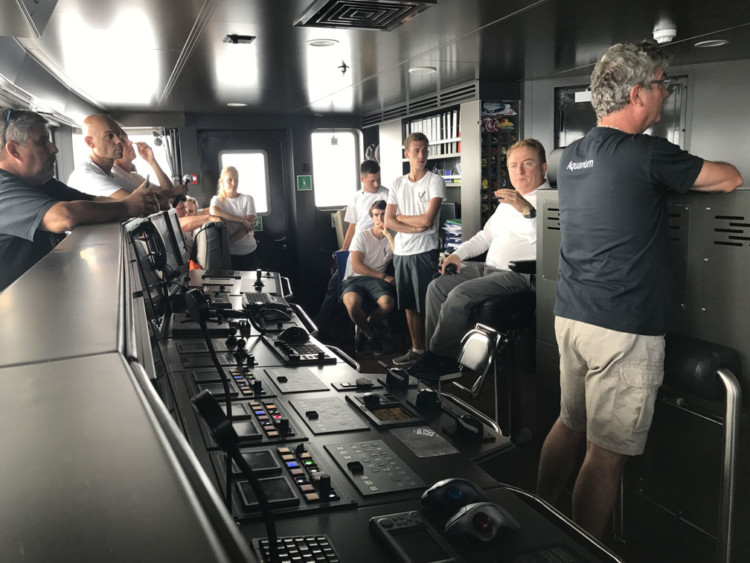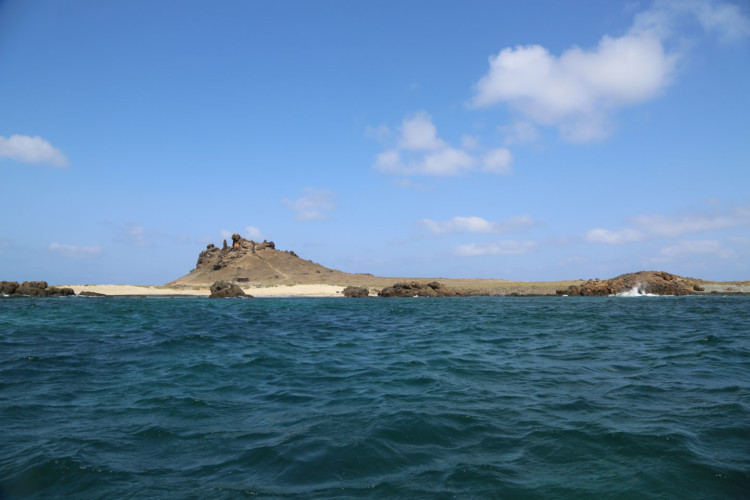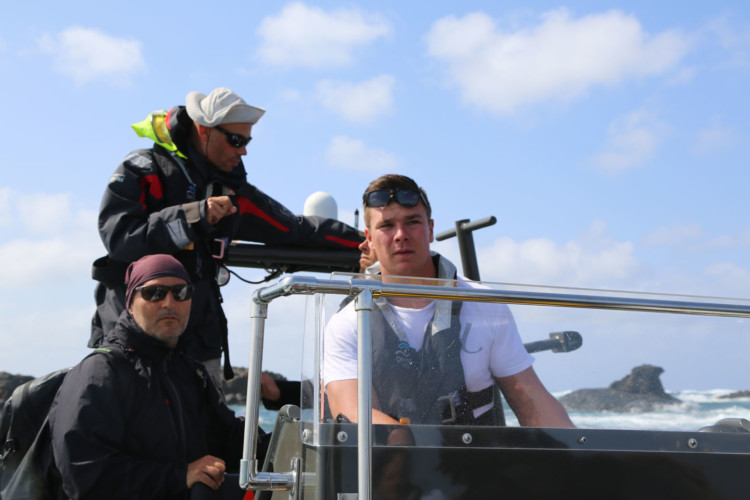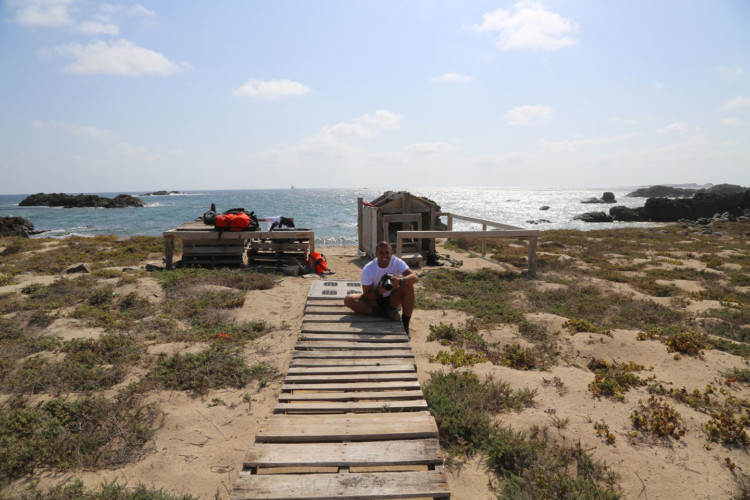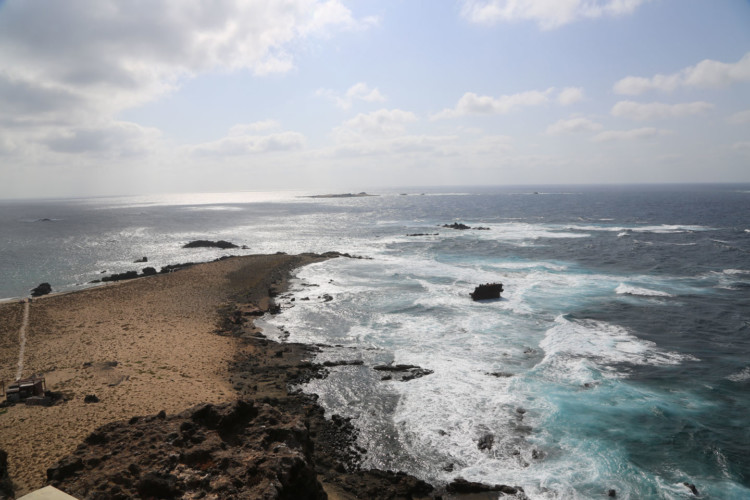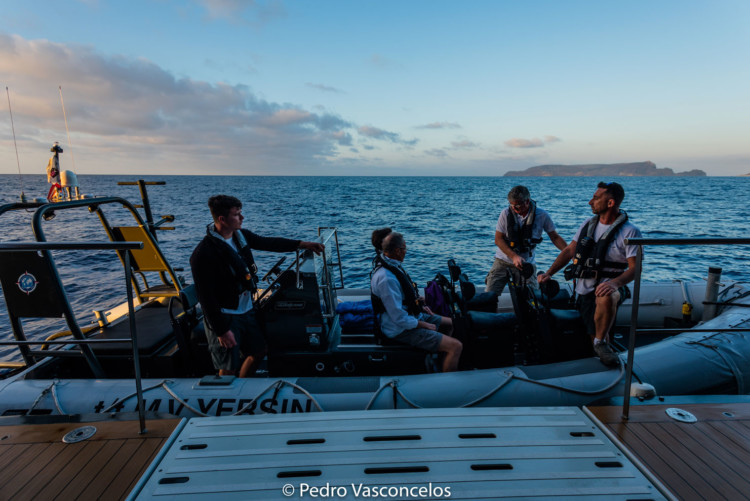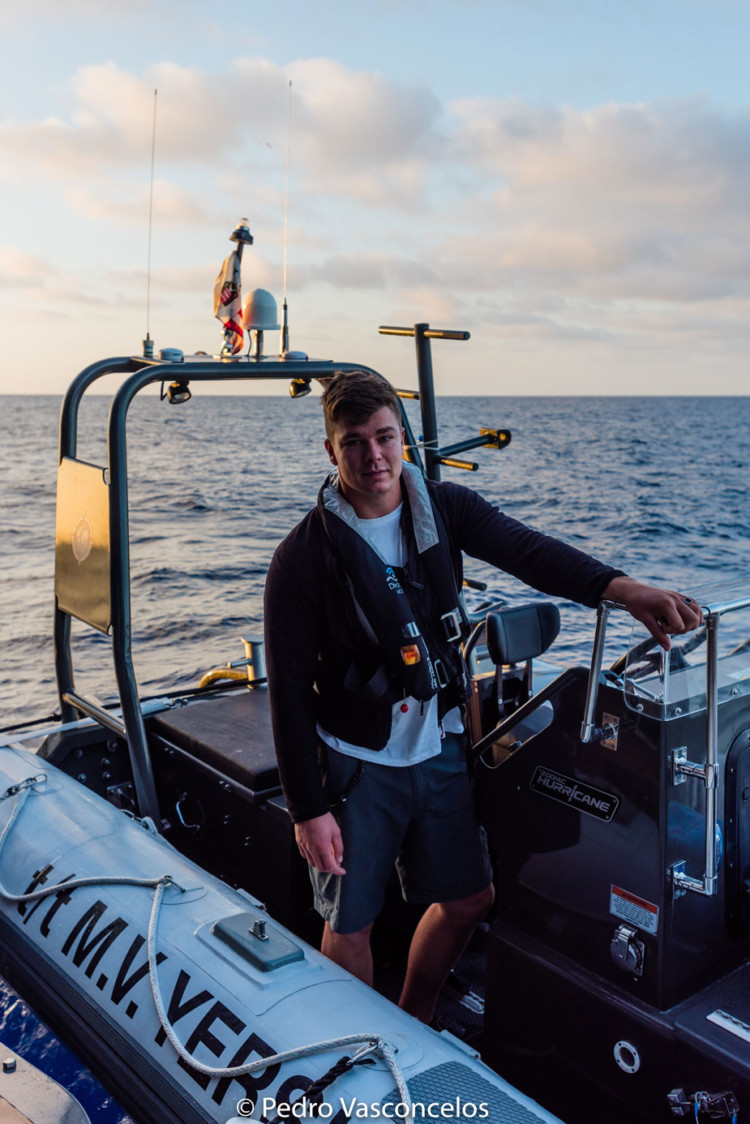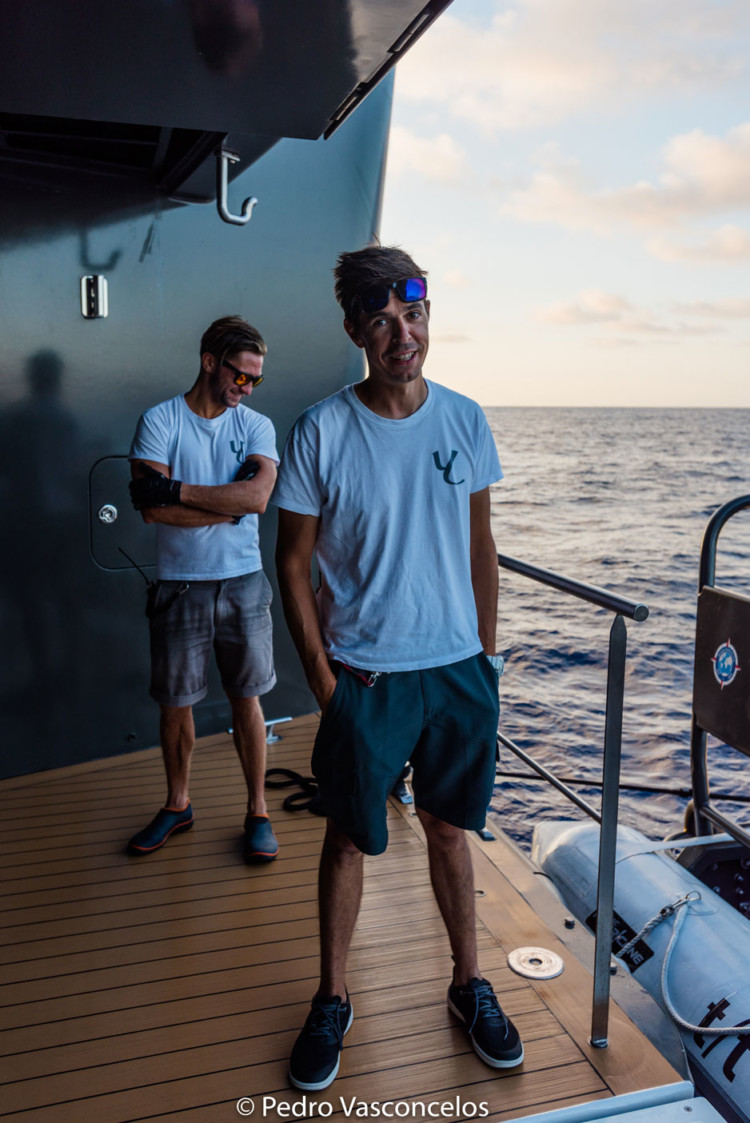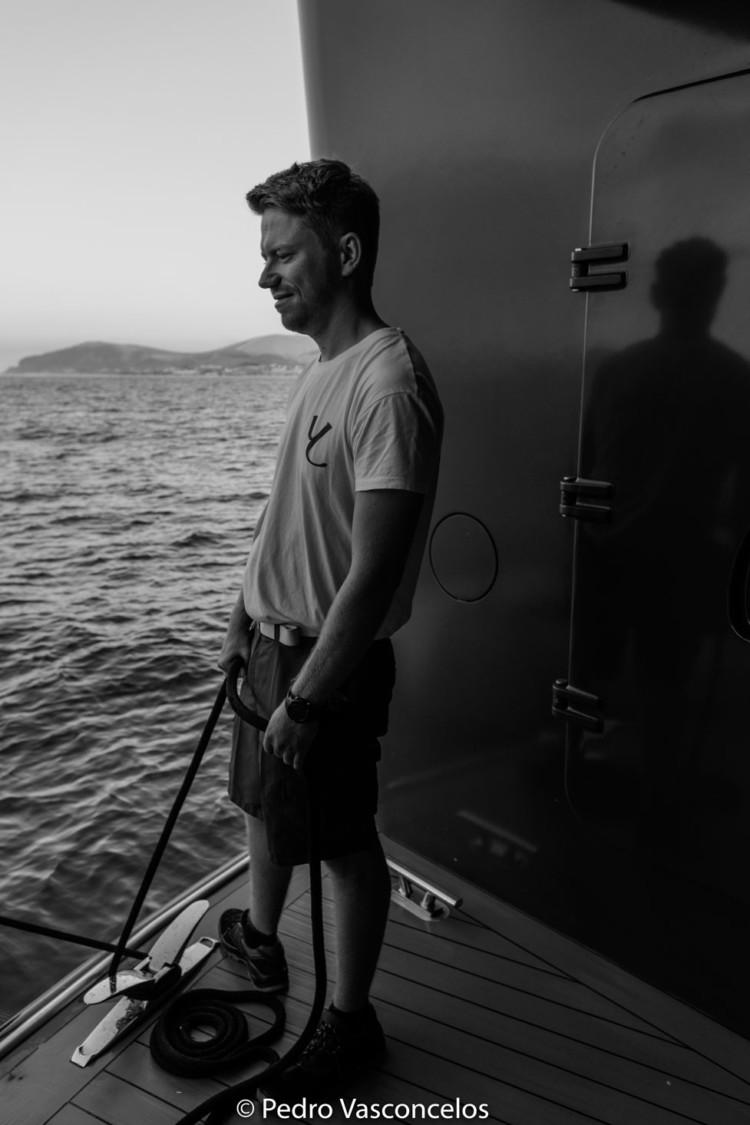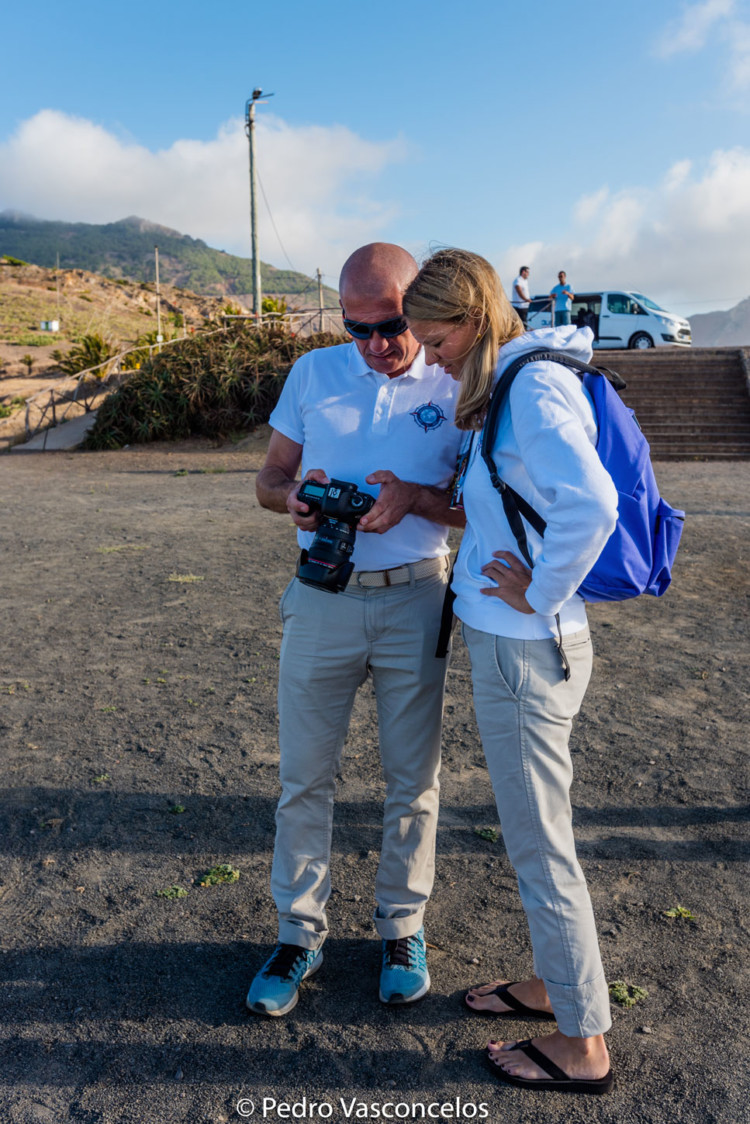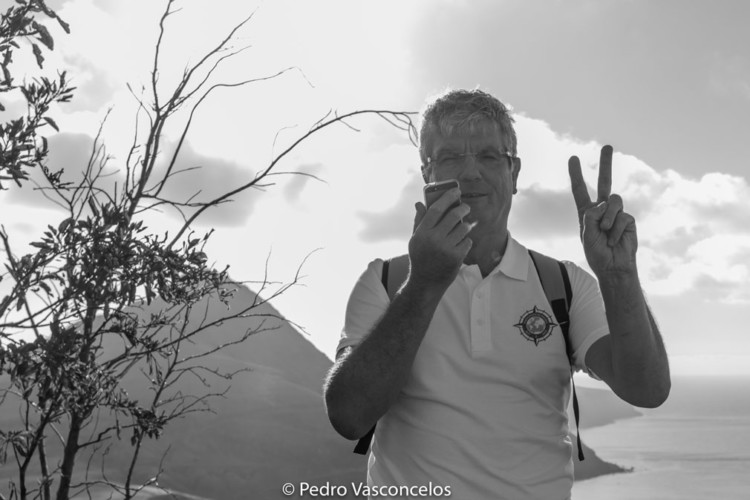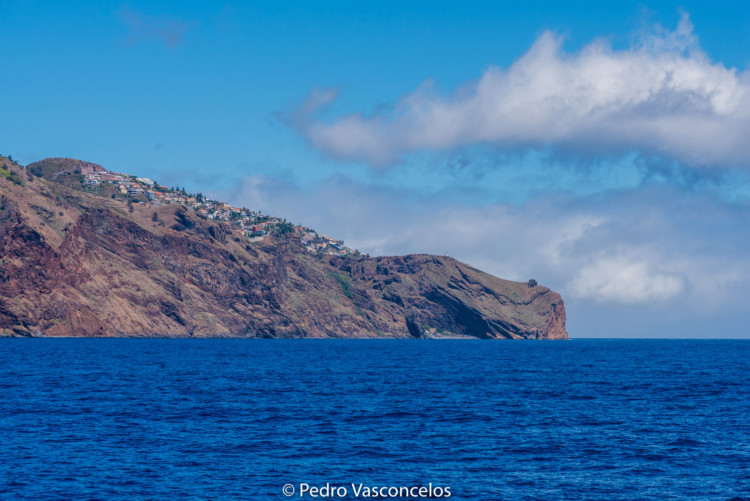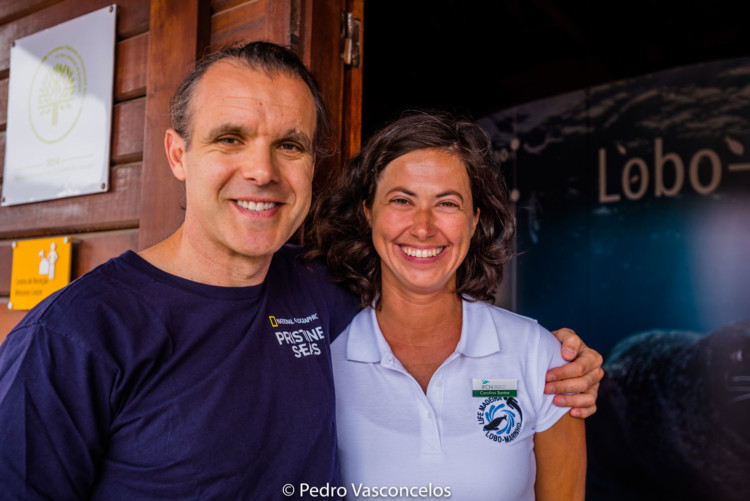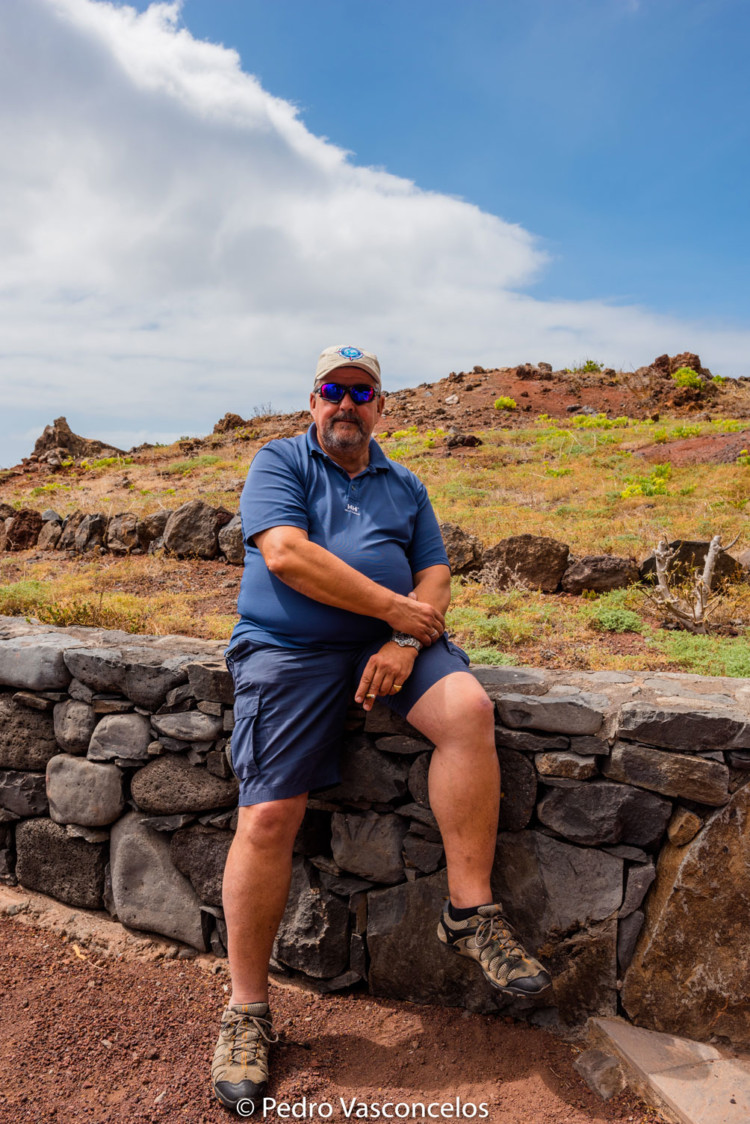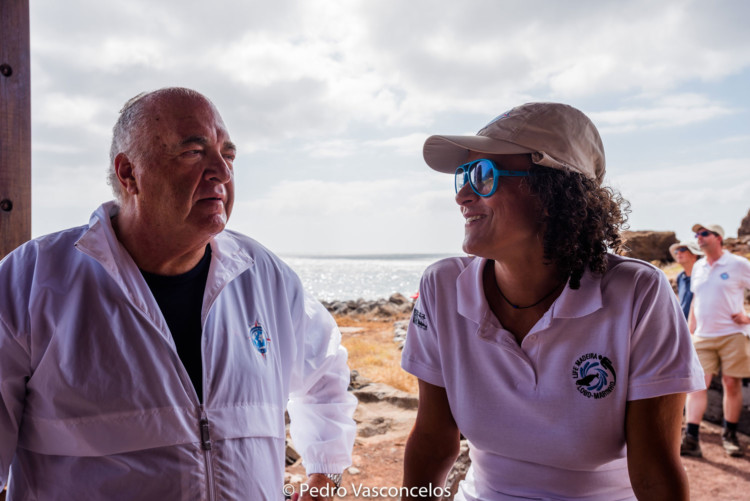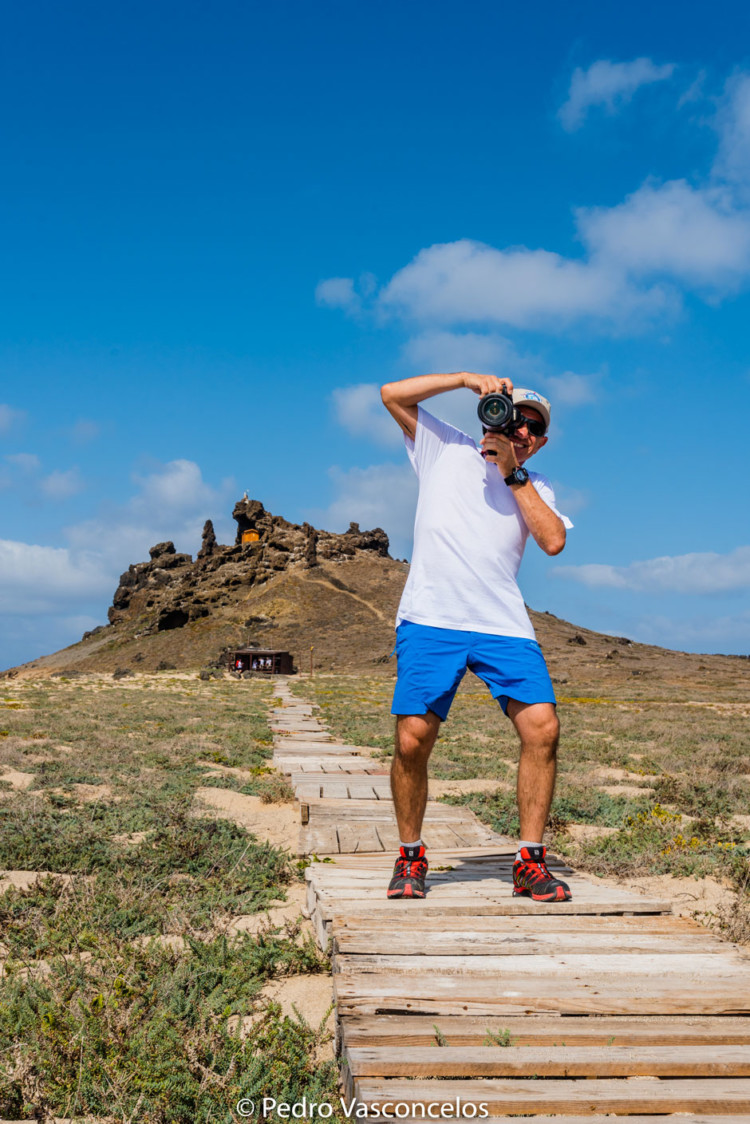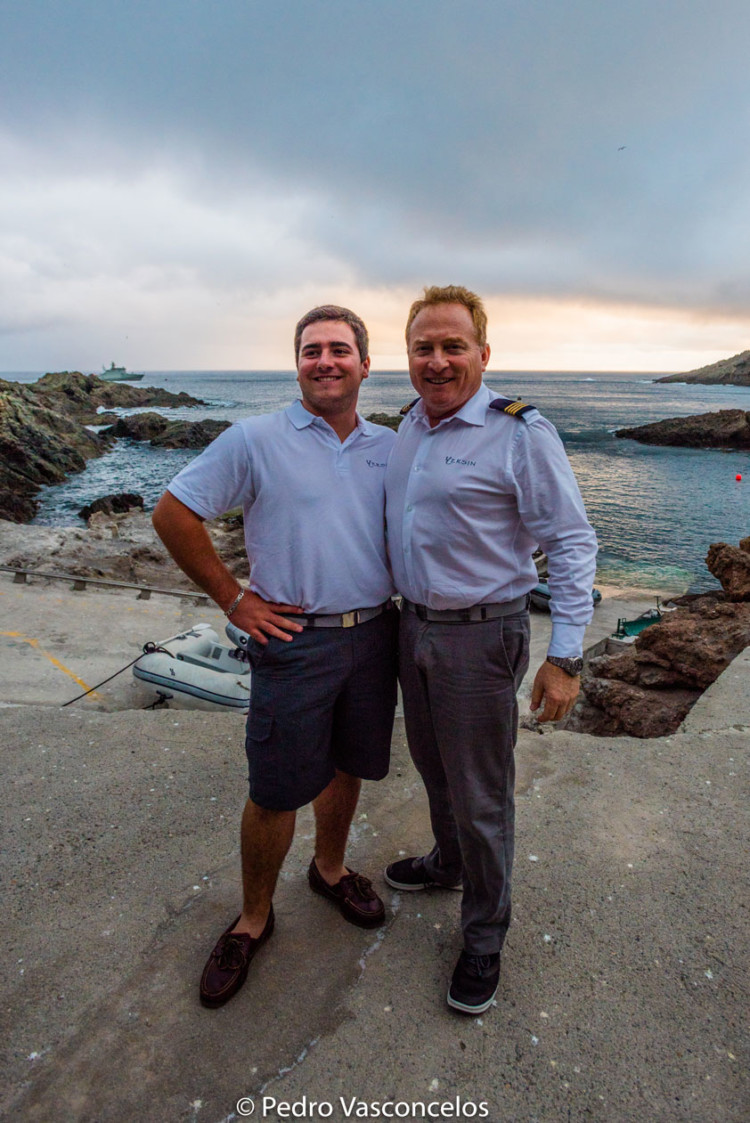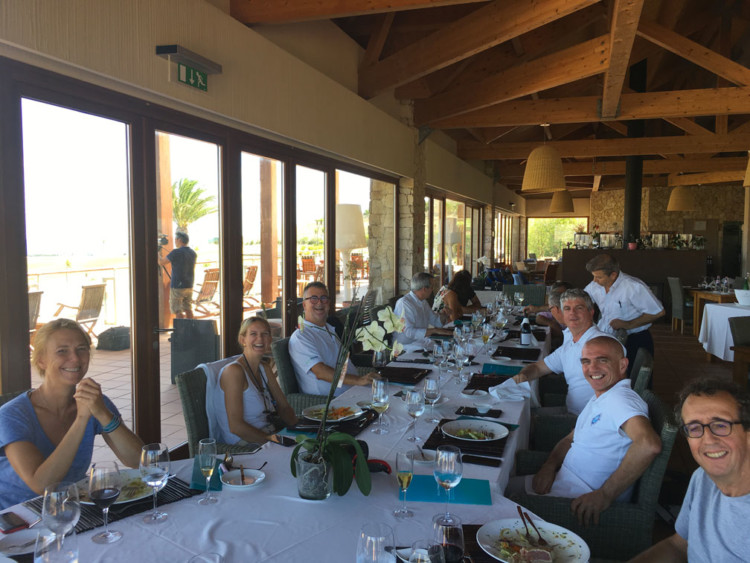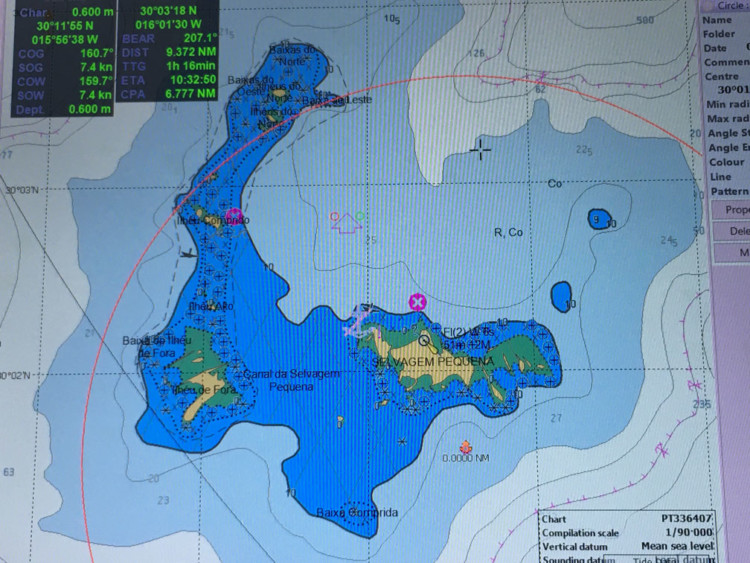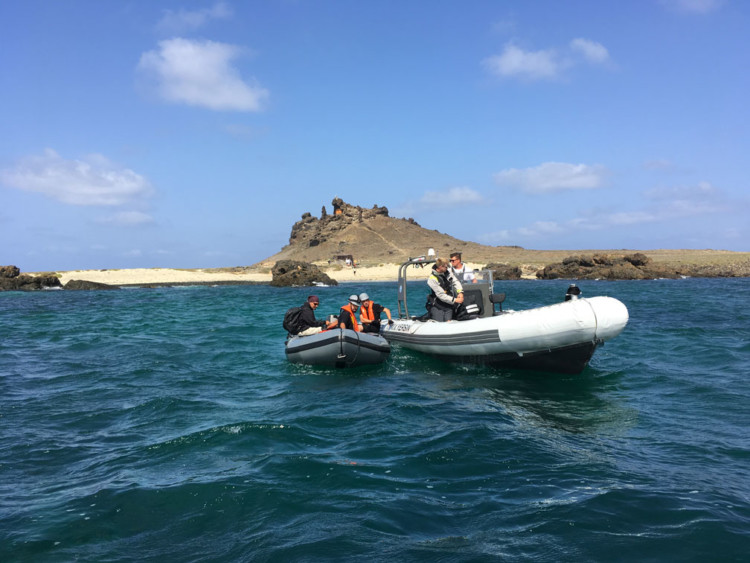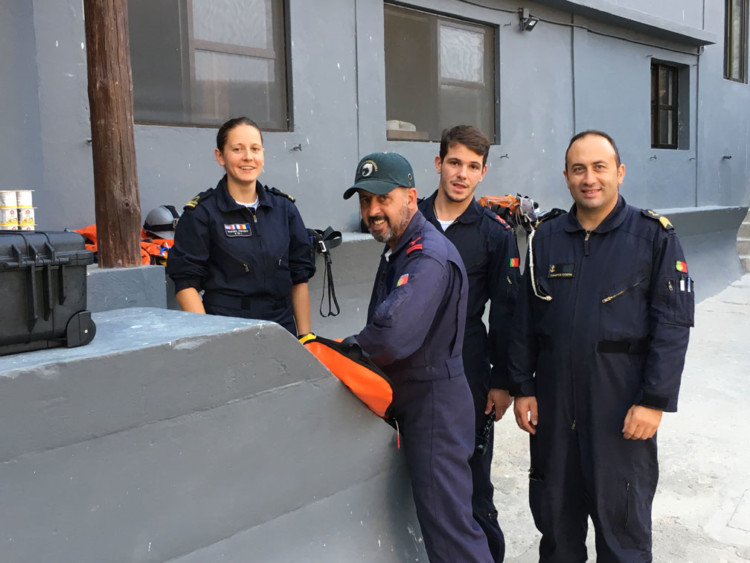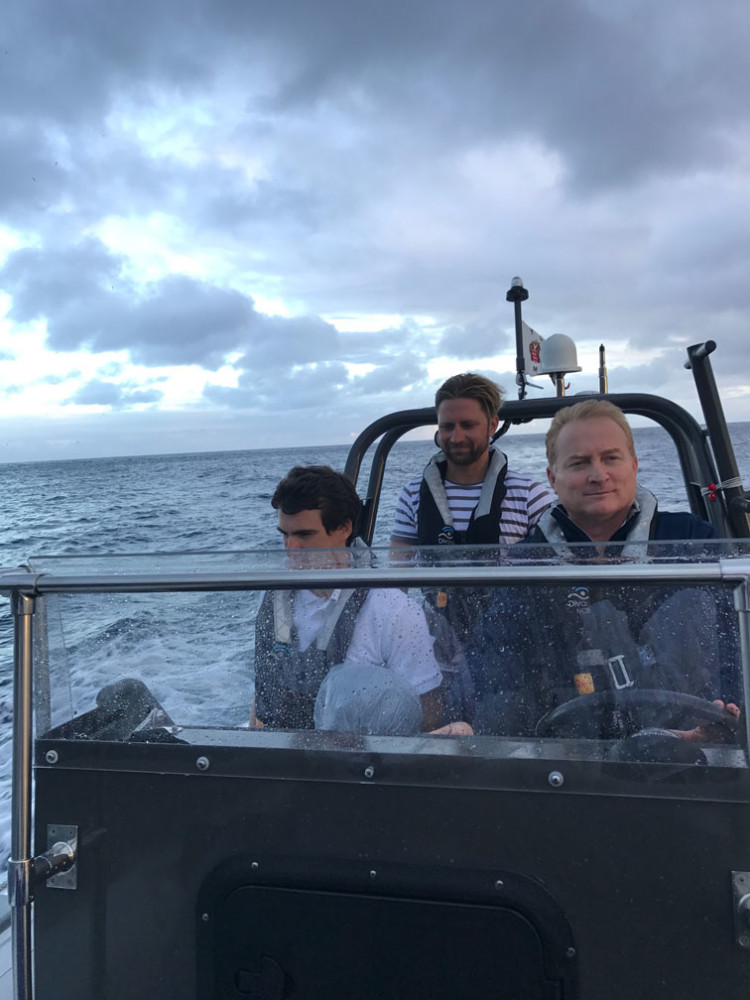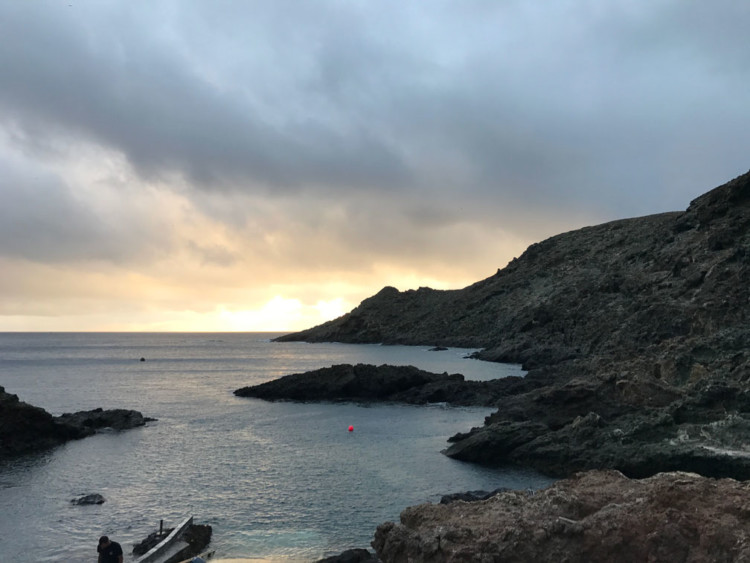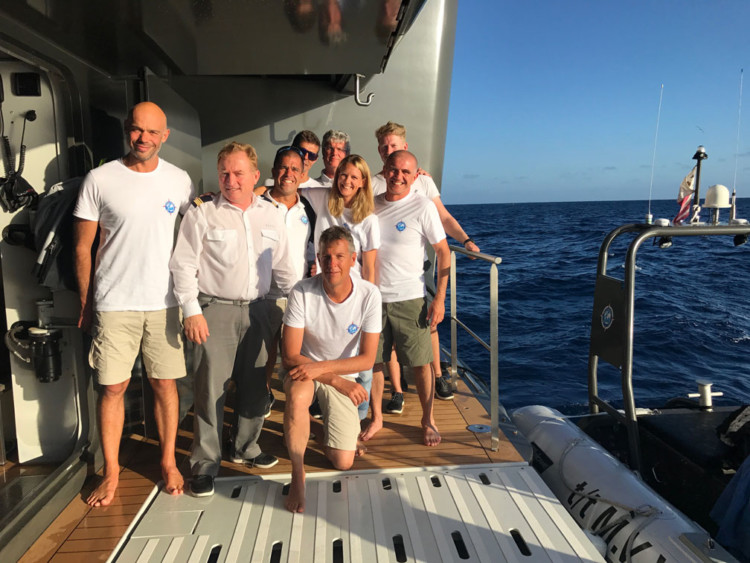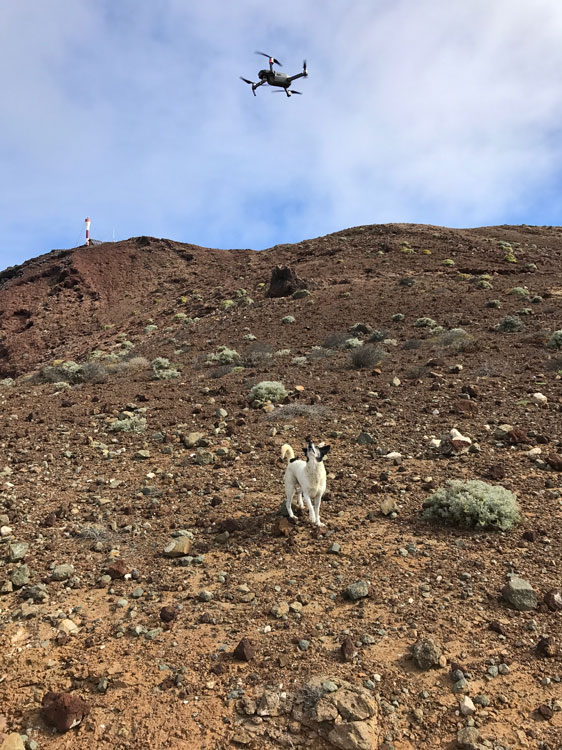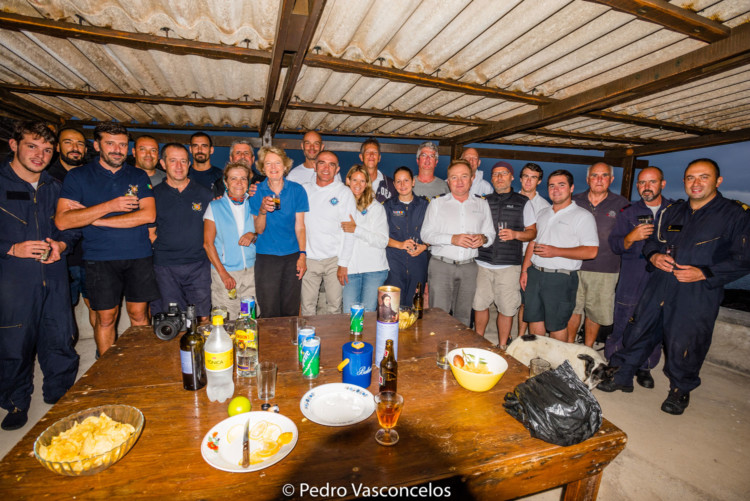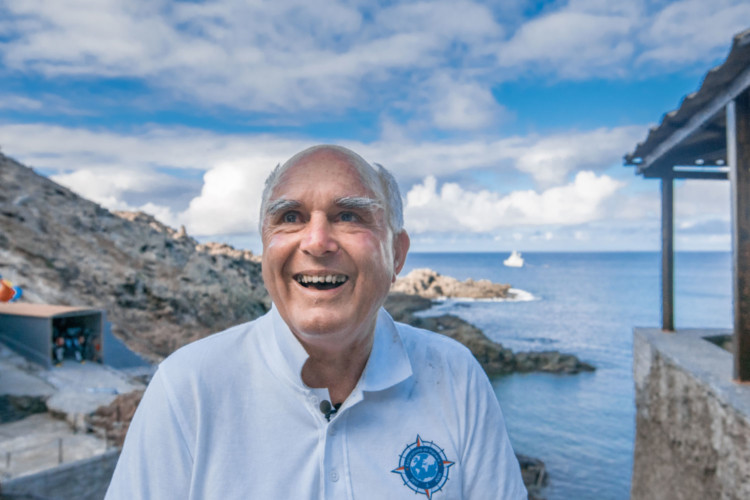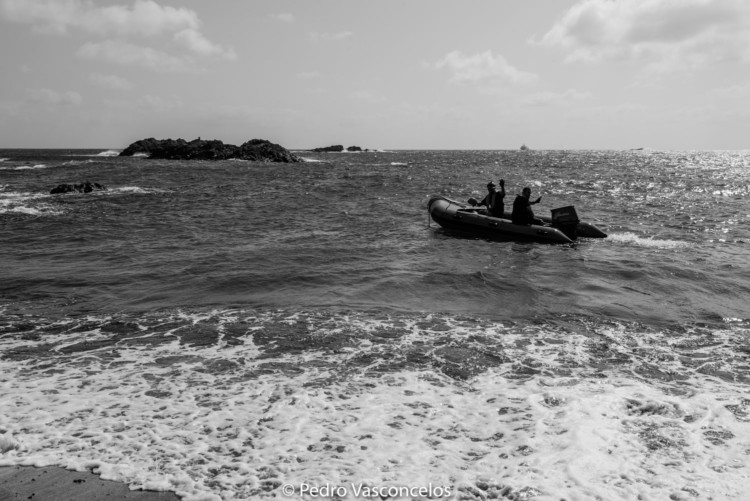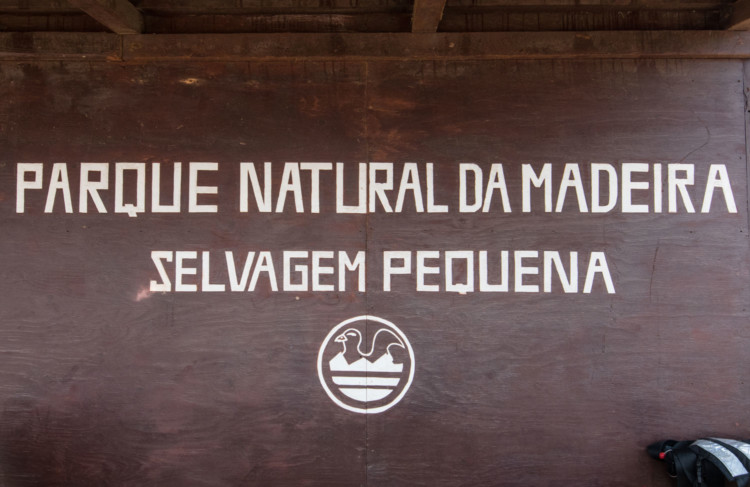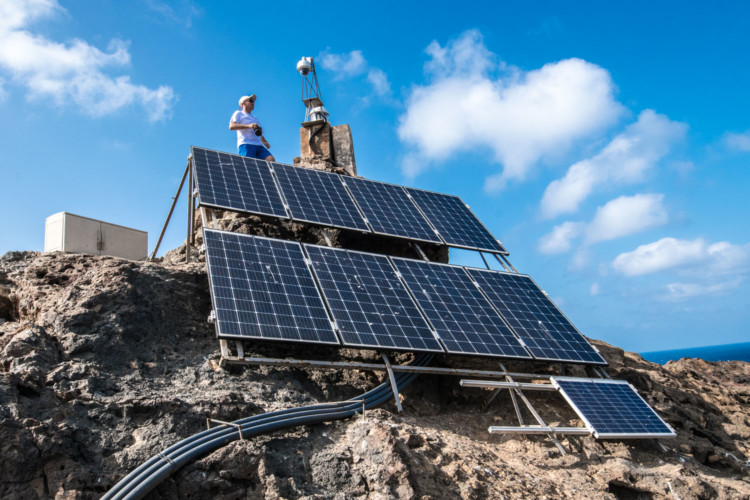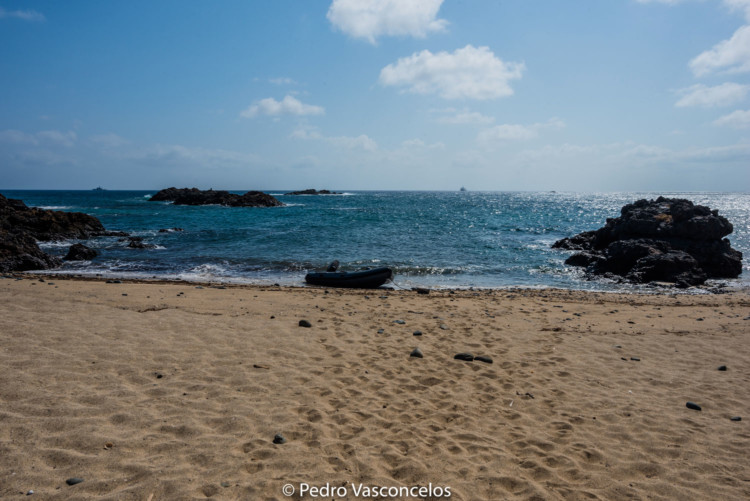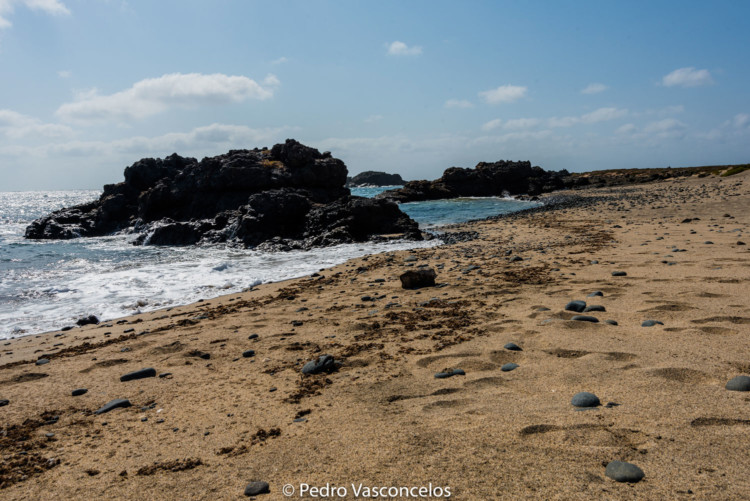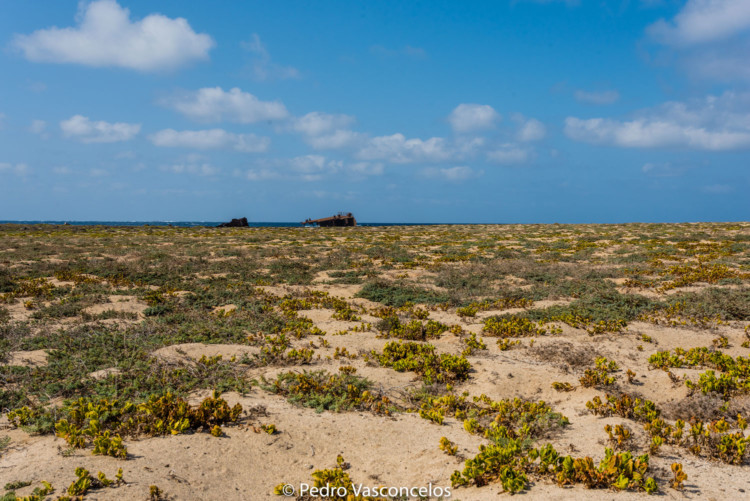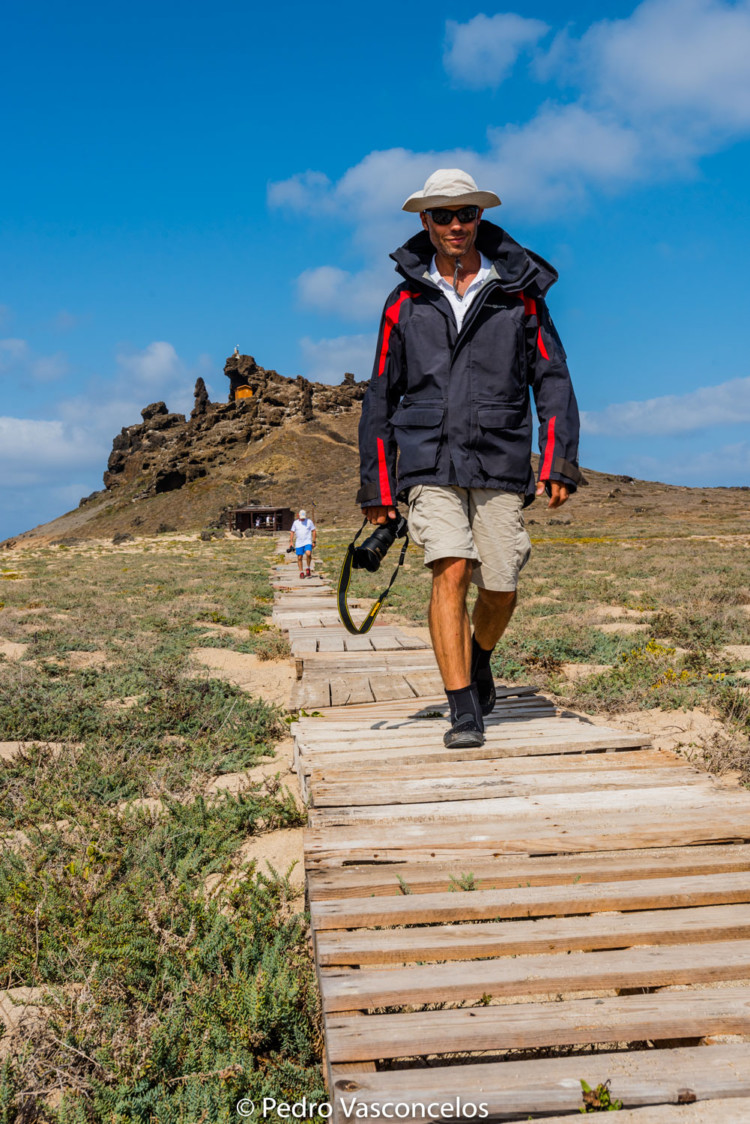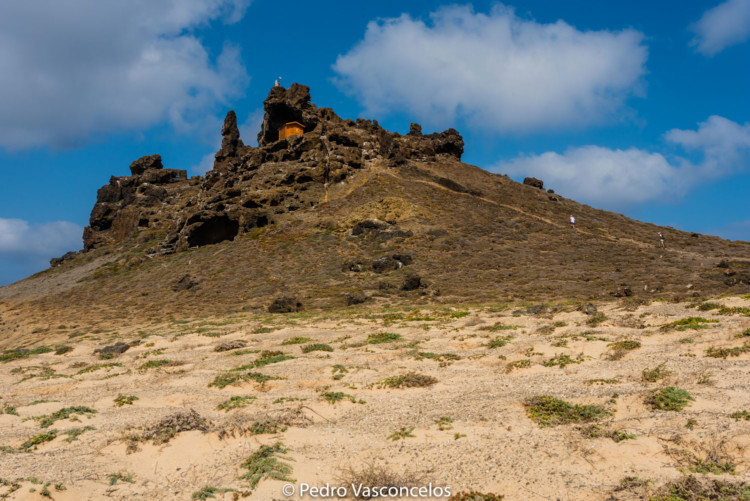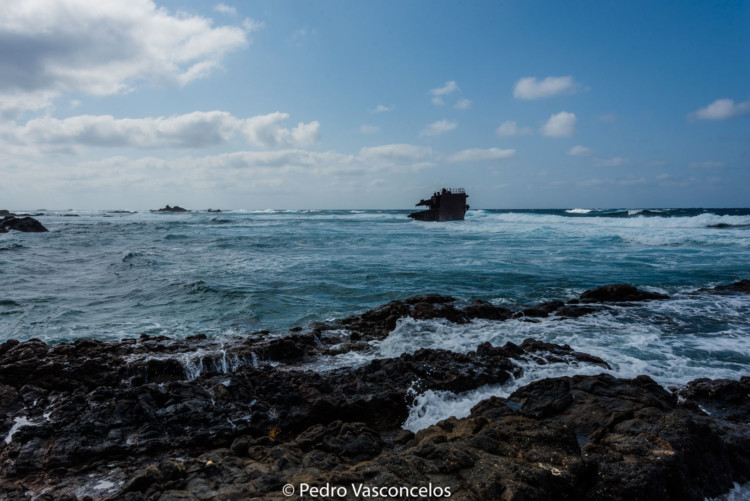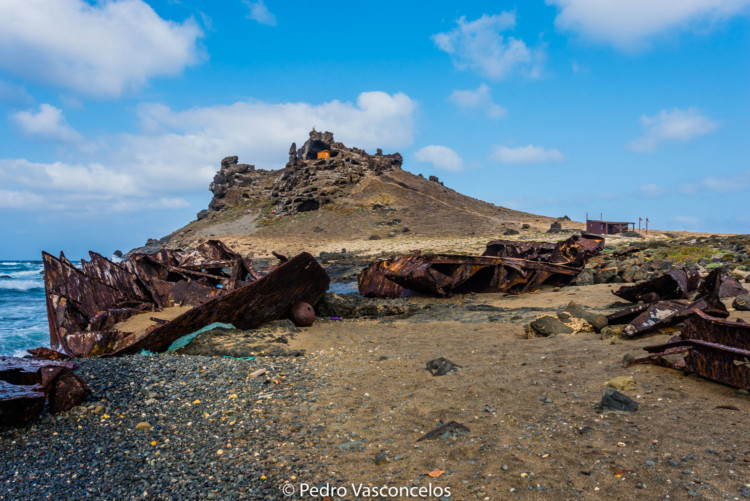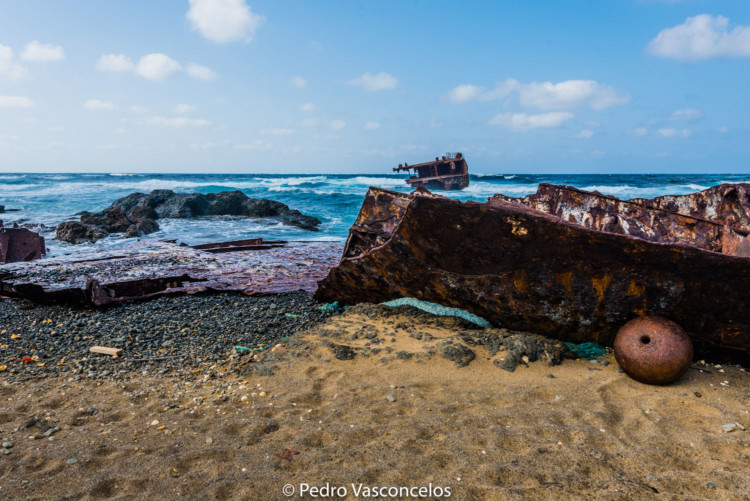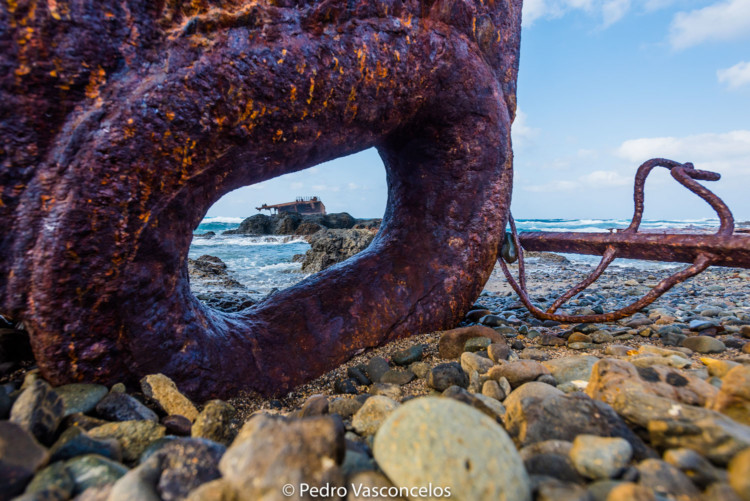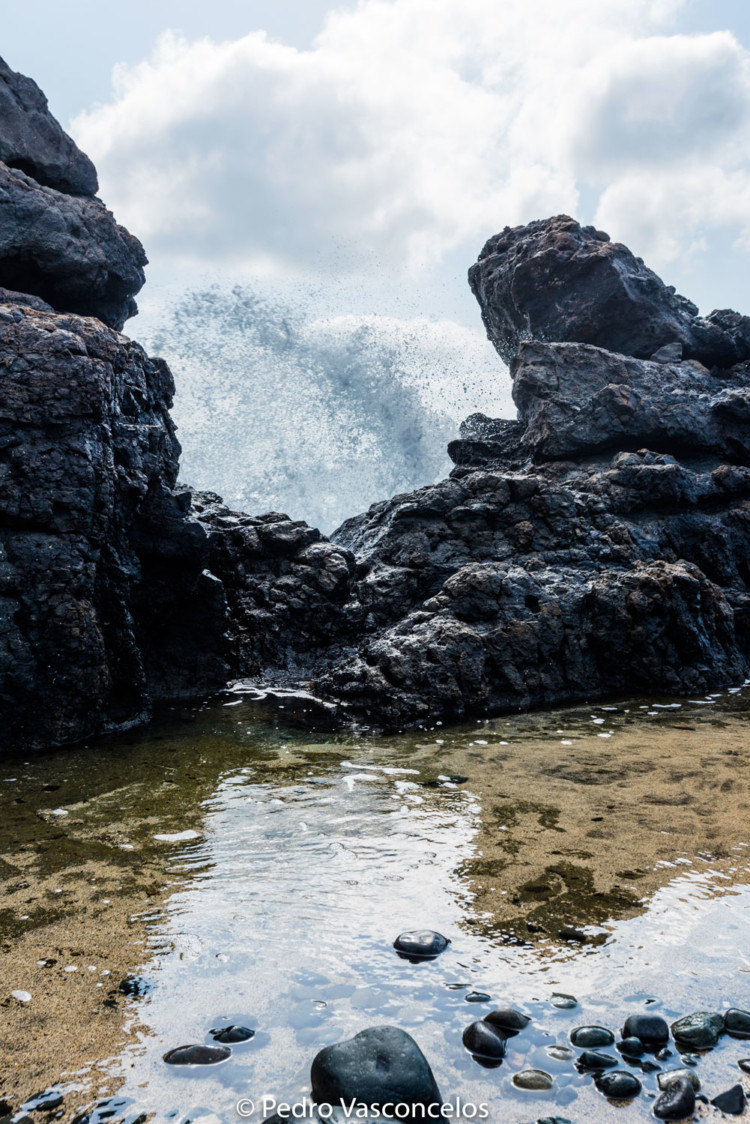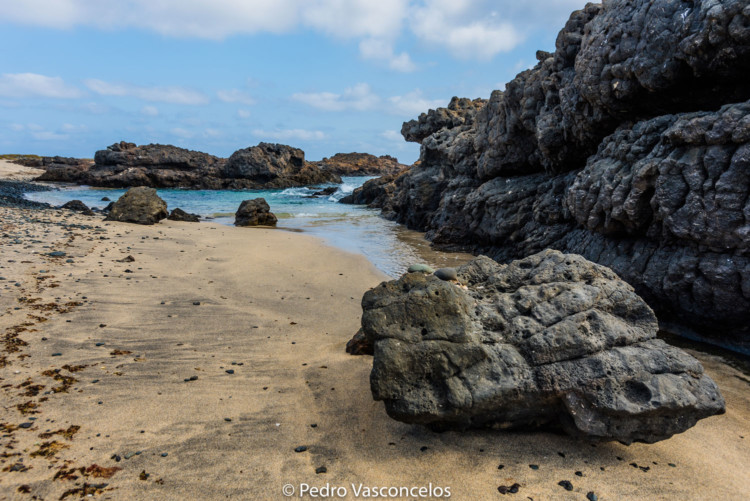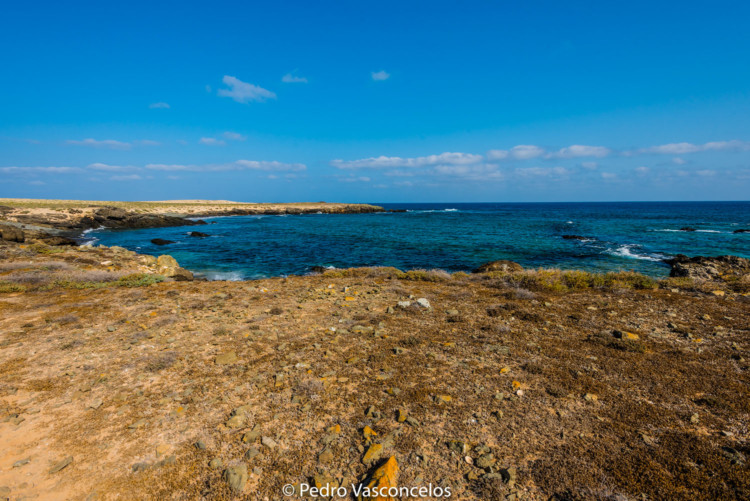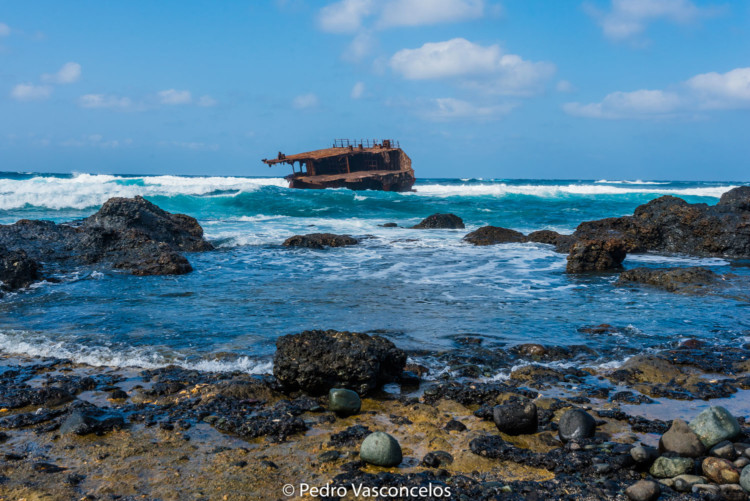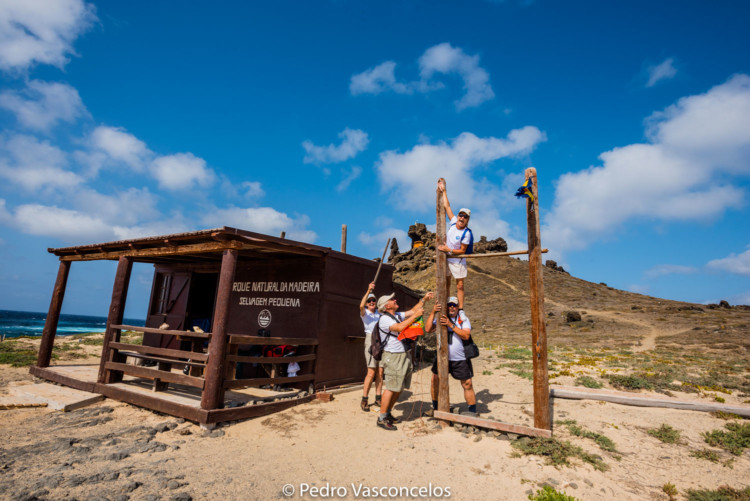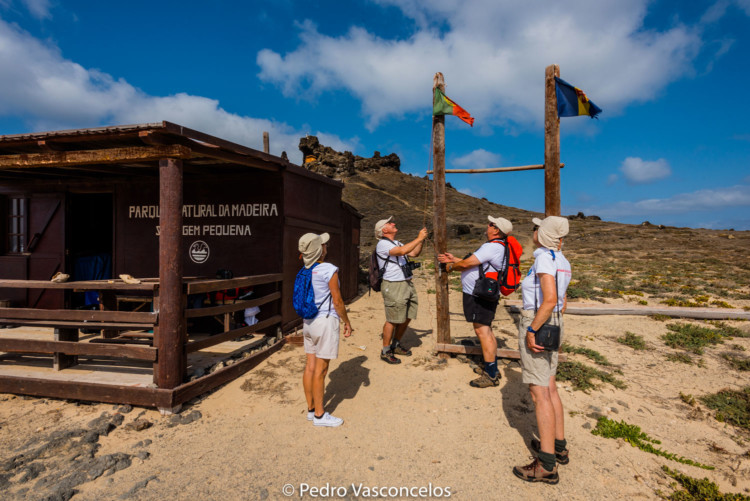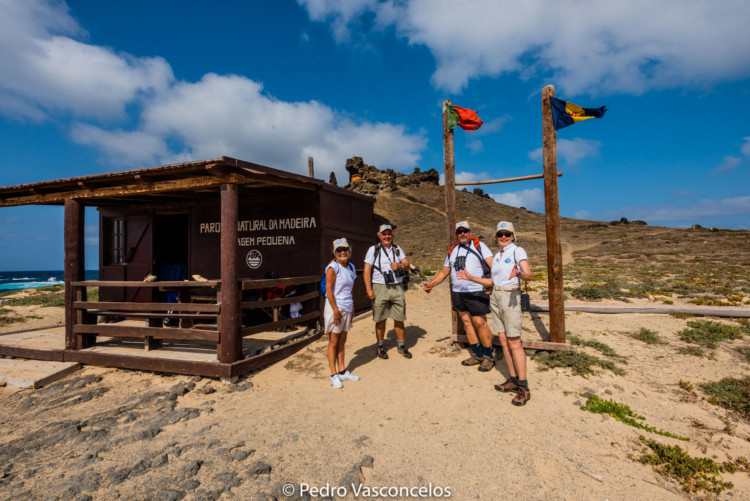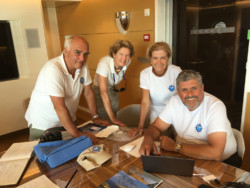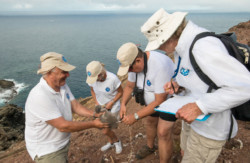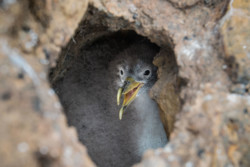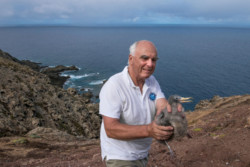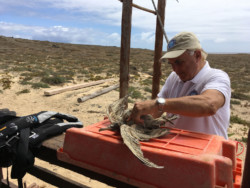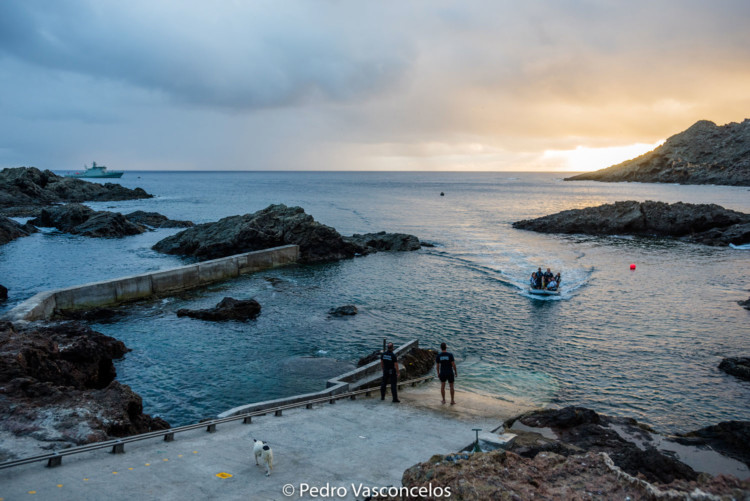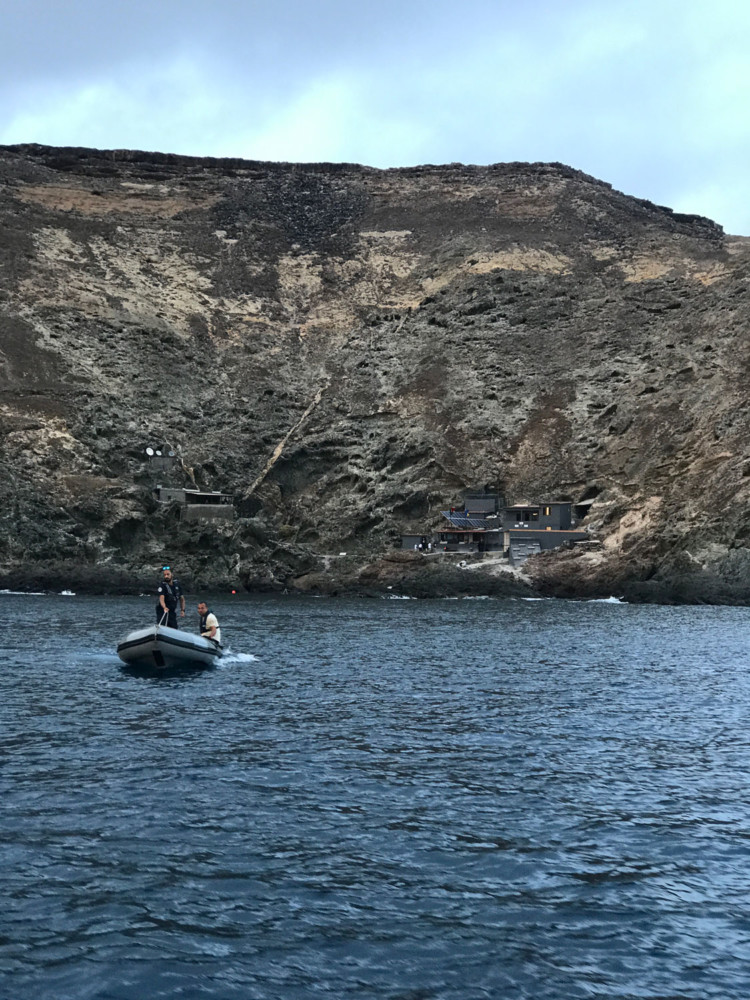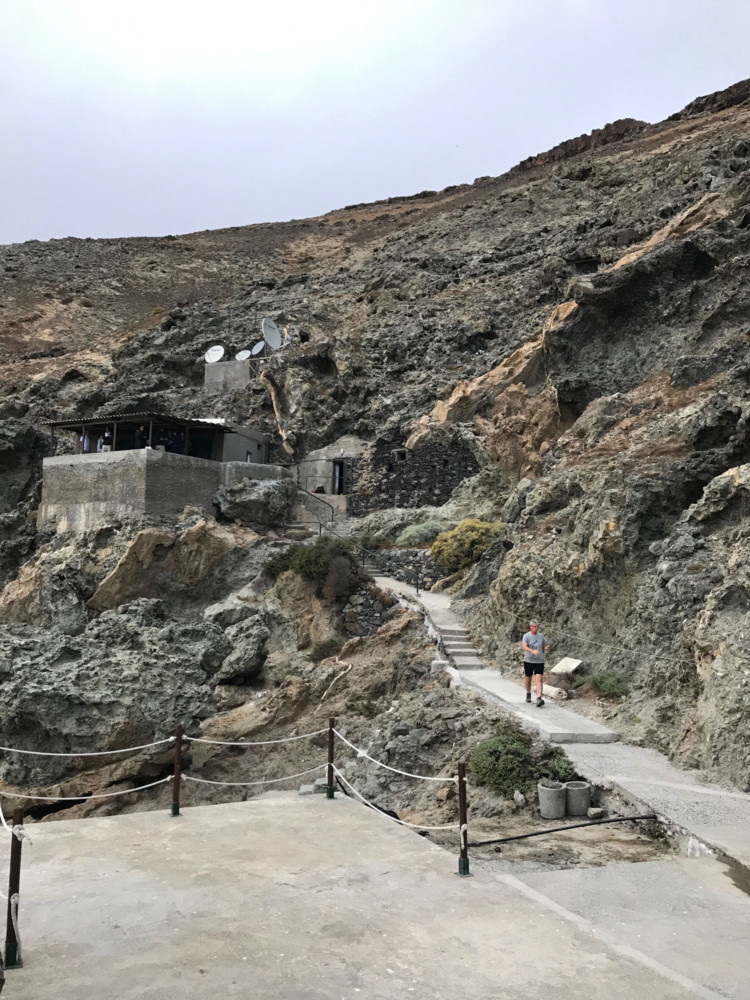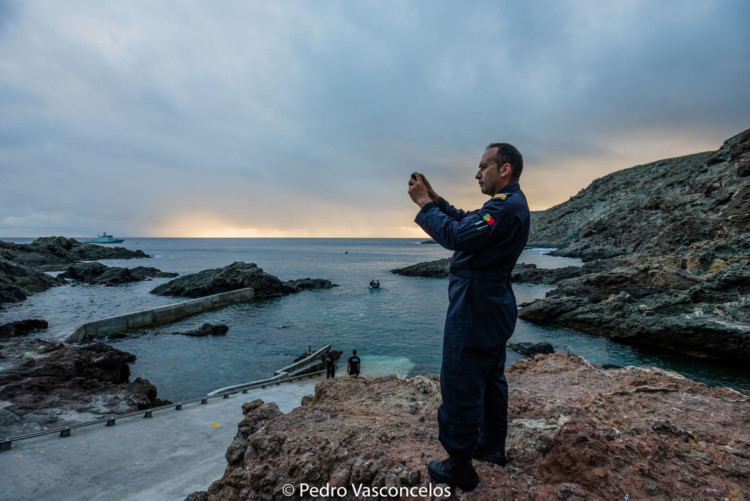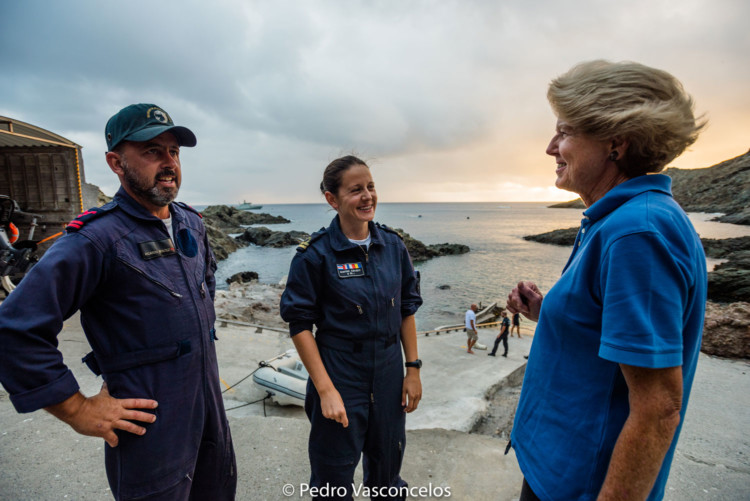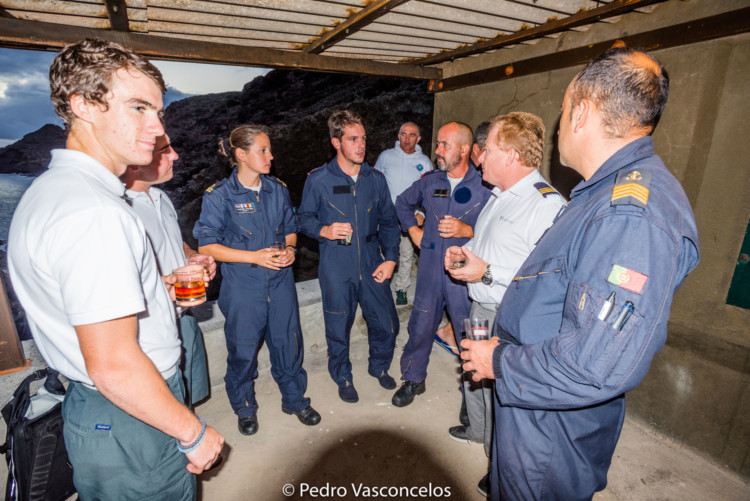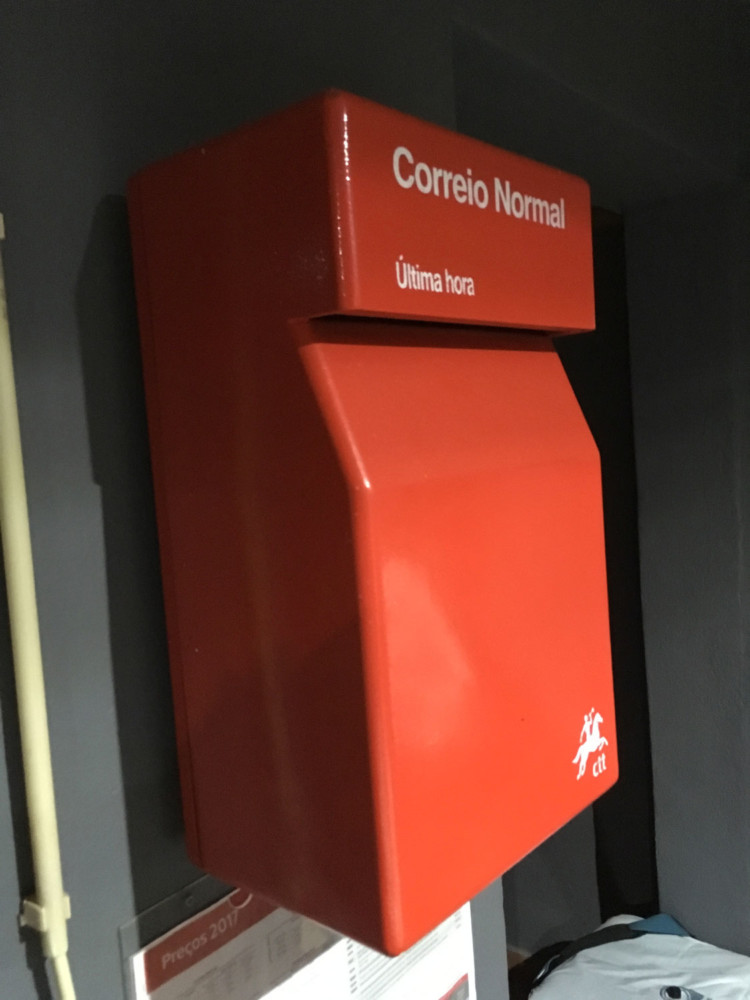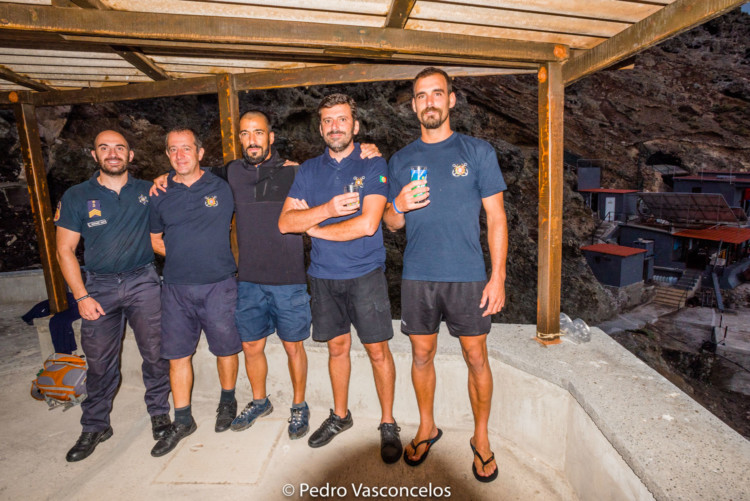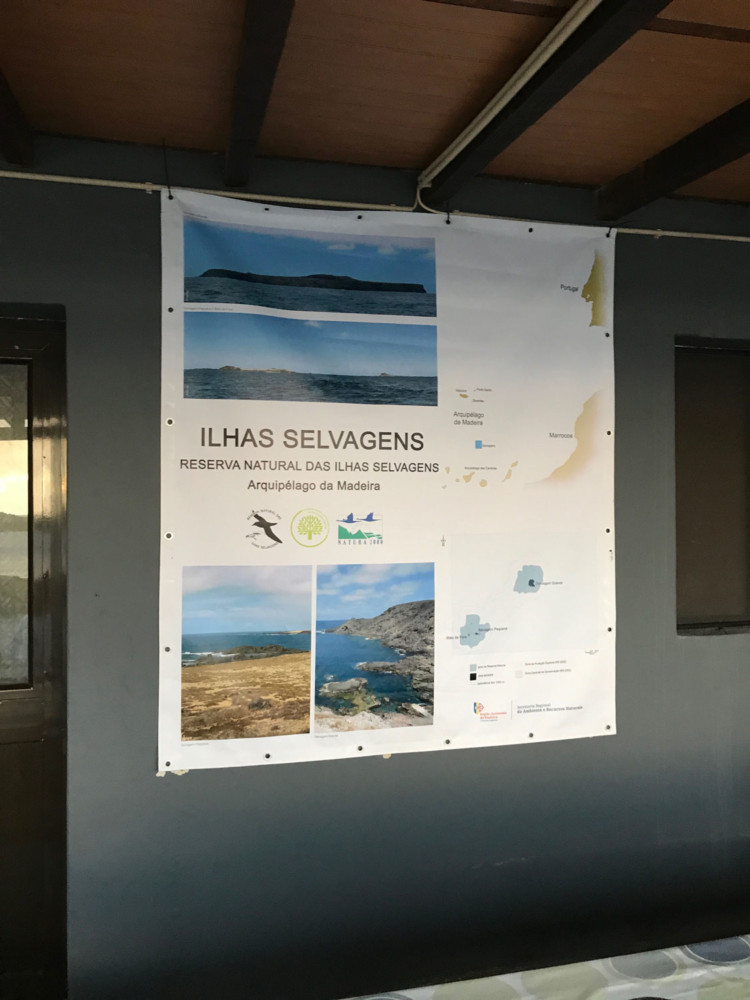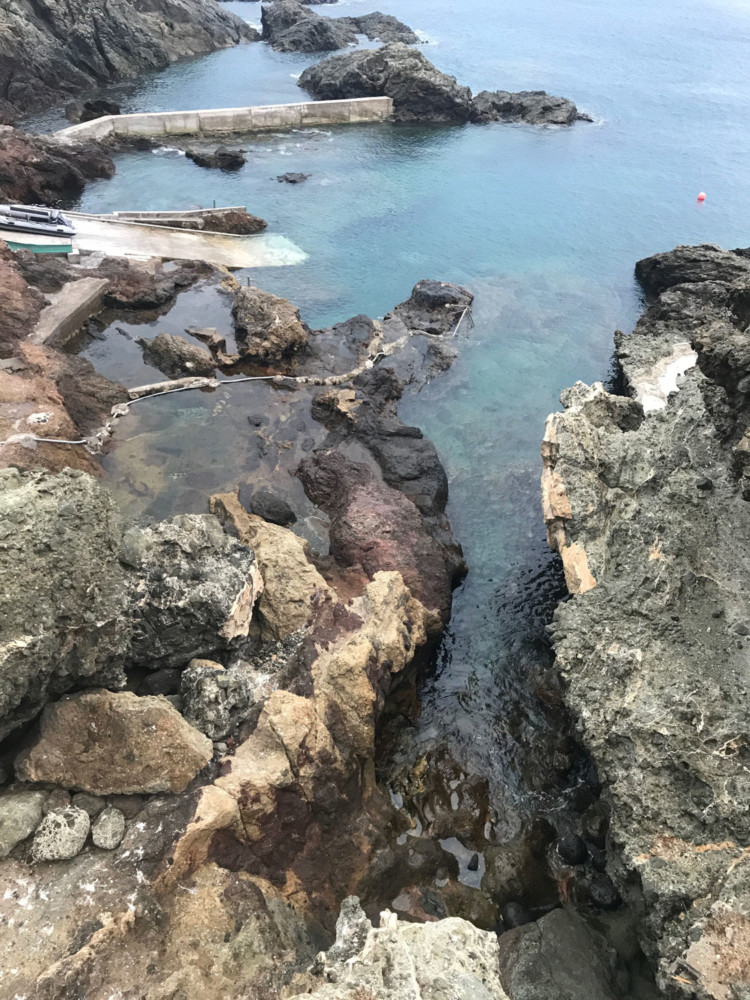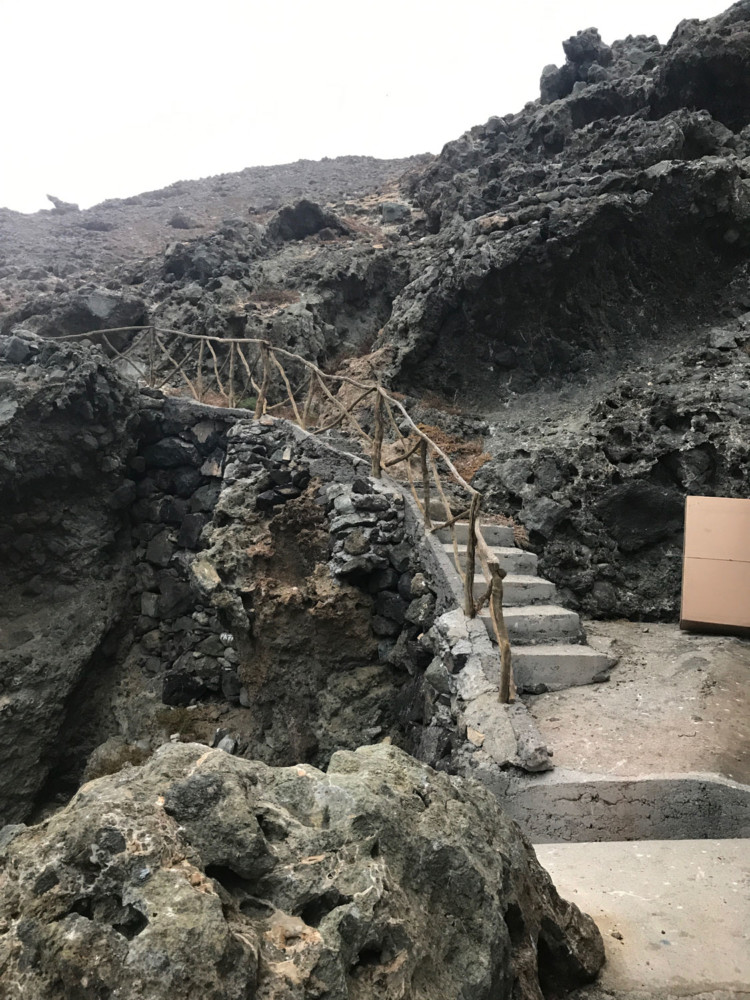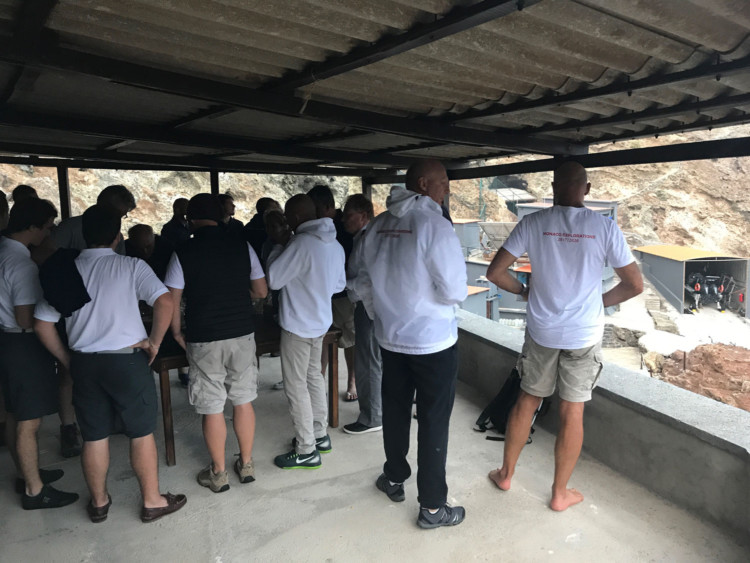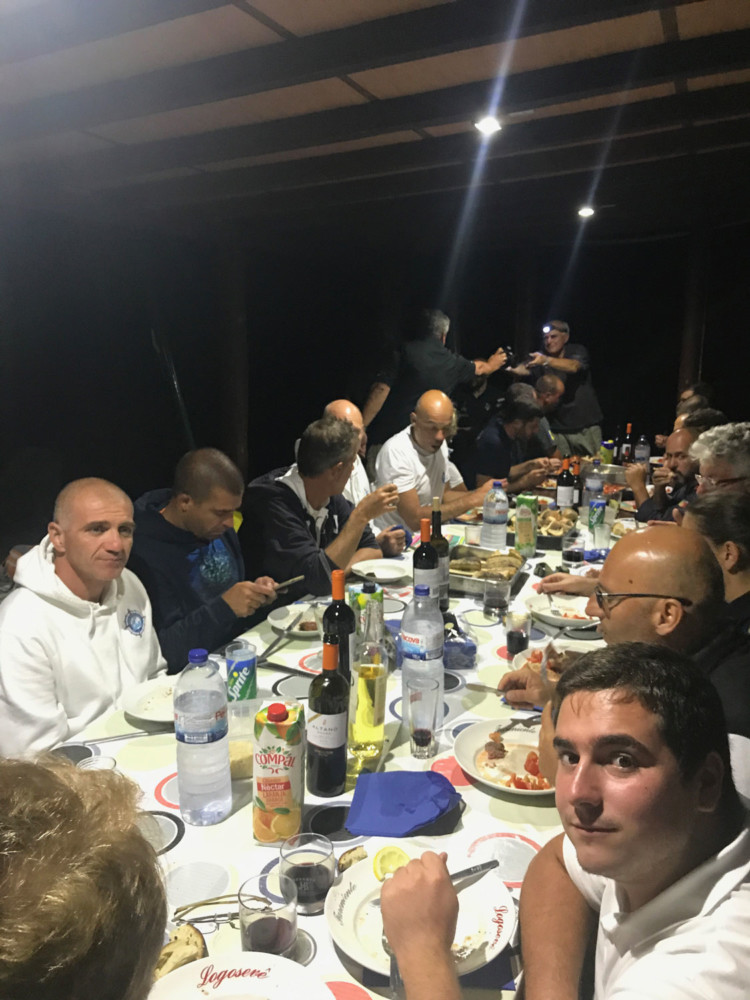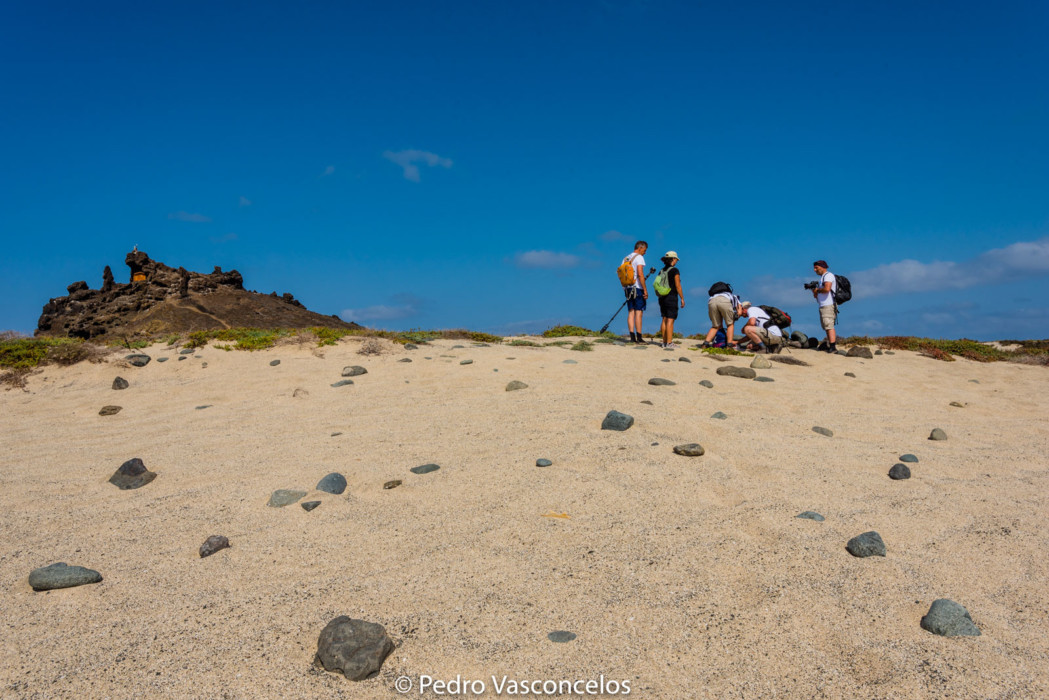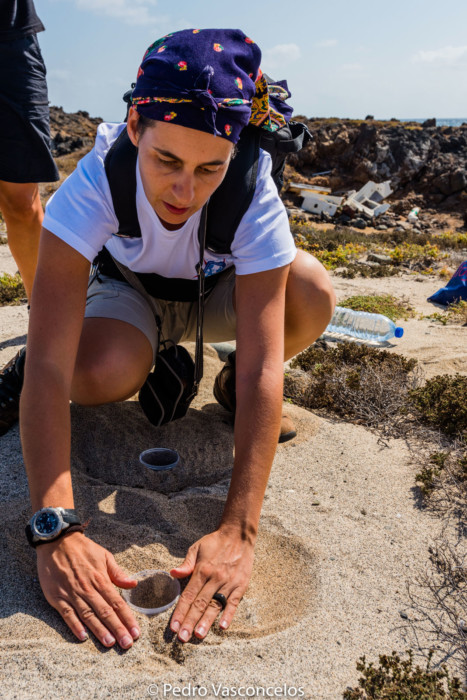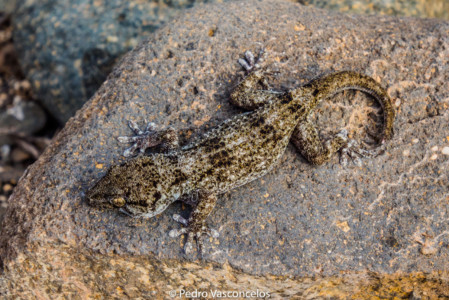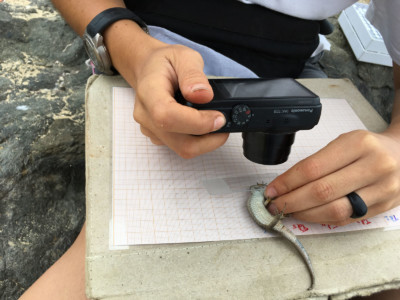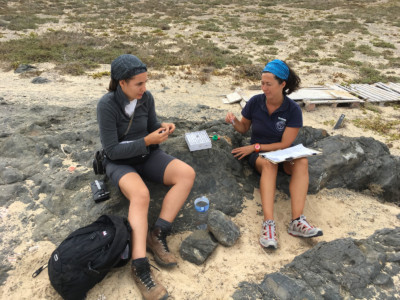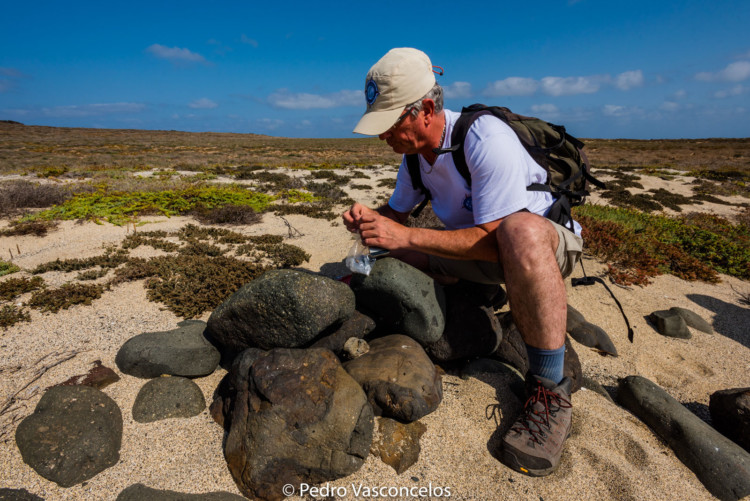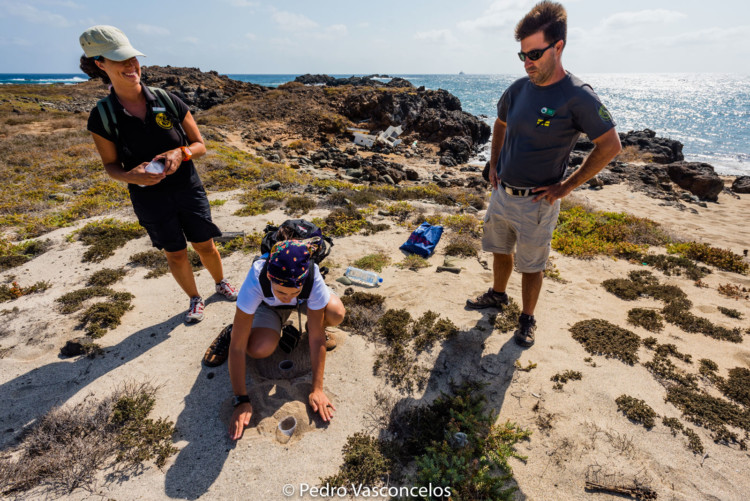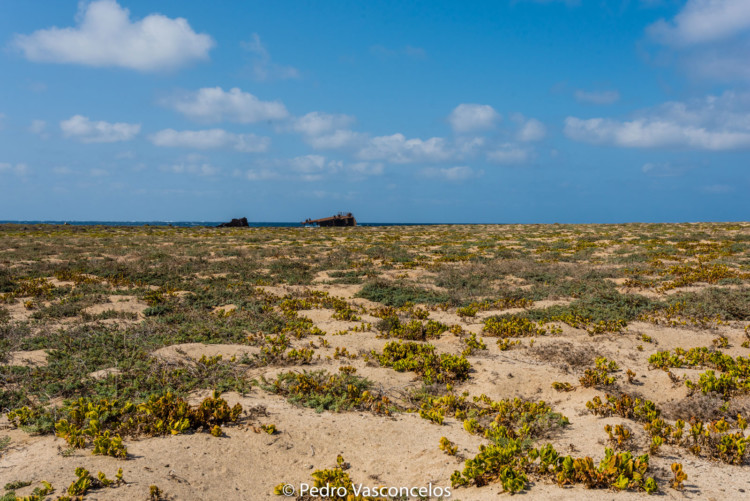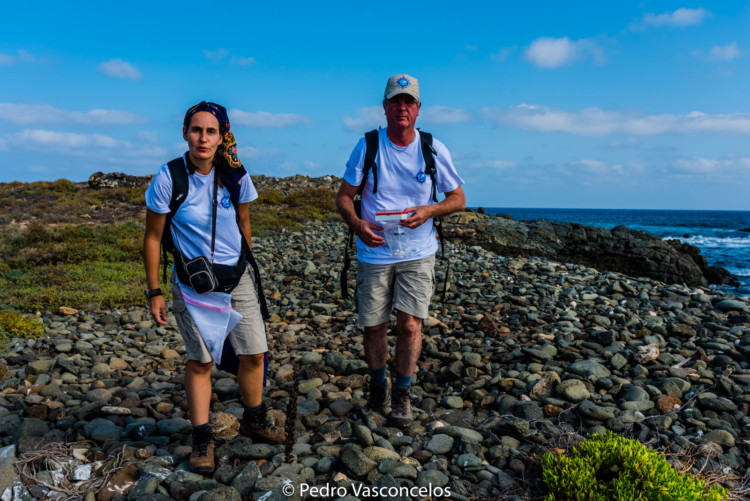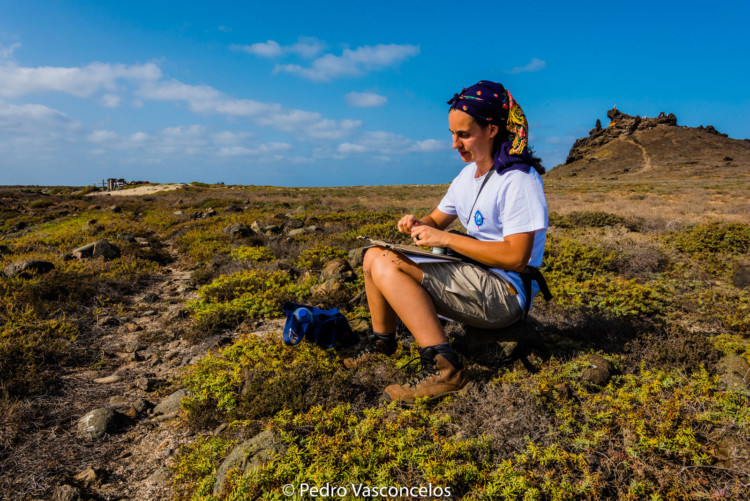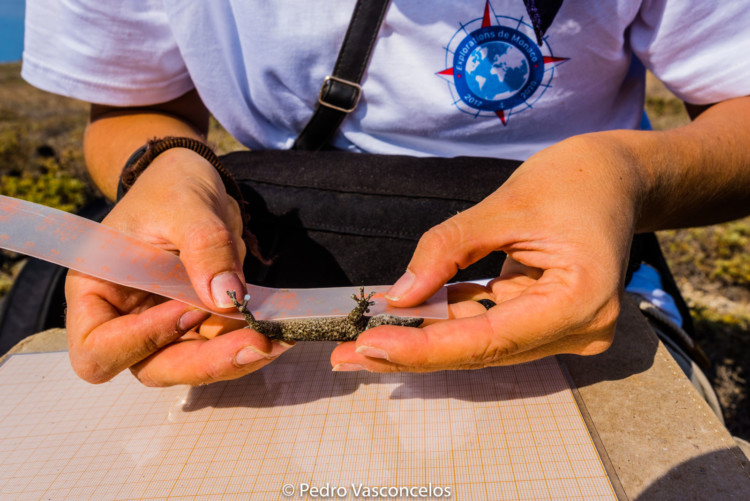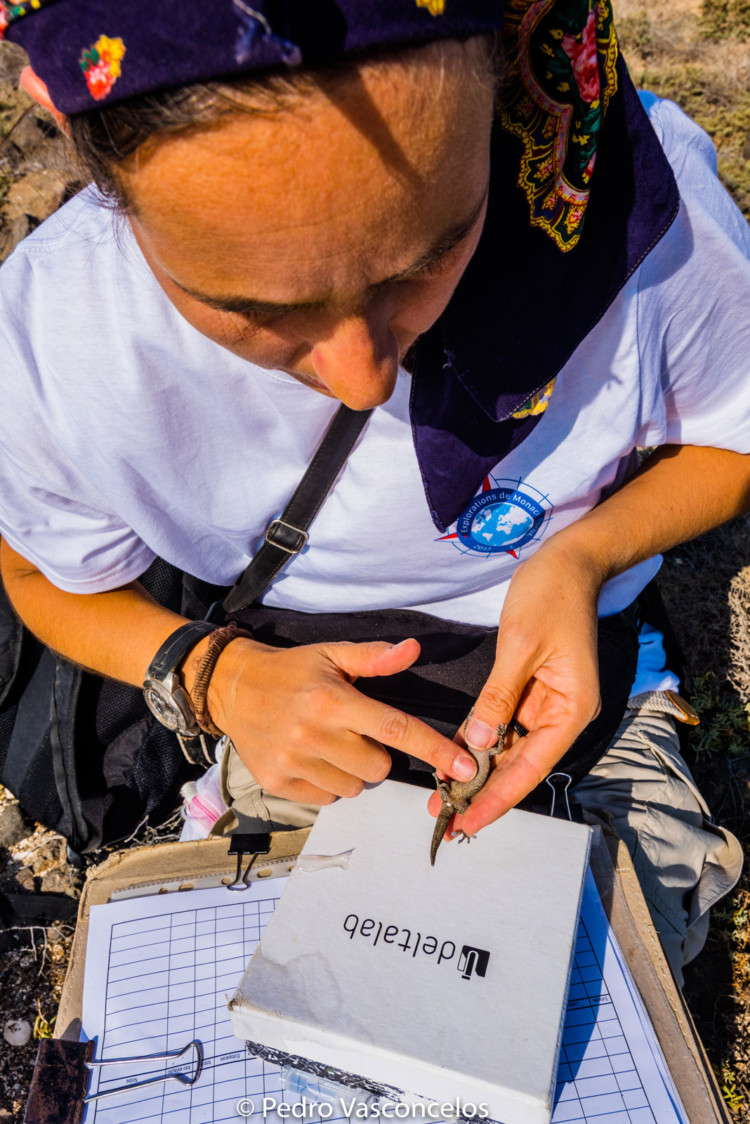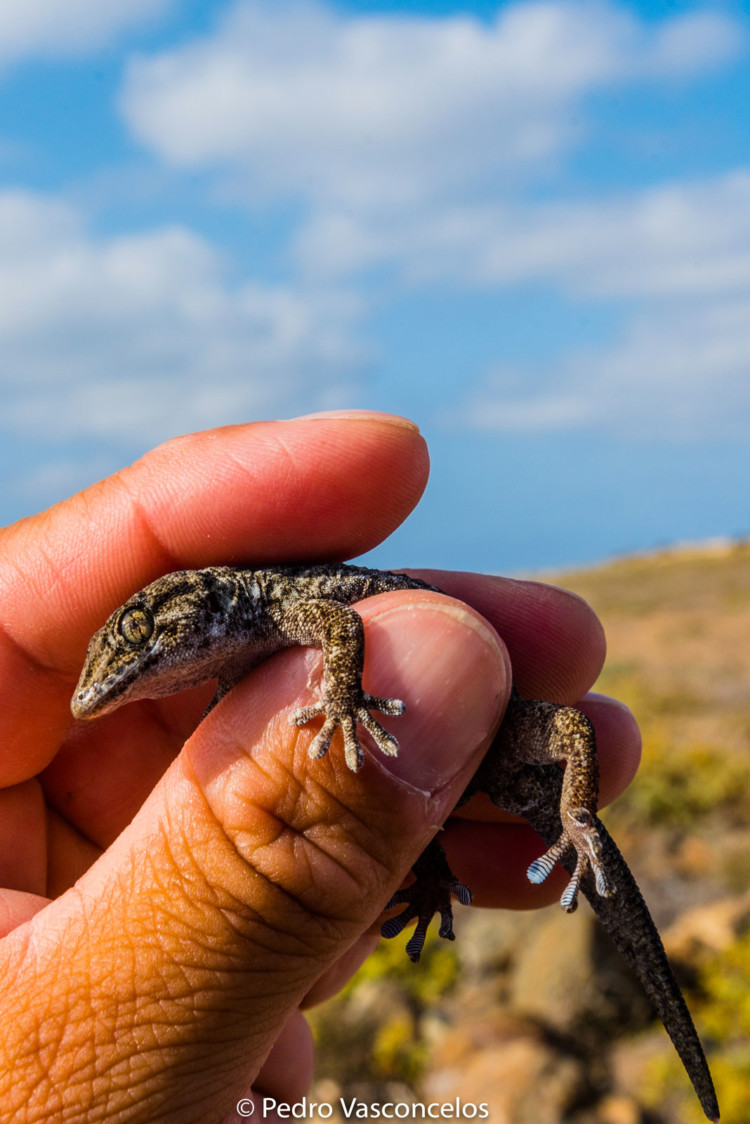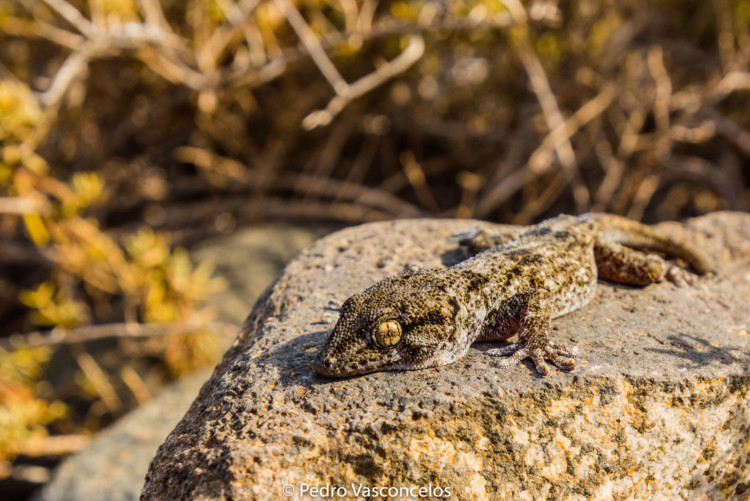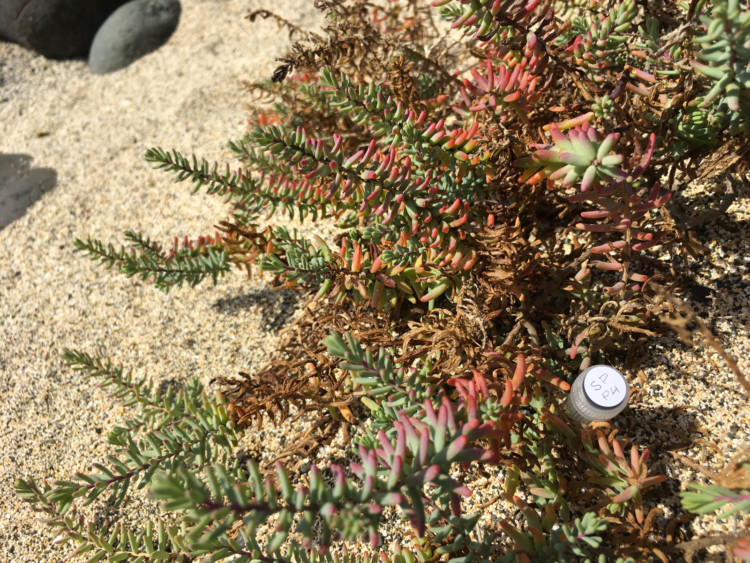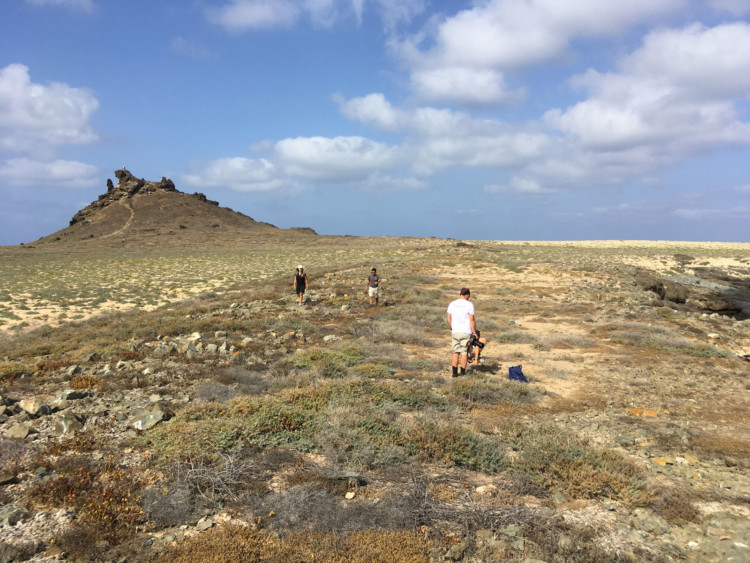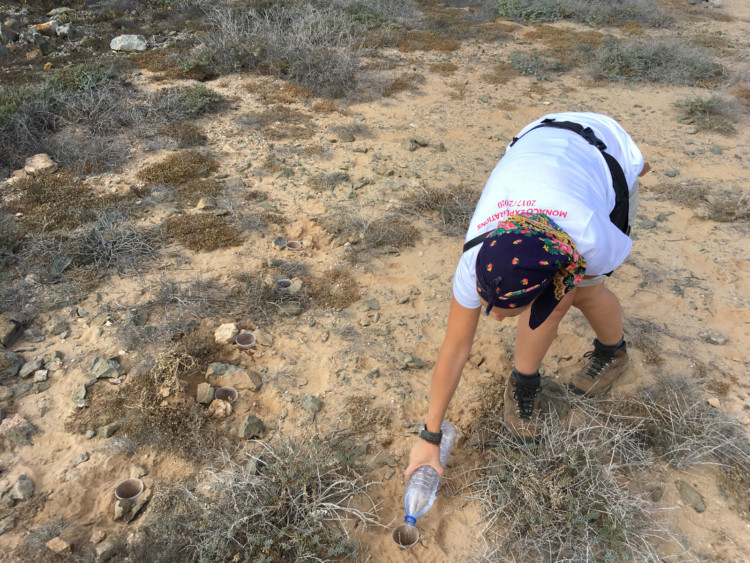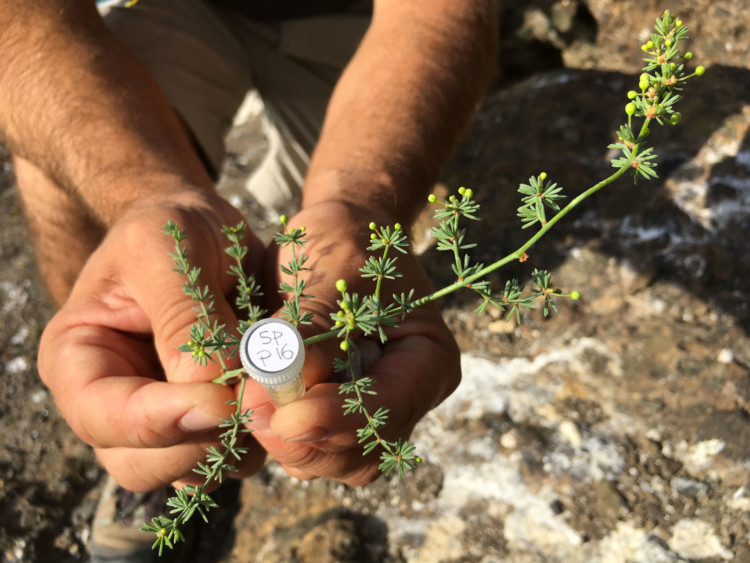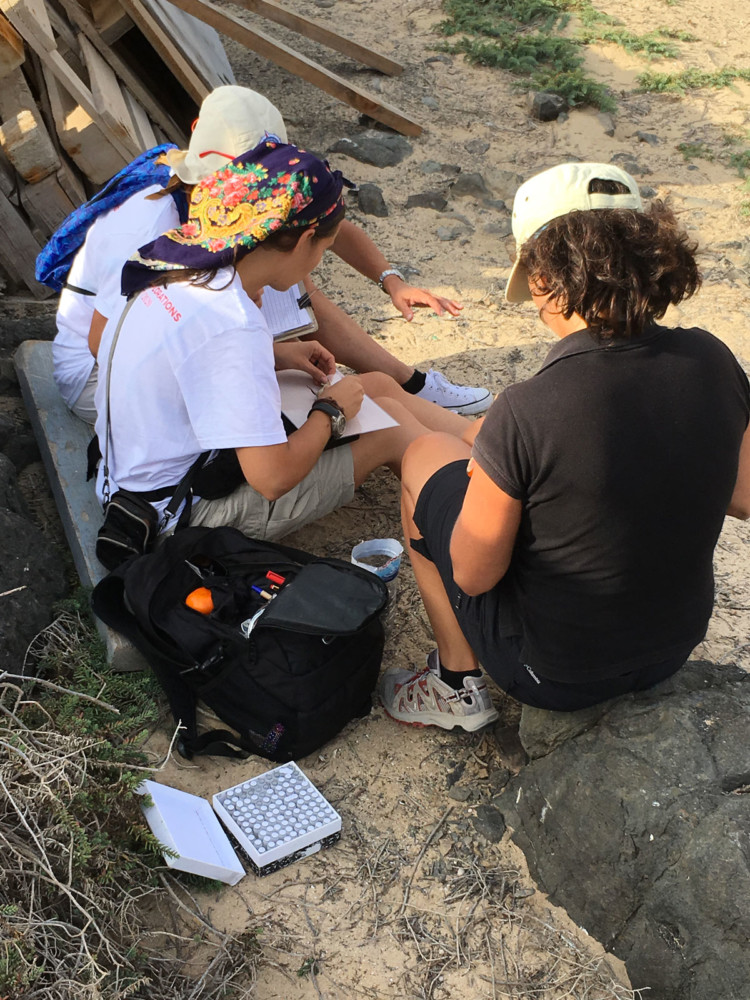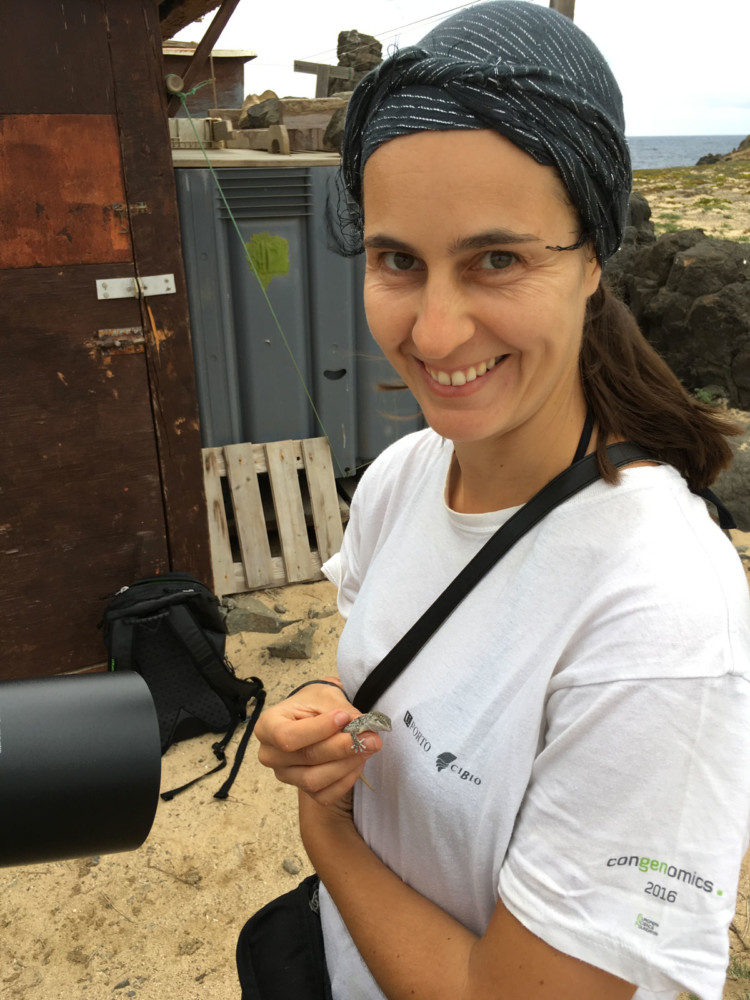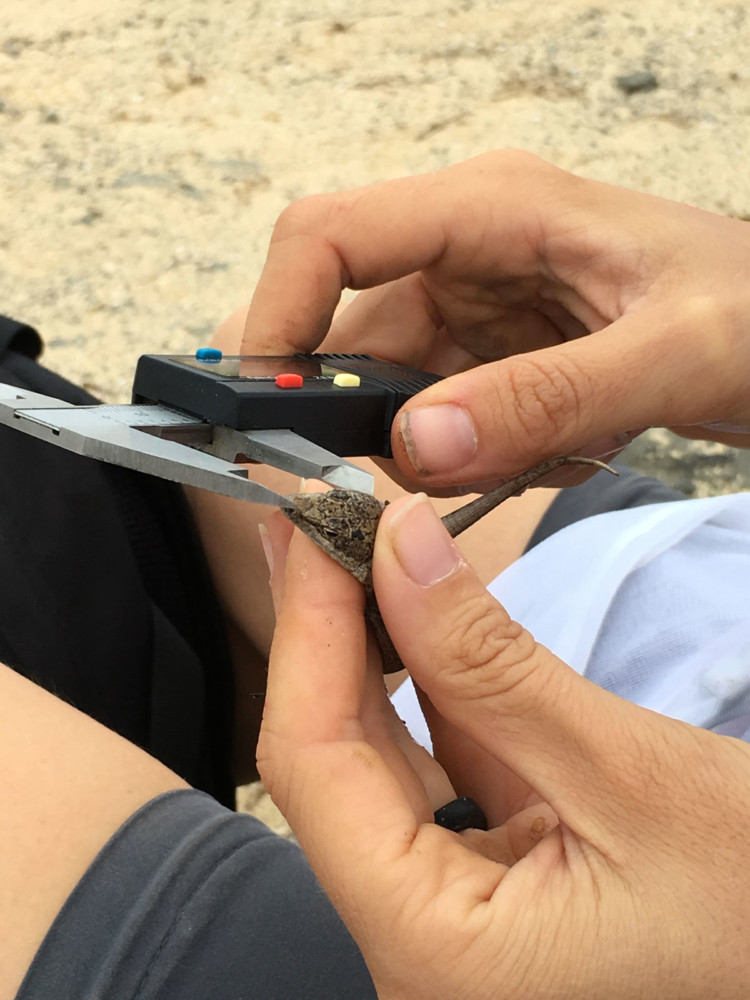As the Yersin left the first mission in Macaronesia to cross the Atlantic, we welcomed a team from Aix-Marseille Université onboard. This team spent the 20-day transatlantic trip making 18 station stops and covering 6000km to study what is well known as the Sargasso Sea.
The team of 8 documented their time on the Yersin and the work they performed on this site. I encourage you to take a look and read about their part of the Monaco Explorations expedition there.
Here are photos from the expedition, courtesy of Olivier Borde.
As the Yersin travels from Cabo Verde to Martinique, a team of researchers led by Thomas Changeux from Aix-Marseille University will be on board to collect samples and observe the occurrences in the deep sea.
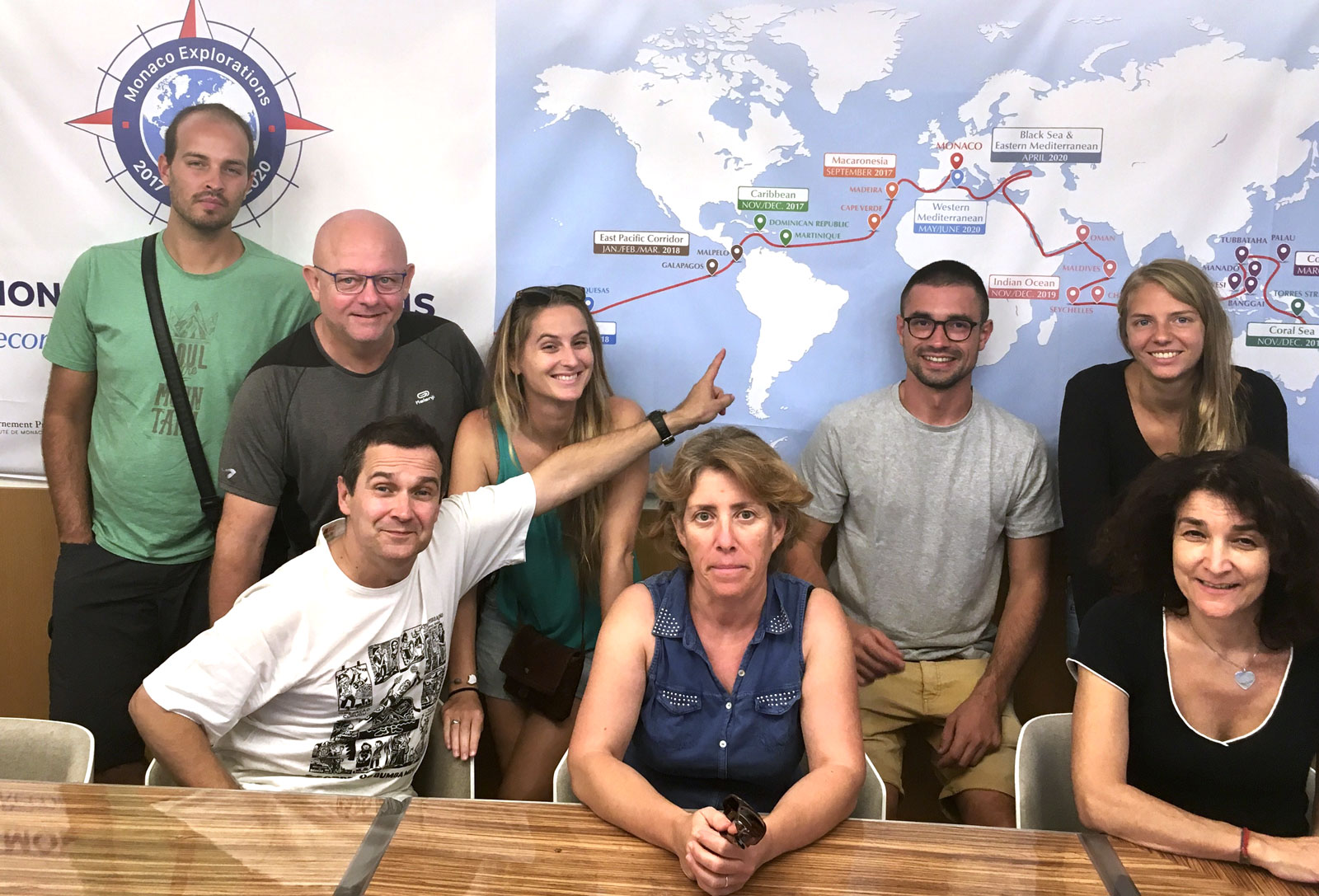 What is Sargassum?
What is Sargassum?
Sargassum are brown marine seaweed from the genus Sargassum. Only two species (Sargassum natans and Sargassum fluitans) are known to live in the open ocean, having a strictly pelagic cycle. But there are about 350 other species of Sargassum attached to the bottom of the sea in the coastal zone, part of the benthic habitat.
What is your goal in studying Sargassum?
Everybody knows the Sargasso Sea described by Christopher Columbus during his trip to the New World, close to Bermuda archipelago. Since 2011, unprecedented and repetitive large mass strandings of the pelagic species of Sargassum have been reported in the North Atlantic along the coasts of West Africa, Caribbean, West Indies and the Brazilian coasts. Simultaneously, satellite imagery has revealed new Sargassum blooms further south in the north equatorial current forming what we can call a “new Sargasso sea”. What are the causes of this phenomenon? And what are the consequences for pelagic life of the ocean? These are the two main questions we want to answer.
Why are Sargassum an threat in the Caribbean?
The large mass strandings of Sargassum are deleterious, depriving coastal life of light and creating large amounts of organic matter in putrefaction at shore. These “brown tides” have dramatic consequences on water and air quality, on the health of the population and on the economic life in the Caribbean. Hydrogen sulfide concentration in the air may be so high that it can corrodes metals in the vicinities of the shores, especially electronic circuits.
During Prince Albert’s visit in Cabo Verde we christened the new GEOMAR Ocean Science Center Mindelo, Skyped with 300 schoolchildren in Monaco, visited the island of Branco to pick up Raquel and Aurélien and hear about their work looking for evidence of the giant skink, learned about the GEOMAR wave glider that is aboard the Yersin, and visited a sea turtle hatchery on the beaches of Boa Vista.
GEOMAR Ocean Science Center Mindelo
The GEOMAR Helmholtz Center for Ocean Research Kiel and the National Cabo Verdean Fisheries Research Institute INDP generously hosted an event to welcome HSH Prince Albert II to Cabo Verde with a first opening of their Ocean Science Center Mindelo (officially opening in late 2017).
The event was attended by nearly 200 people who heard speeches from:
- HSH Prince Albert II of Monaco
- Robert Calcagno, Director of the Oceanographic Museum of Monaco
- Carlos Évora, Director Nacional de Economia Marítima of the Republic of Cabo Verde
- Dr. Astrigilda Silveira, Vice-Rector of Universidade de Cabo Verde
- Dr. Osvaldina Silva, President of the Instituto Nacional de Desenvolvimento das Pescas (National Institute for Fisheries Development)
- Dr. Peter Herzig, Director of GEOMAR
- Dr. Björn Fiedler, Chief Scientist at GEOMAR
Read more about the creation of the Ocean Science Center Mindelo here event here, and watch the live broadcast on the GEOMAR Facebook Page.
Scinque Géant Returned to Cabo Verde
HSH Prince Albert II (with help from our partners at the Oceanographic Museum of Monaco and Head of Missions Robert Calcagno) returned to Cabo Verde for research purposes one of the giant skink specimens collected in the early 1900’s by Prince Albert 1st, which has been housed at the museum.
President of Cabo Verde, Jorge Carlos Fonseca, hosted Prince Albert II for this symbolic ceremony of collaboration between Monaco and Cabo Verde.
[vc_row][vc_column][gem_video video_src=”https://www.monacoexplorations.org/videos/TraditionalDance.m4v” image_src=”27327″][vc_column_text]
HSH Prince Albert II and Robert Calcagno Skype with 300 Schoolchildren in Monaco
Educating and involving youth in Monaco Explorations is one of the main goals of this campaign. There is no better place to start than at home. We were happy to facilitate a “virtual field trip” to Cabo Verde’s Ocean Science Center Mindelo via Skype for more than 300 schoolchildren at the Oceanographic Museum of Monaco. The children prepared questions for HSH Prince Albert II and Museum Director, Robert Calcagno.
You can watch the Skype session from the Museum’s Facebook Page.
Questions from the kids:
- Is your family with you on the boat?
- Do you miss them?
- When are you going to come back to Monaco?
- The monk seals could disappear. How are you going to save them?
- What can we do to help save the oceans?
- The expedition is 3 years! Will the crew on the boat be able to see their families?
[/vc_column_text][/vc_column][vc_column][/vc_column][vc_column][/vc_column][vc_column][/vc_column][/vc_row]
This post is continued from Part One
During Prince Albert’s visit in Cabo Verde we christened the new GEOMAR Ocean Science Center Mindelo, Skyped with 300 schoolchildren in Monaco, visited the island of Branco to pick up Raquel and Aurélien and hear about their work looking for evidence of the giant skink, learned about the GEOMAR wave glider that is aboard the Yersin, and visited a sea turtle hatchery on the beaches of Boa Vista.
Back to Branco
In a recent blog post, we explained that scientists Raquel Vasconcelos and Aurélien Miralles were camping on the island of Branco to collect samples and search for evidence of the presumed extinct giant skink. Today their work is complete and HSH Prince Albert II makes the trip to Branco to join them for a few hours and learn about their time there, and find out first hand what, if anything, they have discovered about the giant skink.
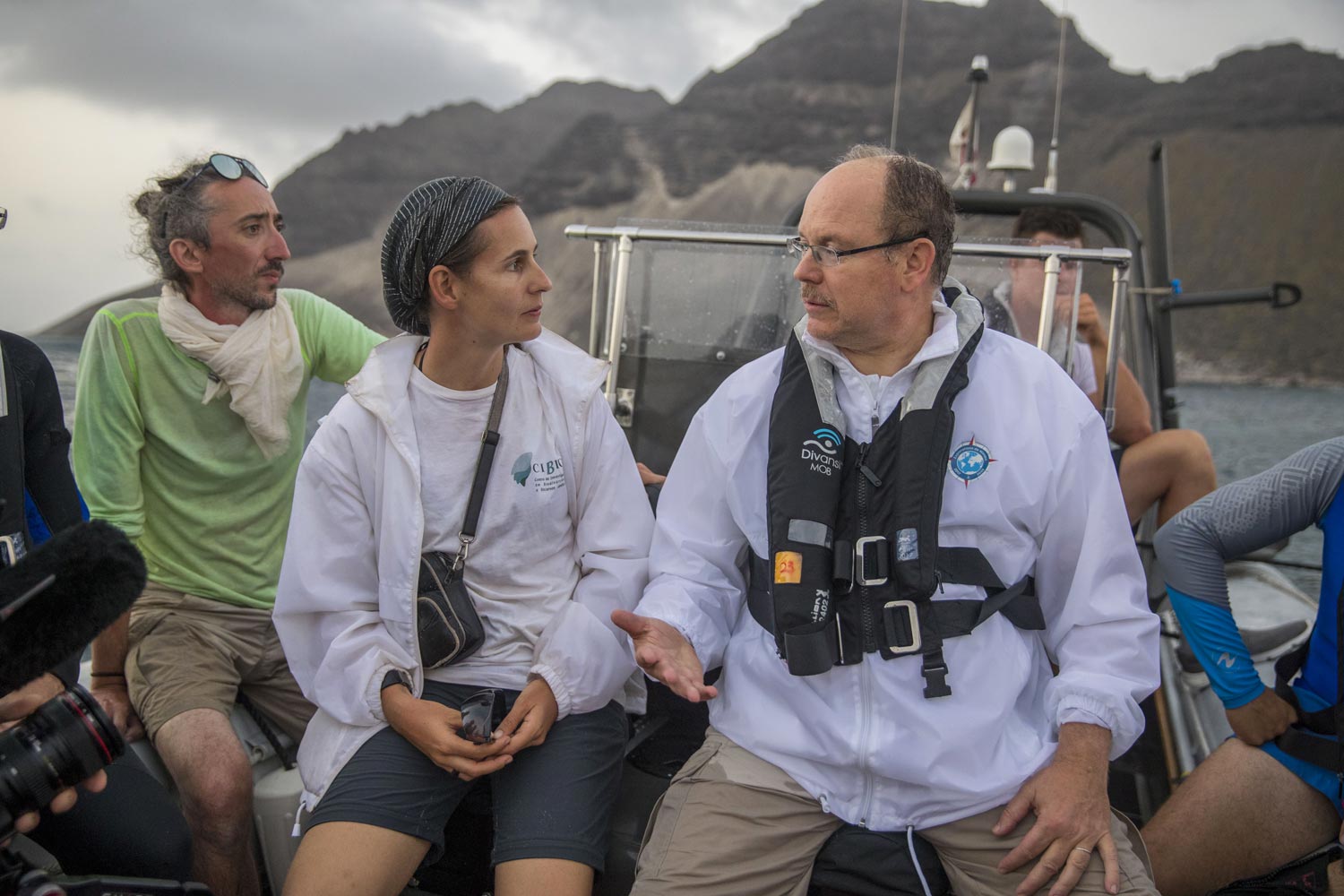
GEOMAR Wave Glider
Dr. Björn Fiedler of GEOMAR talked with HSH Prince Albert II to explain the purpose and capabilities of the wave glider and bottom lander, both of which were deployed from the Yersin.
“Jointly with Monaco Explorations we will launch state-of-the-art measuring platforms such as lander and wave glider to collect physical, chemical and biological data which are important for future marine protected areas” said Dr. Björn Fiedler from GEOMAR.
Sea Turtle Hatchery
Sea turtles have been on this planet since the dinosaur ages and are disappearing all around the world, becoming an endangered species in just the last 200 years. Sea turtles play a vital role in marine ecosystems. You can read more about Why Healthy Oceans Need Sea Turtles here.
The Turtle Foundation, Project Cabo Verde invited Monaco Explorations to Porto Ferreira beach on Boa Vista Island so that we could learn about their work and gain a better understanding of the importance of sea turtle preservation in the larger scope of ocean conservation. Prince Albert II visited the hatchery and talked with the scientists who are stationed there and he gave children’s books, depicting the threats that sea turtles face, to the kids who were participating in a day camp with the Turtle Foundation.
[vc_row][vc_column][gem_video video_src=”https://www.monacoexplorations.org/videos/Hatcherywelcome.m4v” image_src=”27292″][vc_column_text]
During Monaco Explorations visit to the hatchery a few days before HSH Prince Albert arrived, we were very lucky to have been invited to witness a turtle laying her eggs at night. (These photos are courtesy of Head of Mission, Pierre Gilles)
[/vc_column_text][/vc_column][vc_column][/vc_column][/vc_row]
After leaving Branco, we traveled to the neighbor island of Santa Luzia where the GEOMAR team placed the bottom lander in its next location just off the coast at about 20m depths. It was a very windy morning and we were lucky to have professional divers with us to help determine a good location in such a rough sea. It was quite a chore also for the Yersin crew to get the bottom lander off the deck and into the water, as the wind sways the arm of the crane and threatens damage to the vessel.
After placing the bottom lander, the Yersin traveled back to Mindelo to welcome HSH Prince Albert II on the mission. These dolphins escorted us for a long period of that trip. Here is an unedited video taken with an iPhone where you can really get a feel for the dolphins that were traveling on both sides of the Yersin, and hear the wind and the sea. Enjoy!

[vc_row][vc_column][gem_video video_src=”https://www.monacoexplorations.org/videos/dolphins.m4v” image_src=”27326″][vc_column_text]
[/vc_column_text][/vc_column][/vc_row]
In June, scientists Raquel Vasconcelos from CIBIO-InBIO and Aurélien Miralles from the National Museum of Natural History in Paris came to the Oceanographic Museum of Monaco to examine Scinque Géant specimens brought to Monaco from the island of Branco in the Cap Verde archipelago in the early 1900’s by Prince Albert the 1st. This lizard species is said to be extinct but during our time here in Cabo Verde, we hope to be able to find evidence of a live Scinque Géant.
The uninhabited island of Branco has a rough terrain, is very windy, and has only one tiny stretch of beach that disappears at high tide. Because it is a difficult island to get to, let alone spend any amount of time on, there is not much research done there. However, despite the less than ideal conditions, Raquel and Aurélien managed to camp on Branco for 3 nights to collect samples for their research, and looking for evidence of the Scinque Géant.
While we traveled to Branco, we prepared the camping materials in small drums to transport them, and worked with Yersin Captain Jean Dumarais to determine the best way to get ashore with as few people and trips back and forth with the tenders as possible. One of our biggest difficulties with the work Raquel and Aurélien will be doing is that the Yersin needs to travel away from Branco while they are camping. There is no cell service, so we have to leave a satellite phone and have them check in each hour to confirm safety.
We arrived near Branco late in the afternoon and had to work fast to get the team ashore and their camp set up before sundown. The Yersin anchored a few hundred meters off the coast. The tenders took us near the shore, and from the tenders we transferred everything to the small dinghy with the local fisherman to go to the beach. It took 4 trips in total, and on the second trip, a huge wave capsized the small dinghy throwing 5 people and all the equipment into the sea. Luckily we were ok, and recovered everything before the sea carried anything away. We worked quickly to set up camp and do a few interviews before leaving the small team to fend for themselves for a few days.
Branco was quite the adventure. Raquel and Aurélien were able to collect many useful samples, but found no evidence that the giant skink still exists.

We arrived in Mindelo, São Vicente, Cabo Verde on September 15th late morning. We had to go through customs and immigration in the port, which took us a couple of hours longer than expected. The plan is to finish up here and travel toward the Senghor Seamount, arriving tomorrow, September 16th mid day. Here are a few shots from the Yersin in Mindelo as we waited on the customs process.
Retrieving the Bottom Lander
While in Cabo Verde we are working together with GEOMAR Helmholtz – one of the world’s leading institutes in marine science. We have Björn Fiedler onboard the Yersin. He is leading the mission today at the Senghor Sea Mount, which is located northeast of the islands of Boa Vista and Sal. GEOMAR deployed a bottom lander at the seamount nearly 8 months ago. It has been collecting data there and today we hope to retrieve it by sending a GPS ping that releases the anchor and allows the lander to surface.
Björn and his colleagues tell us that sending the ping does not always work, as the device has been on the seafloor for so long, sometimes it takes a couple of days to retrieve it due to any number of unforeseen circumstances. However, we only have a few hours, so this is a bit stressful because this is our one chance, and we will be disappointed to come all the way here and not be able to bring the bottom lander onboard.
Not only do we need the lander’s anchor to release and allow it to surface, we need to gently tow it through rough water to the side of the Yersin, then to be able to use our crane to bring it on the Yersin. This is very tricky because it is a large and heavy piece of equipment and today is windy, so it is quite dangerous.
We had great success, and I think the pictures tell the story well. More about GEOMAR and the specifics of the bottom lander, and their wave glider , in a future post.
We have left the Selvagem Islands and are headed to Mindelo, Cabo Verde. It will take us about 3 days at sea. It’s a good time to share photos and stories that haven’t made it into other posts.
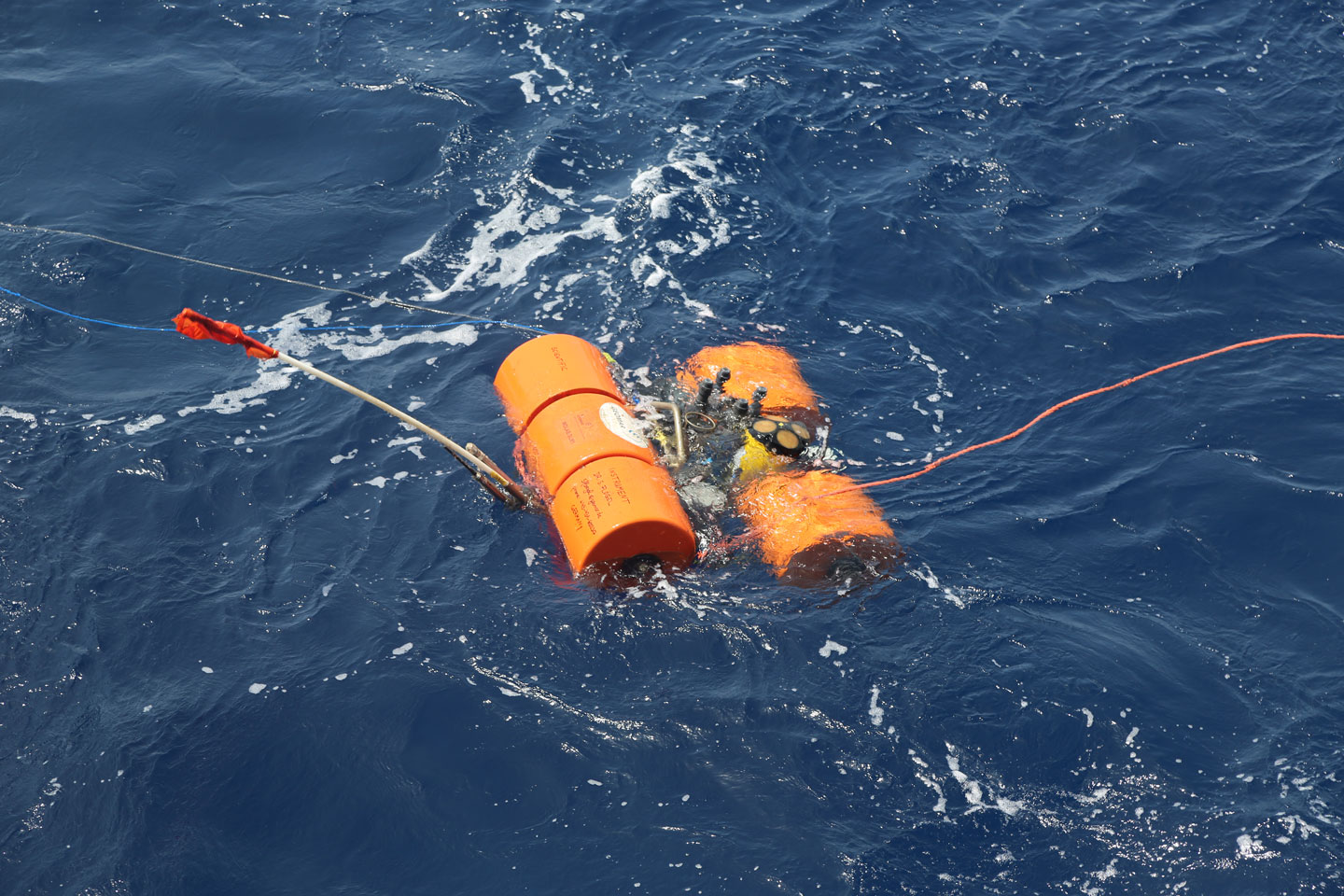
Madeira Marine Scouts
The last thing we did before leaving Madeira for the next mission was to host a group of marine scouts. One of the main goals of Monaco Explorations is to educate the public, particularly youth, about the work done on the Yersin over these three years, and the threats facing the seas. The marine scouts spoke Portuguese and one of the girls in the troop translated to English. Captain Jean Dumarais led a tour while Rosa Pires gave a presentation about the Mediterranean Monk Seal, as this is a major local issue for the scouts.
Fire and Abandon Ship Drills
As a safety precaution, we consistently exercise safety drills on the Yersin. The crew leads us through the drills and then we all meet in the bridge to discuss a potential real life situation.
Extras Album
We have a few professional photographers onboard, which means we have so many lovely photos. They do not all make it into the stories of the work going on, here are a few of the extras of life on this mission:
We also have Frank Zino and his wife Buffy, who we met in Madeira, on board with us traveling to the Selvagems. Frank and Buffy have invited us to their home on Selvagem Grande and will teach us a bit more about the endemic seabirds there.
https://www.youtube.com/watch?v=o0y-_MhTrV4
The first day we were taken to Selvagem Pequena Island by the park rangers who are stationed in these islands. The tenders we have on the Yersin are not able to go to the island shore because of their size and hard-bottom, so the rangers helped us be able to get to shore and back. While Raquel and a few others worked on collecting samples from lizards and geckos, the rest of us discovered the tiny, uninhabited island.
When we arrived on the island, the park rangers had us put the flags up, signaling that we were present on the island. Frank and Buffy Zino, and Manuel Biscoito and Conceiçao Ornelas.
On our second day in the Selvagems, we returned to Selvagem Grande Island where we spent the afternoon learning about the endemic birds with the Zino’s and Biscoito’s.
In the evening we were invited for dinner on shore with the Zino’s and their neighbors, the park rangers.
We left the island of Madeira for the last time and traveled south to the Selvagem Islands where we will focus on lizards, geckos, and seabirds before continuing south to Cabo Verde.
Raquel Vasconcelos (above, right) is in the 6th year of her post doc at CIBIO-InBIO , the Research Center of Biodiversity and Genetic Resources which belongs to the University of Porto, and IBE (CSIC-UPF), Institute of Evolutionary Biology.
While earning her PhD, Raquel reviewed the taxonomy and systematics of the 3 genera that exist in Cabo Verde, one of which is the group of the Chioninia – the endemic skinks of Cabo Verde. Raquel is on board with us so that she can collect samples from the lizards and geckos in the Selvagem Islands as well as in Cabo Verde.
The Selvagem Islands are a difficult place to sample for researchers because they are difficult to travel to. Monaco Explorations has provided a unique opportunity for Raquel to collect samples here.
Raquel collected dozens of samples from the Teira dugesii (lizard) and Tarentola bischoffi (gecko).
In order to obtain samples from the lizards, Raquel set pitfalls with fruit. She explained that the geckos are really lazy and to collect them she only needs to turn over a rock and pick them up!
Raquel extracts and collects fecal pellets (poop) and removes little 1mm of the tip of the tail. Taking tail tips is not painful for the reptiles, they grow back, and it allows Raquel to know which reptiles she has already sampled so she doesn’t sample the same one twice.
Extracting the fecal pellets is a great way to sample because it is non-invasive, and gives an idea of what the reptile has eaten with a wider range of taxa due to the way they are able to process the DNA. This process is called “blasting sequencing”. This allows research to be done much faster than in the past because they don’t rely on taxonomical expertise. For example, without sequencing if a researcher would find a tiny leg of an invertebrate, they would have to find the right taxonomist to correctly identify the species. Instead, with DNA analysis (metabarcoding) they detect the DNA sequences to know what is present. The only thing this relies on is a good database to compare the sequences against. Worldwide databases for this such as NCBI or BOLD are repositories of millions of sequences.
The outcome of this sequencing allows researchers to understand what the reptiles prey on, and the ecological relationships between the species – like plants, birds, fish, etc. It also helps in understanding of their diet.
Raquel also did a reference collection, taking leaf tips from dozens of plants so that their sequence can be put in the database if they did not already exist. It is likely that the endemic plants of the Selvagems would not be in the database because it is a difficult place to get to. For the same reason, Raquel also does a reference collection of the invertebrates.
